The 3-day, 1,500-mile passage from Saipan to the southern islands of Japan was a rolly one. A high-pressure system piped gale-force winds across our bow and whipped the sea state into a lumpy mess. Zuiderdam’s stabilizers (see below) were working hard to keep us comfortable and did a pretty good job. Still, there seemed to be a reduced number of passengers wandering about, and especially in the Lido for meals. Likely, there were a few in their cabins feeling a bit green.
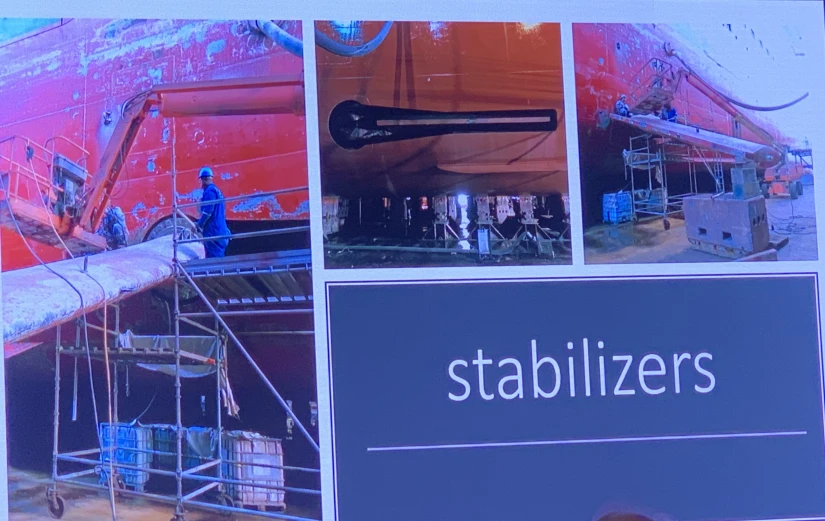
Nevertheless, spirits are high because we are closing in on Japan!! Certainly, one of the highlights of this voyage, where we will visit 5 ports over the next 12 days.
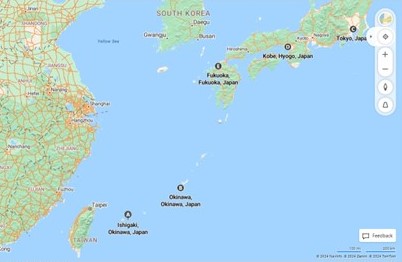
We will leave behind the Western way of life and enter The East, where hieroglyphic-like symbols replace a recognizable alphabet, and chopsticks replace forks. Lots of words now end in “i”; saki, sushi, sashimi, samurai… and Ishigaki… our first island port of call in Japan.
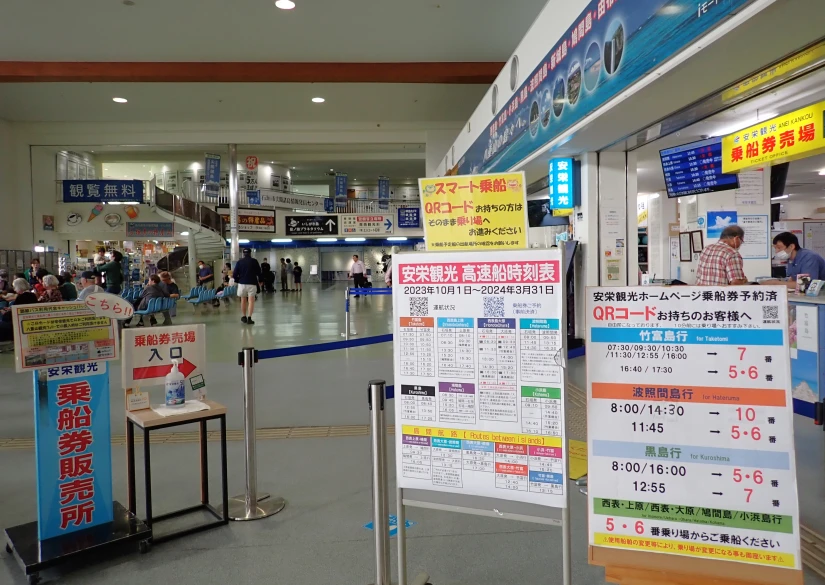
Located about 200 miles east of Taiwan, Ishigaki is the southernmost outer island of Japan, home to 55,000 people.
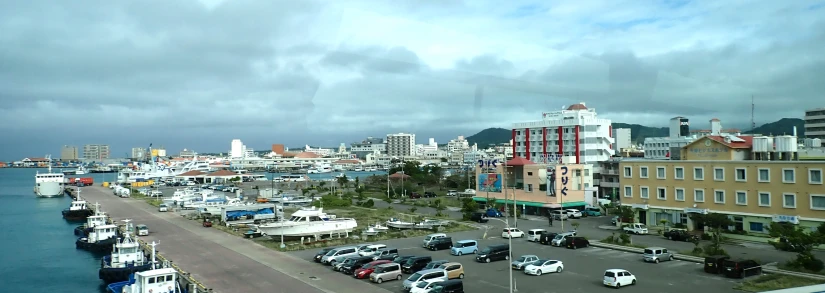
During the summer months, mainland Japanese flock to its beaches and laid-back vibe. The surrounding waters are said to hold a mesmerizing 8 different colors of blue and green. But on this cloudy, late February day it’s just cool enough that we opt for an inland walkabout instead.
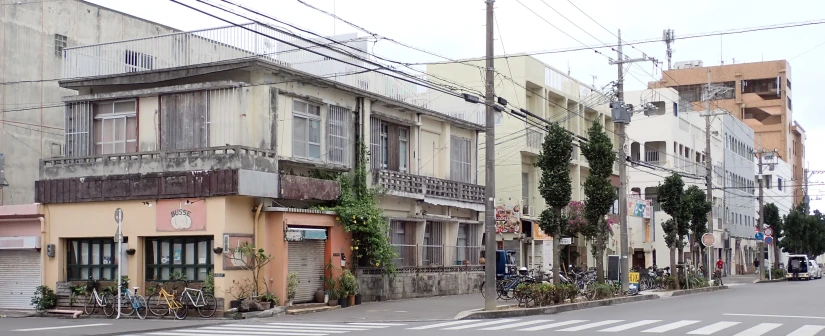
This compact, coastal town was quiet on a Friday morning, and beyond the few commerce blocks, we quickly found ourselves among narrow residential streets. Their typical houses are modest wooden structures with clay tile roofs.
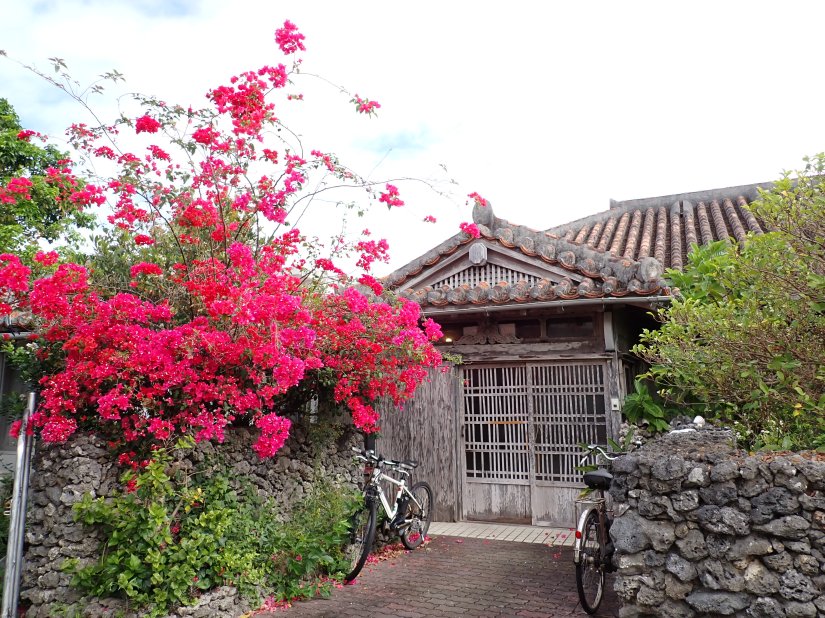
What is immediately apparent, is their love of gardening; flowers, bonsai, water features, etc. Even in the tiniest spaces.
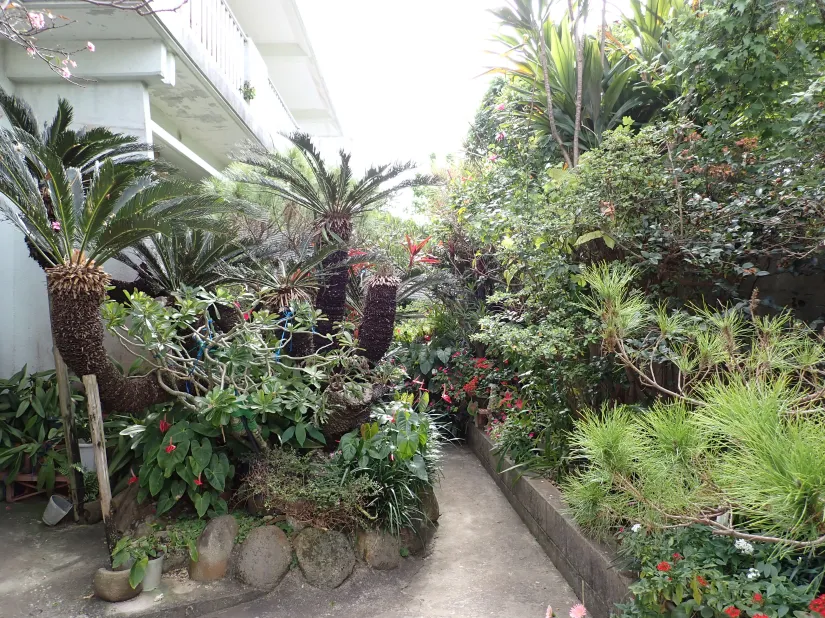
Beyond town, lay their agricultural fields, growing sugar cane, cabbage, and other vegetables.

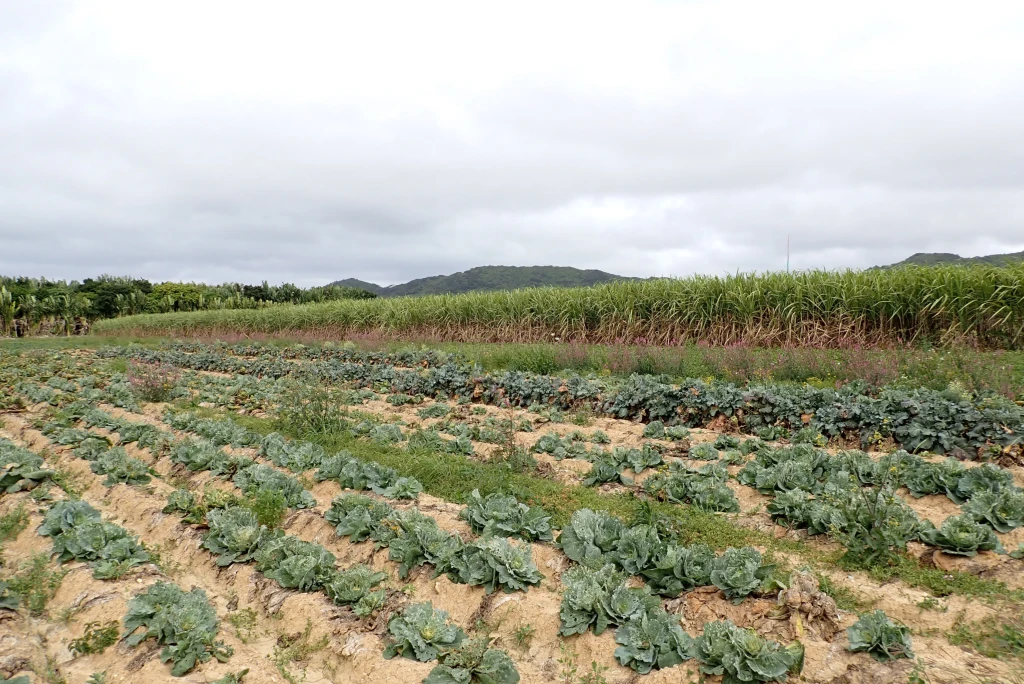
A slight elevation of another mile brought us to one of the islands attractions: the Stalactite Caves. In ancient times, this was actually the sea floor. The movement of the earth’s crust over many years resulted in this vast cave featuring 4 kilometers of paths, though only 600 meters were open to visitors at this time.
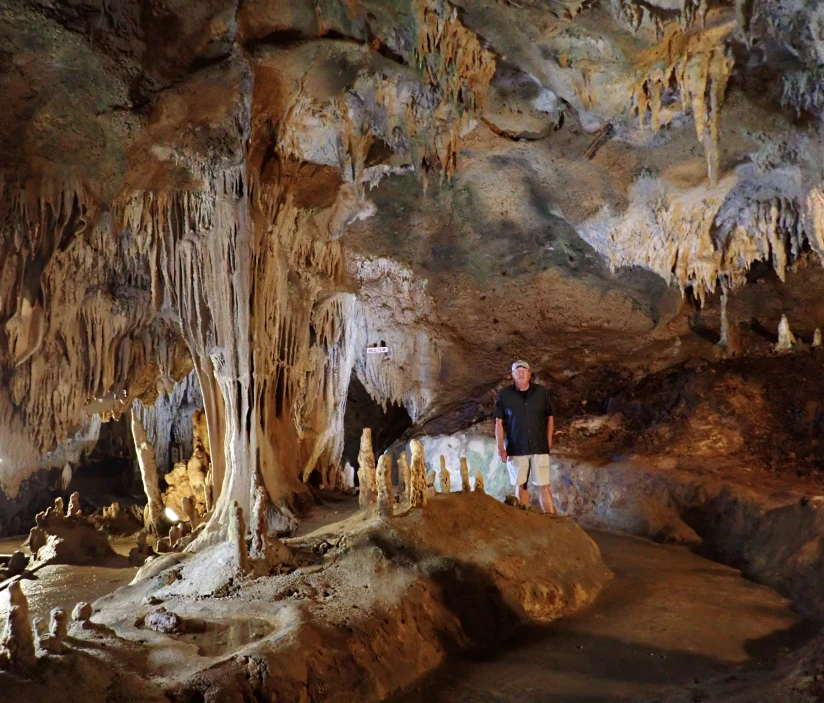
Our timing was lucky; there were no tour buses and we practically had the place to ourselves. These magnificent stalactites grow 1 millimeter every 3 years.
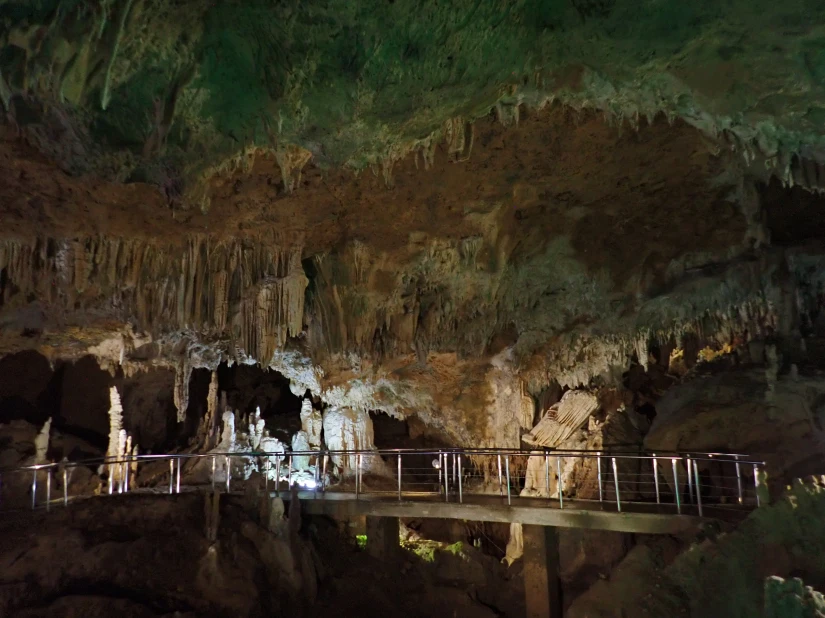
Walking back downhill, we came upon the Noodle Place and enjoyed a traditional lunch of pork and noodles. Very delicious and satisfying!
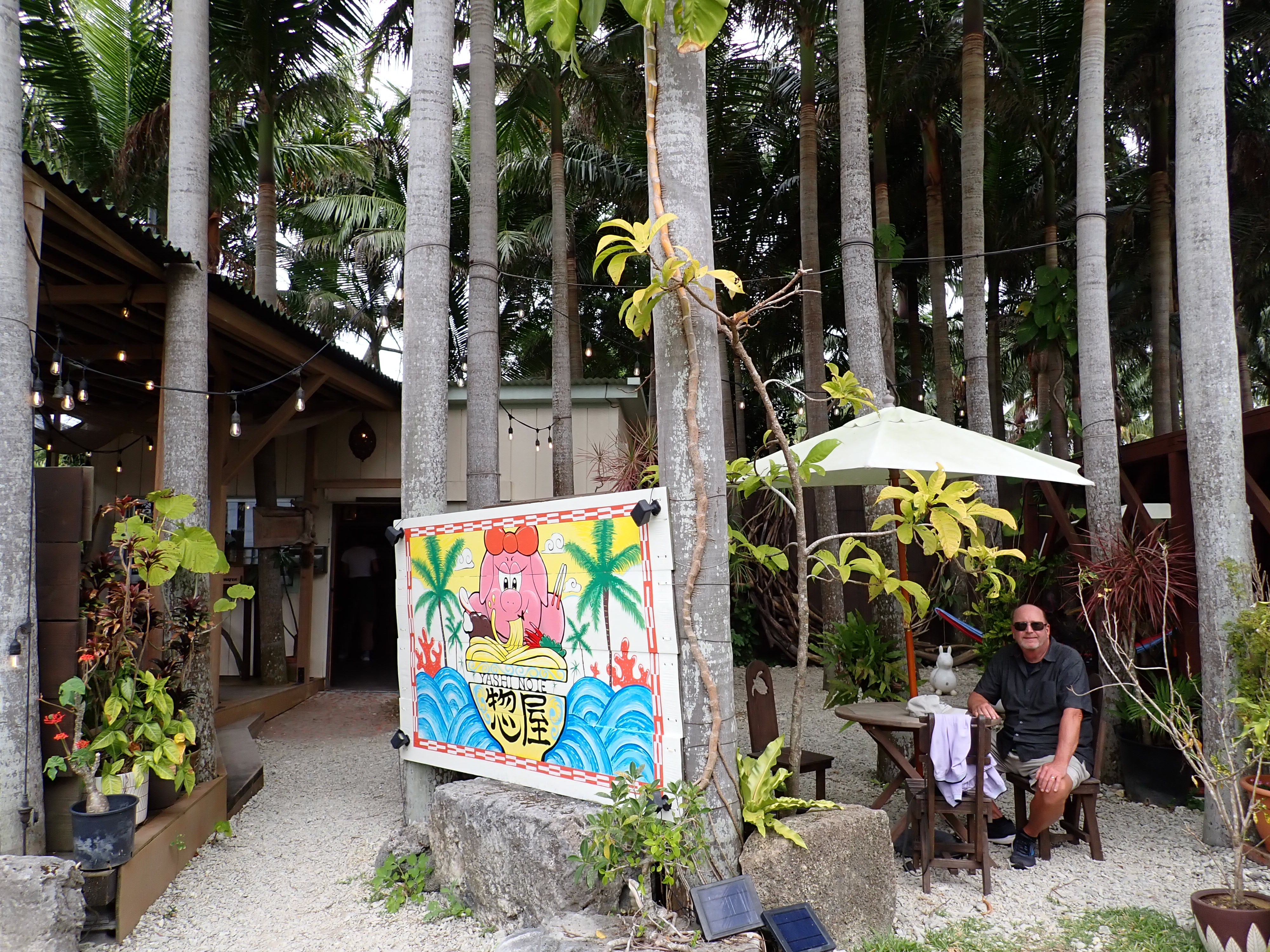
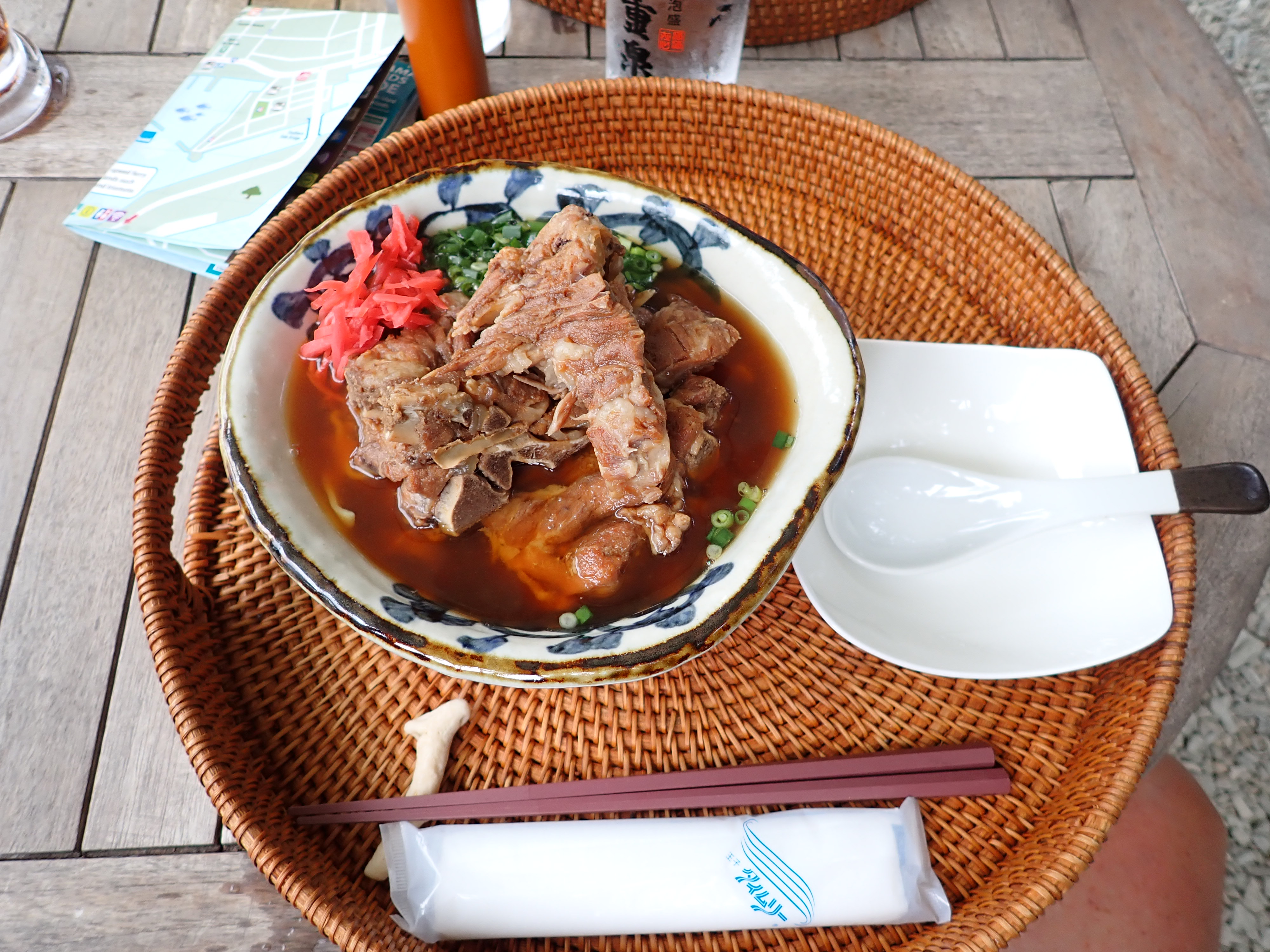
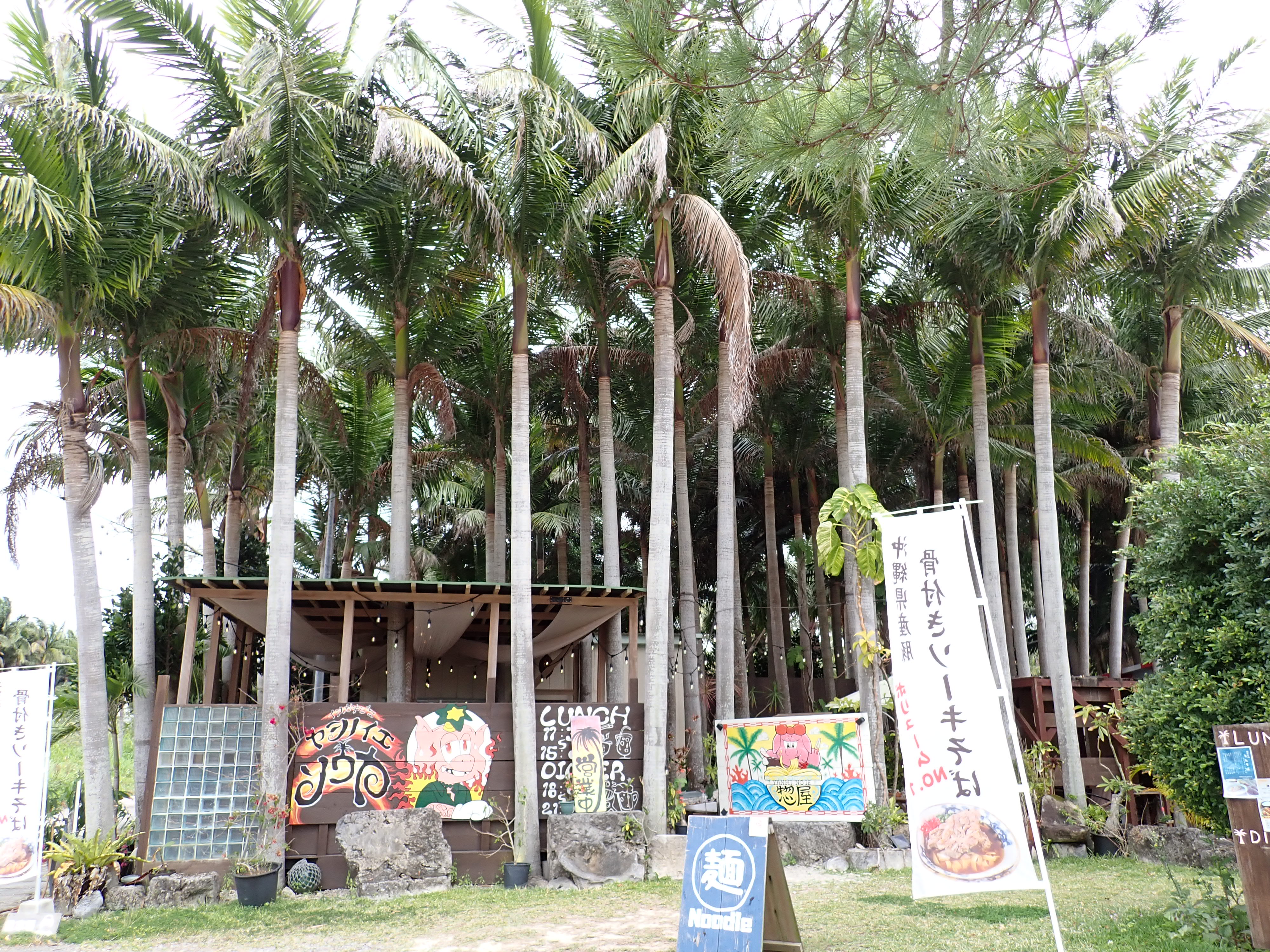
Returning to town, we explored the Toriji Buddhist Zen Temple (along with its mean-looking Guardian!) and also the Gongen-do Shinto Shrine.
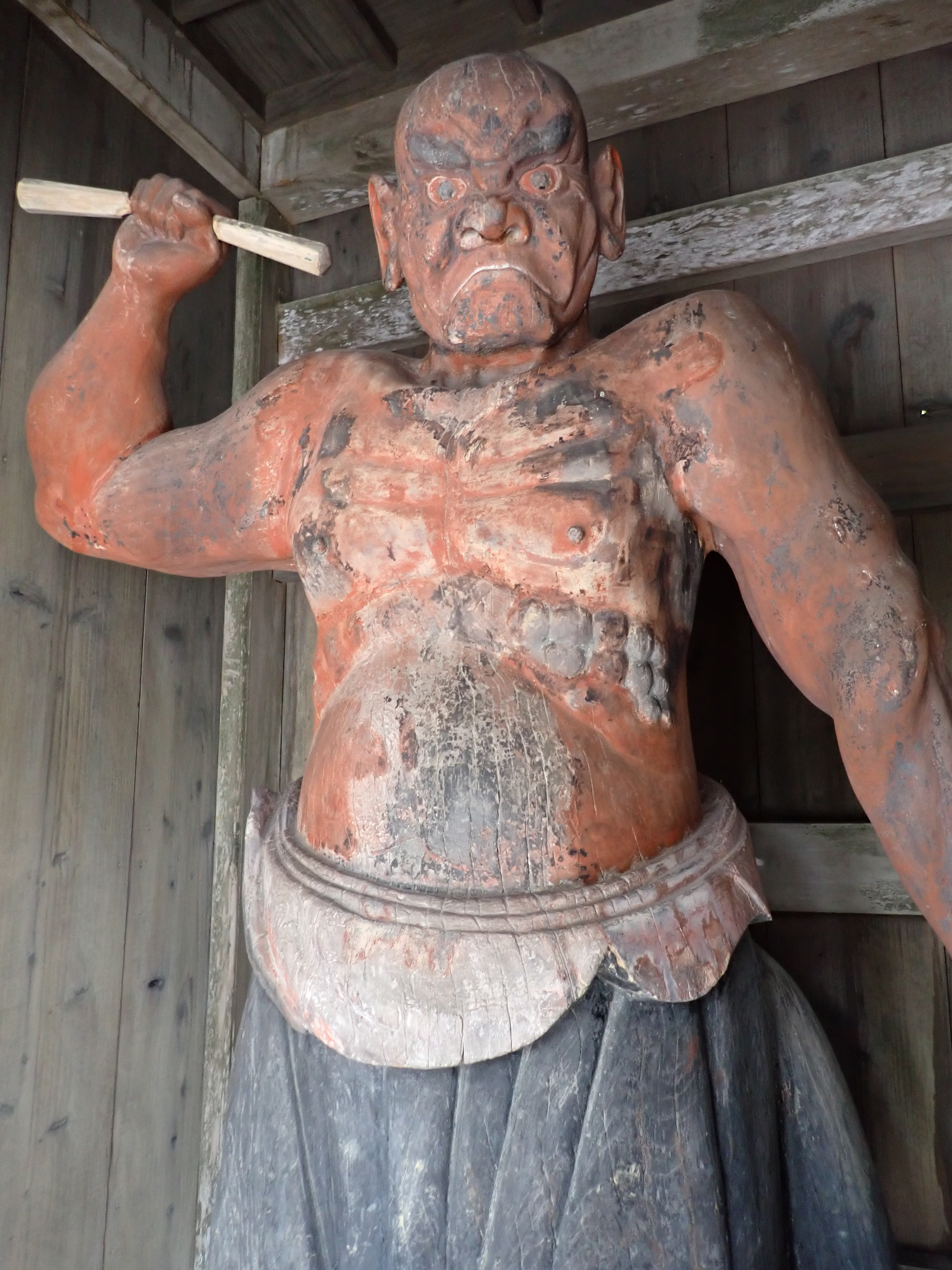
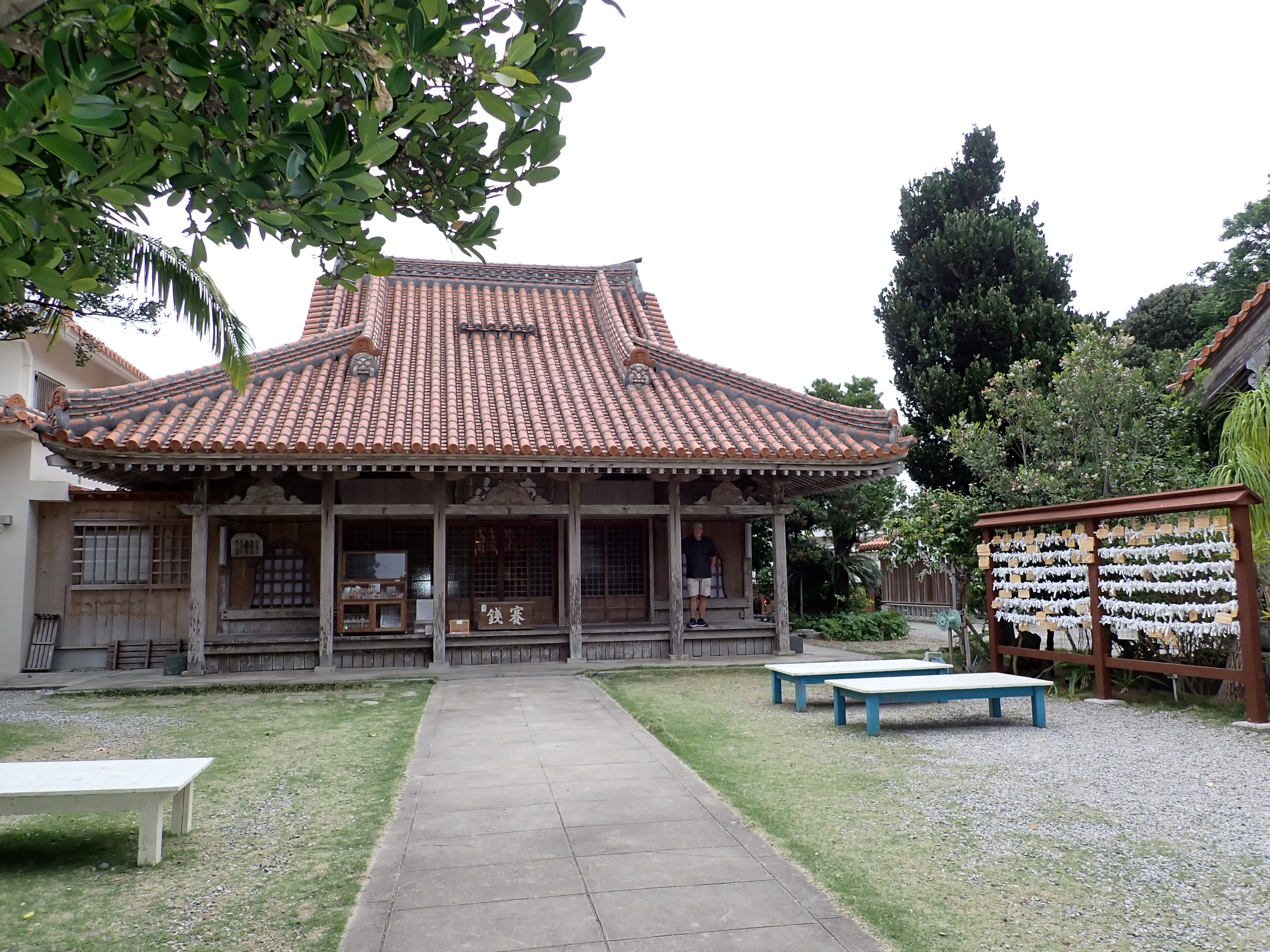
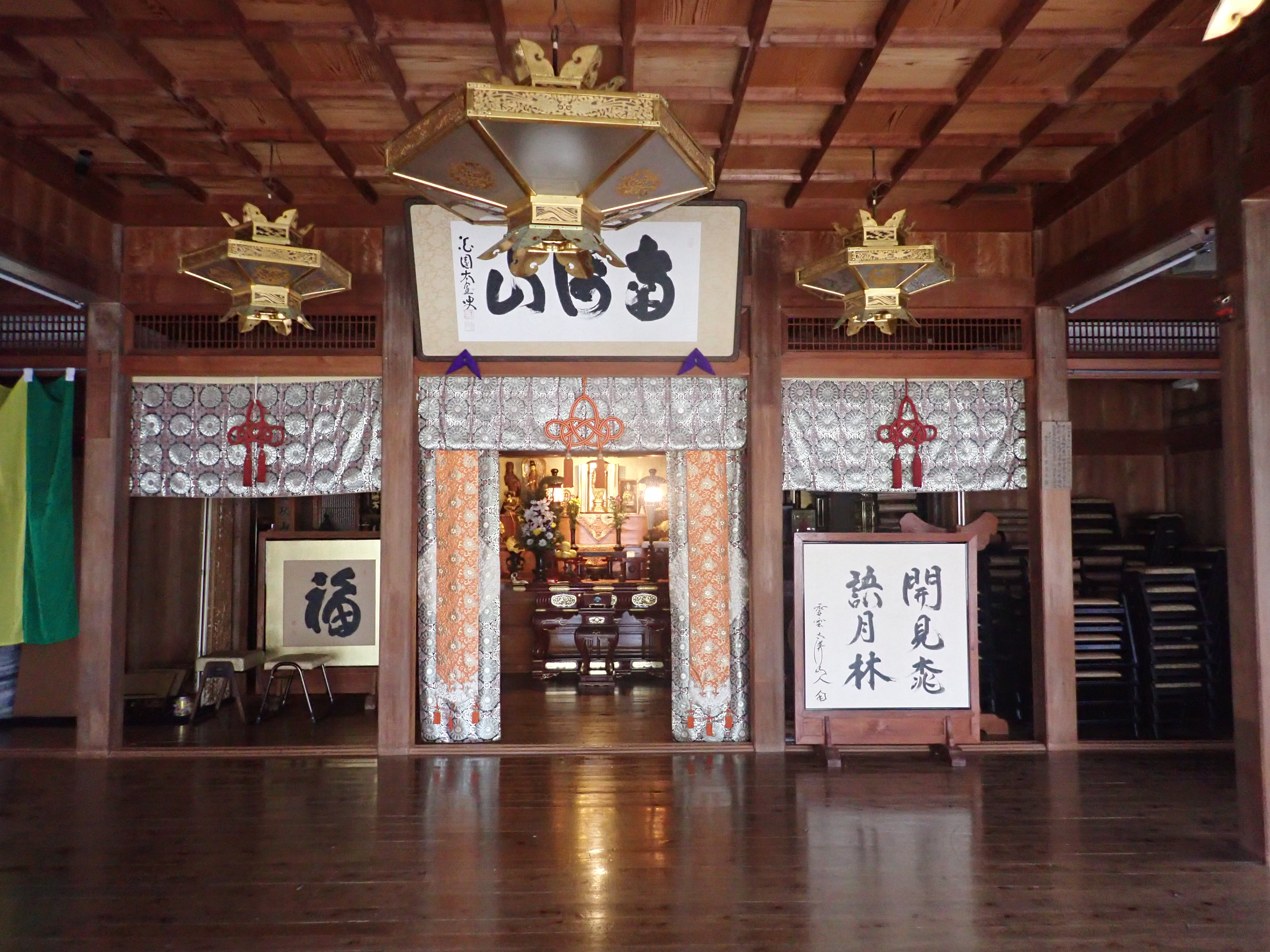
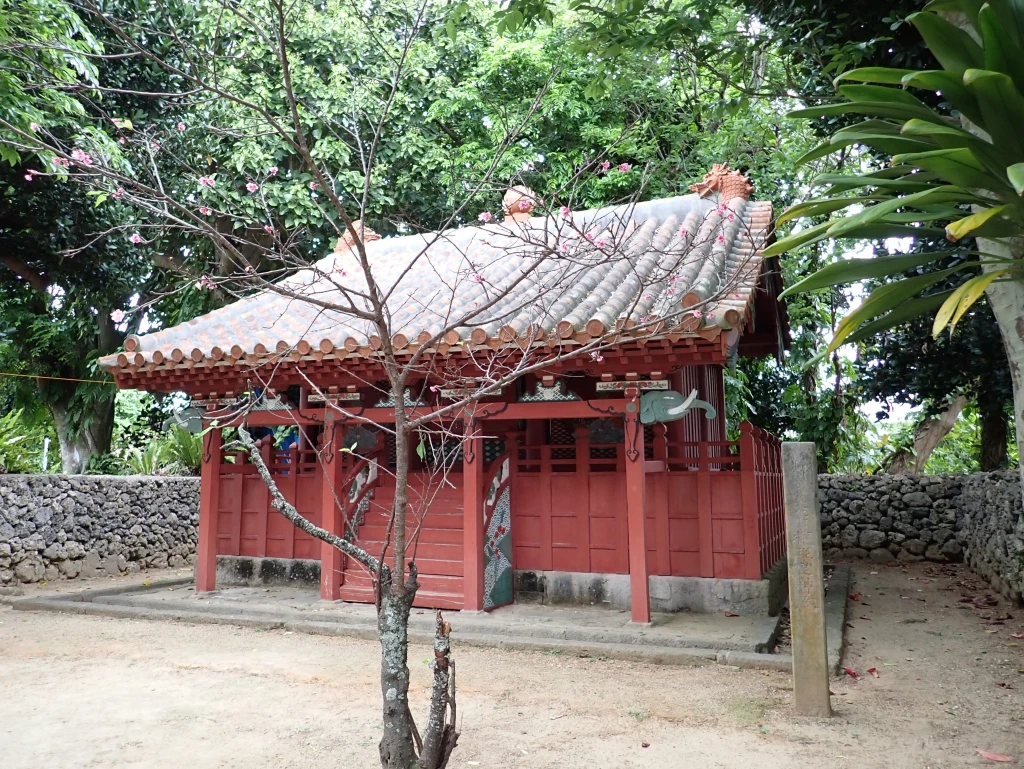
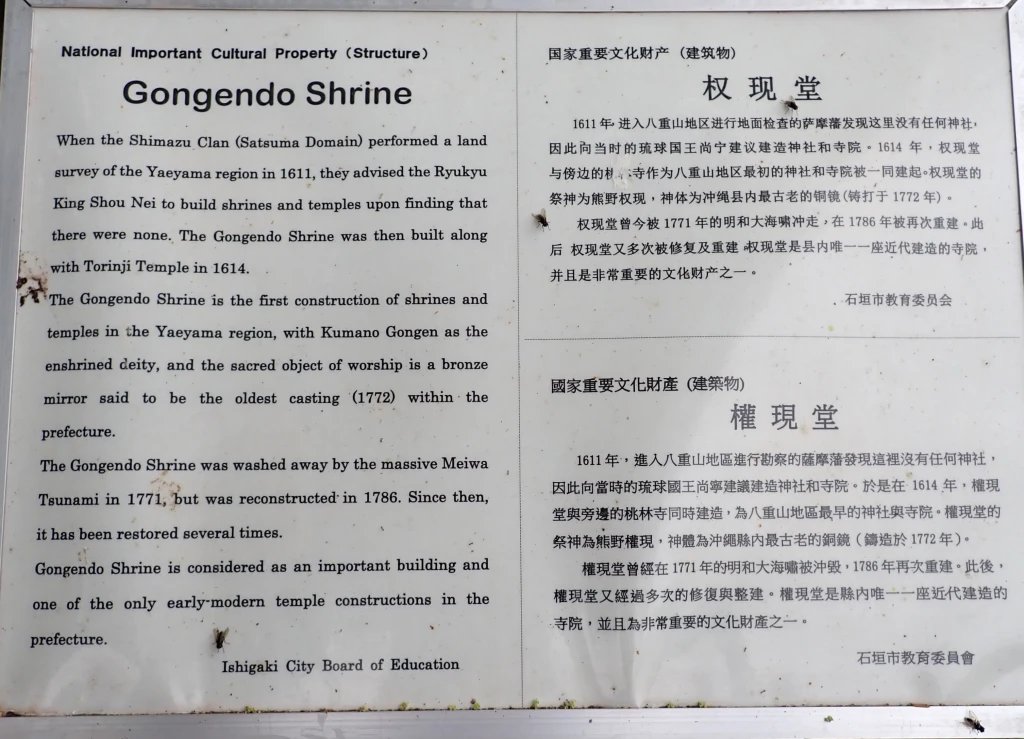
And it’s always a bit of an adventure as to what you may find in the local stores.
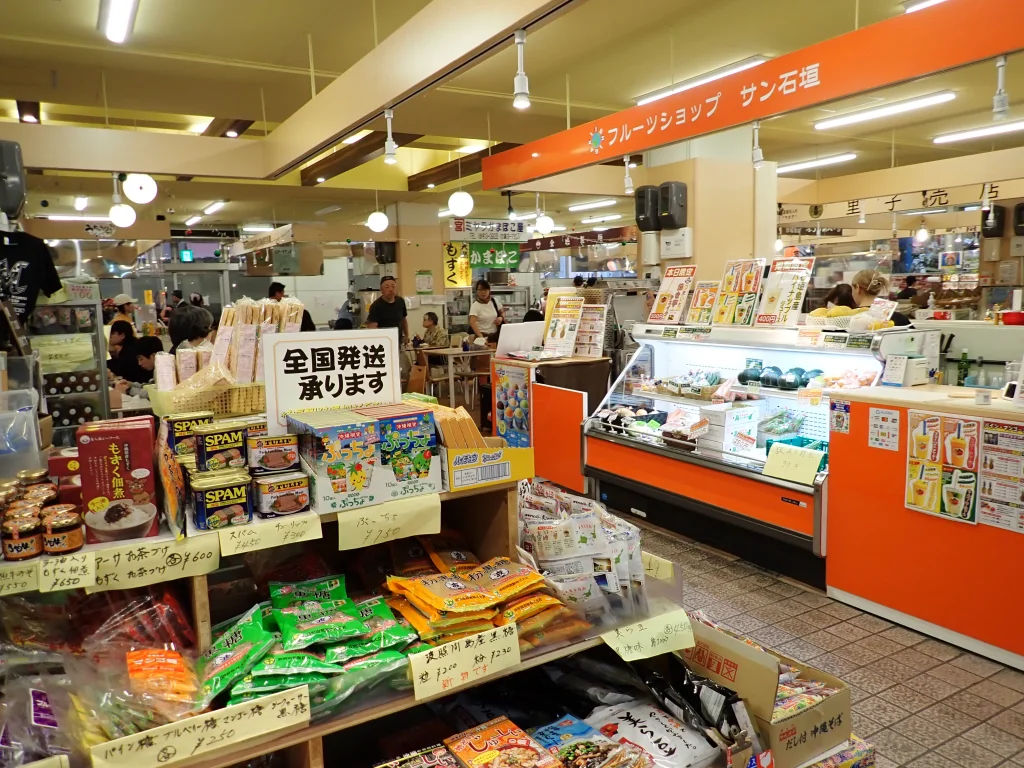
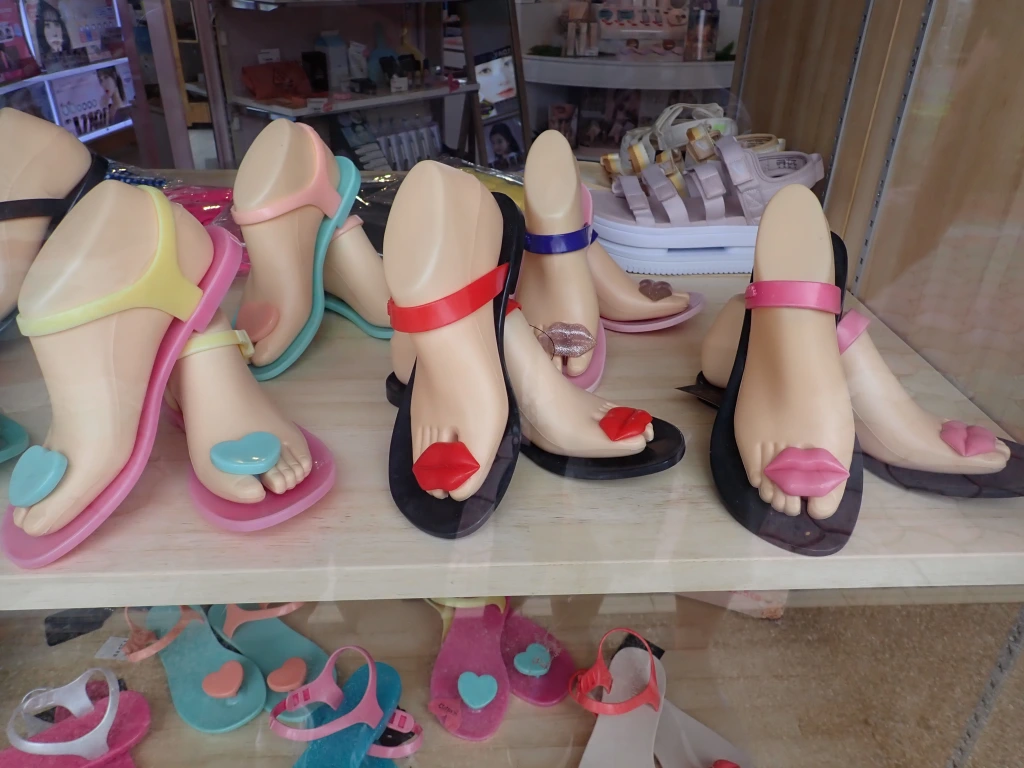
The clouds and drizzle (as well as our tired feet) convinced us to go back to ship after almost 8 miles.
An overnight, northward passage of 237 miles brings us alongside the Naha Cruise Terminal on the main island of Okinawa. There are 160 islands that make up the prefecture of Okinawa, with a population of 300,000, including 30,000 US soldiers. With an abundance of WWII history, it’s no wonder that 6 million people visit here annually. We are looking forward to our 2-day visit.
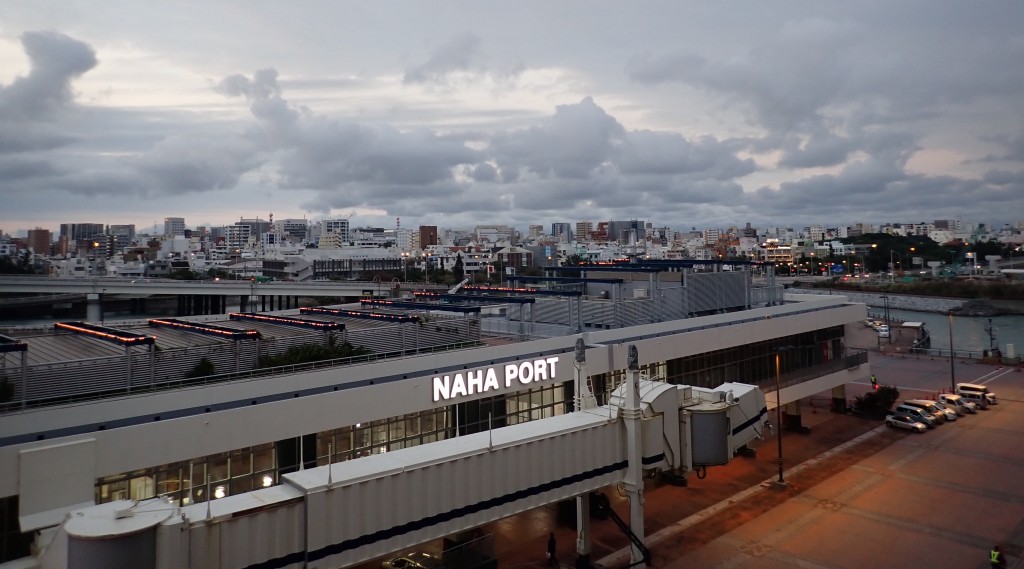
It’s also the birthplace of Karate. And Okinawan’s have the longest lifespan in the world. And it’s a place where Shisa Lions are protective guardians, said to be found only on Okinawa and its islands. The open-mouthed lion wards off evil, and the closed mouth lion keeps good within.
Our first day to explore the town of Naha on Okinawa is partly cloudy with temps in the high 50’s. We are just a few weeks away from the greatly anticipated cherry blossoms of Japan, but we find an occasional early bloomer in this southern region.
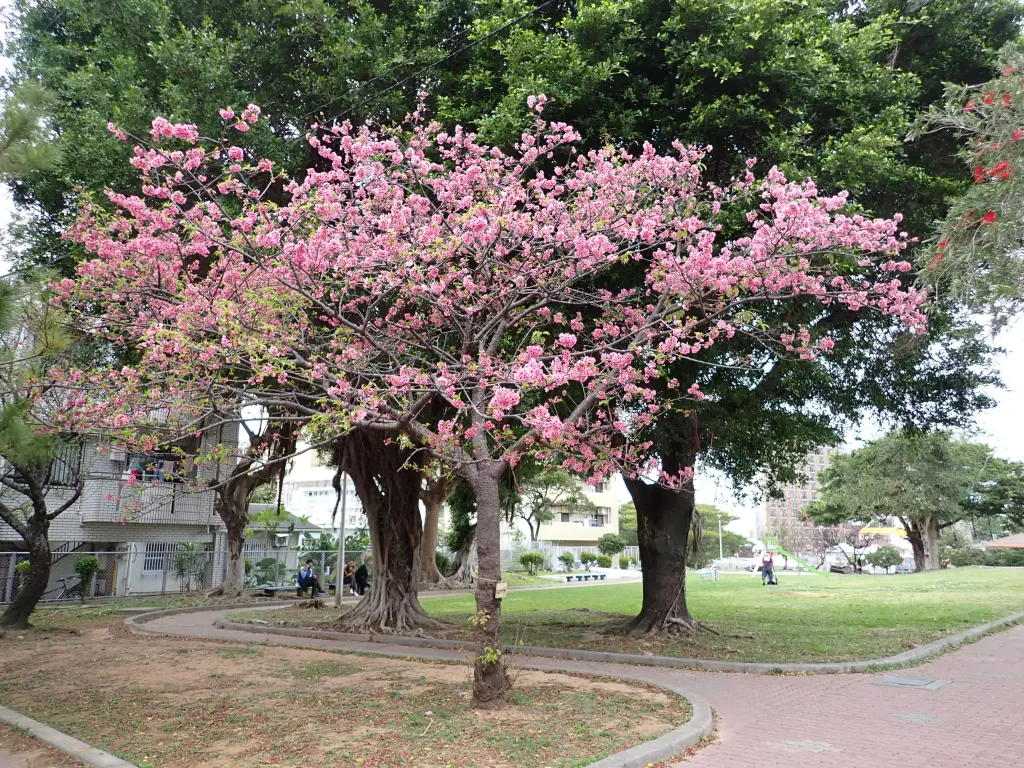
The peaceful Fukusyuen Gardens were a delight to wander. The Japanese are so skilled at creating Zen-like spaces. This walled garden was a sanctuary amidst an urban area.
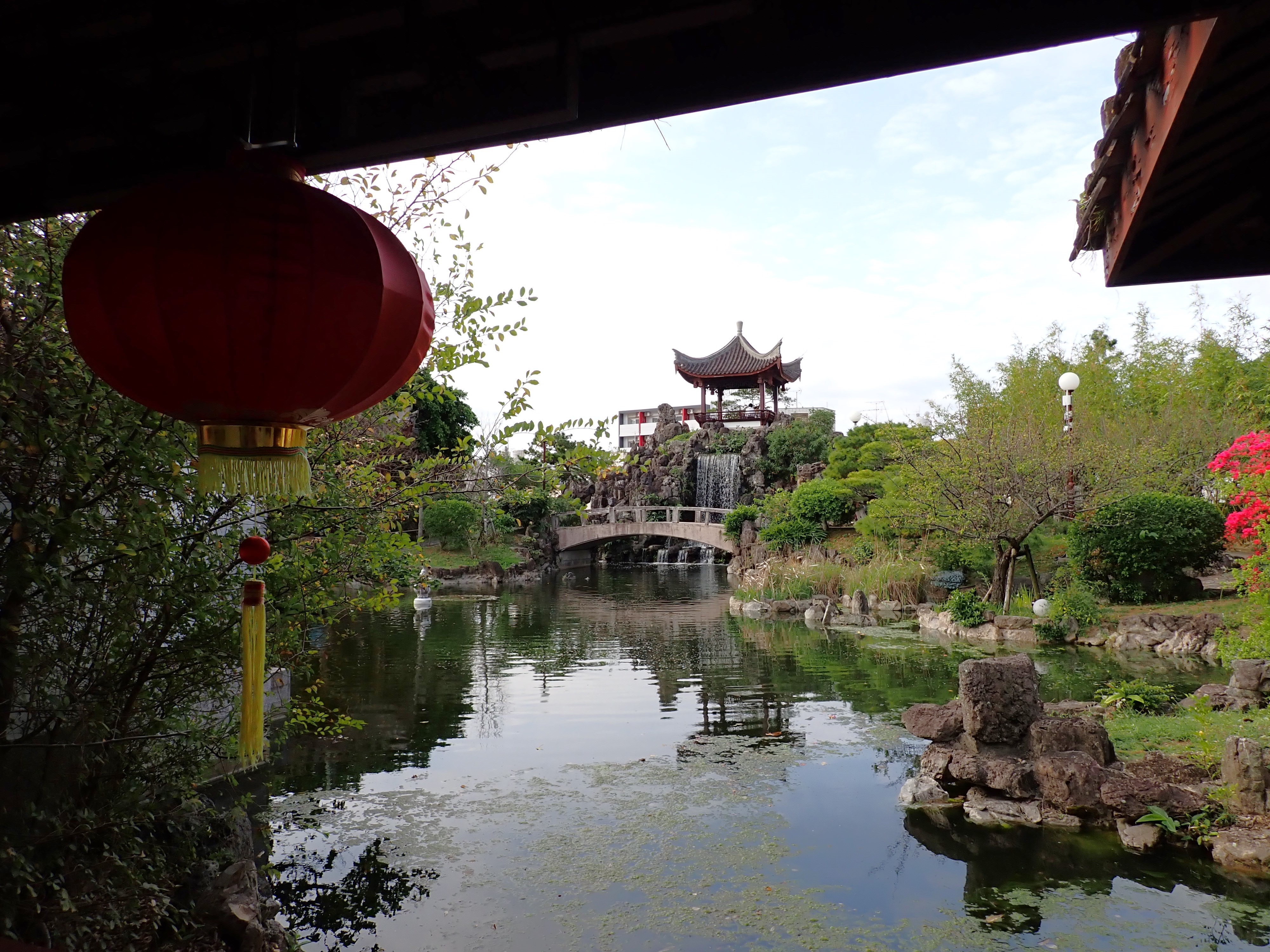
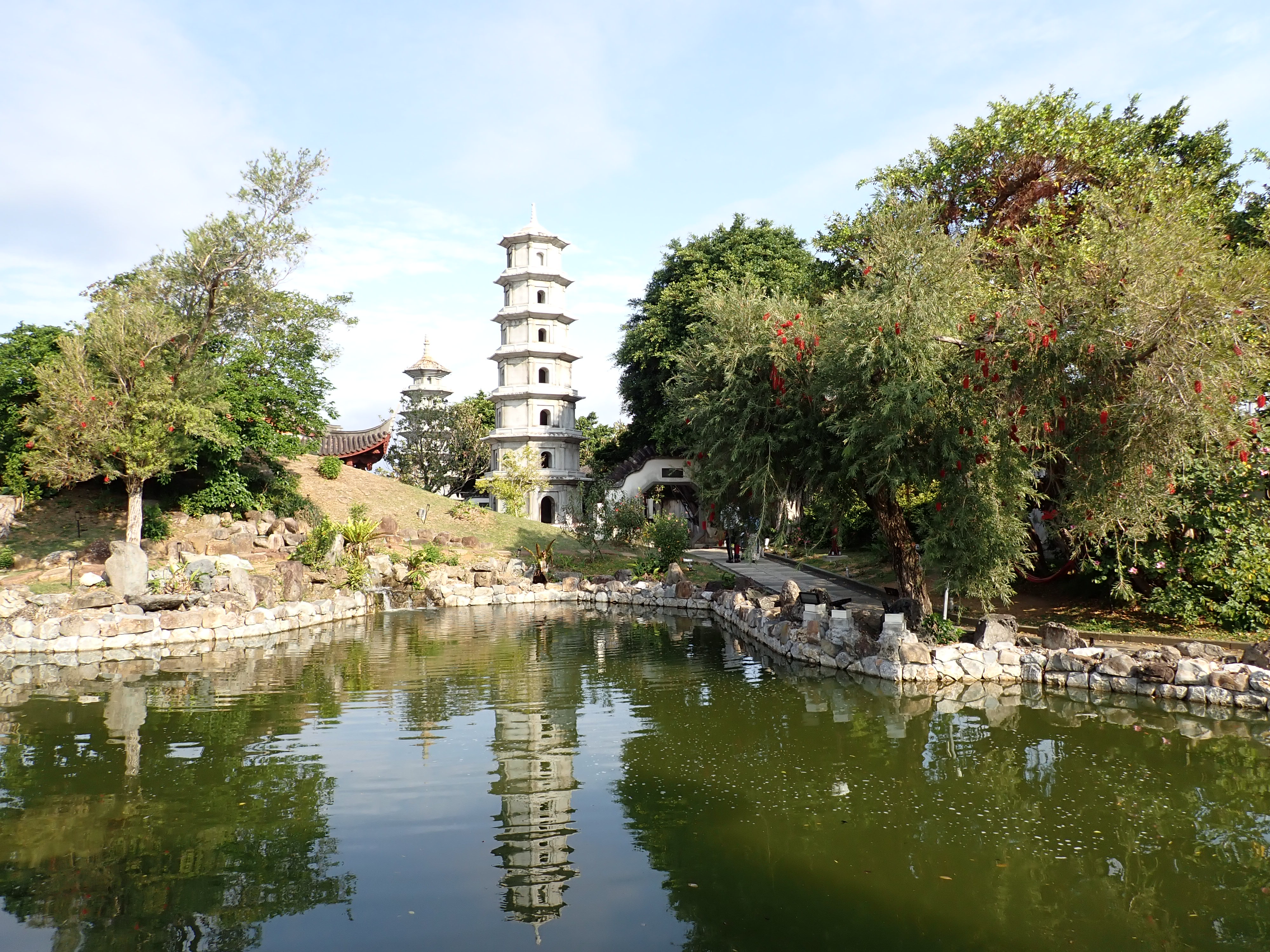
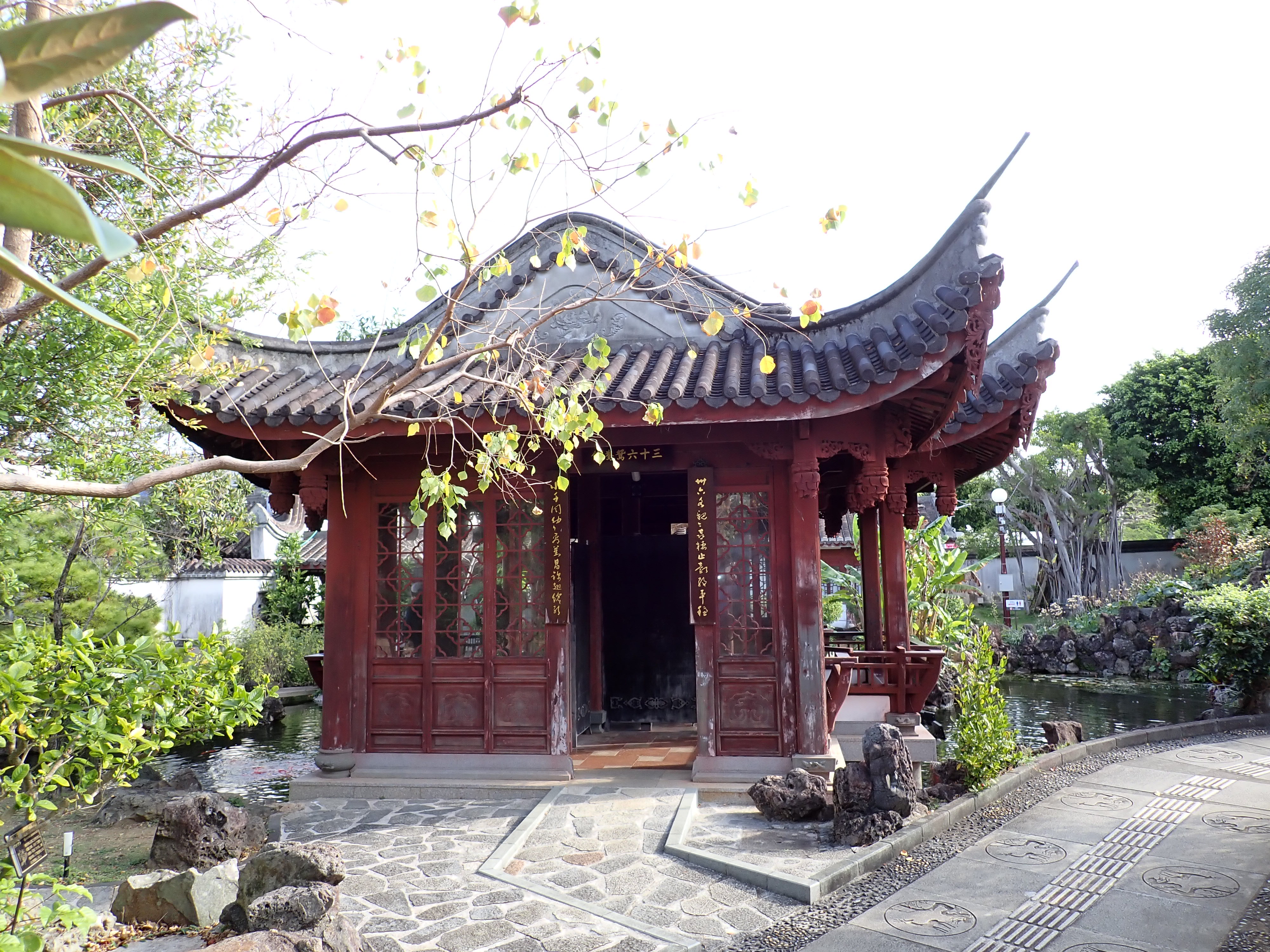
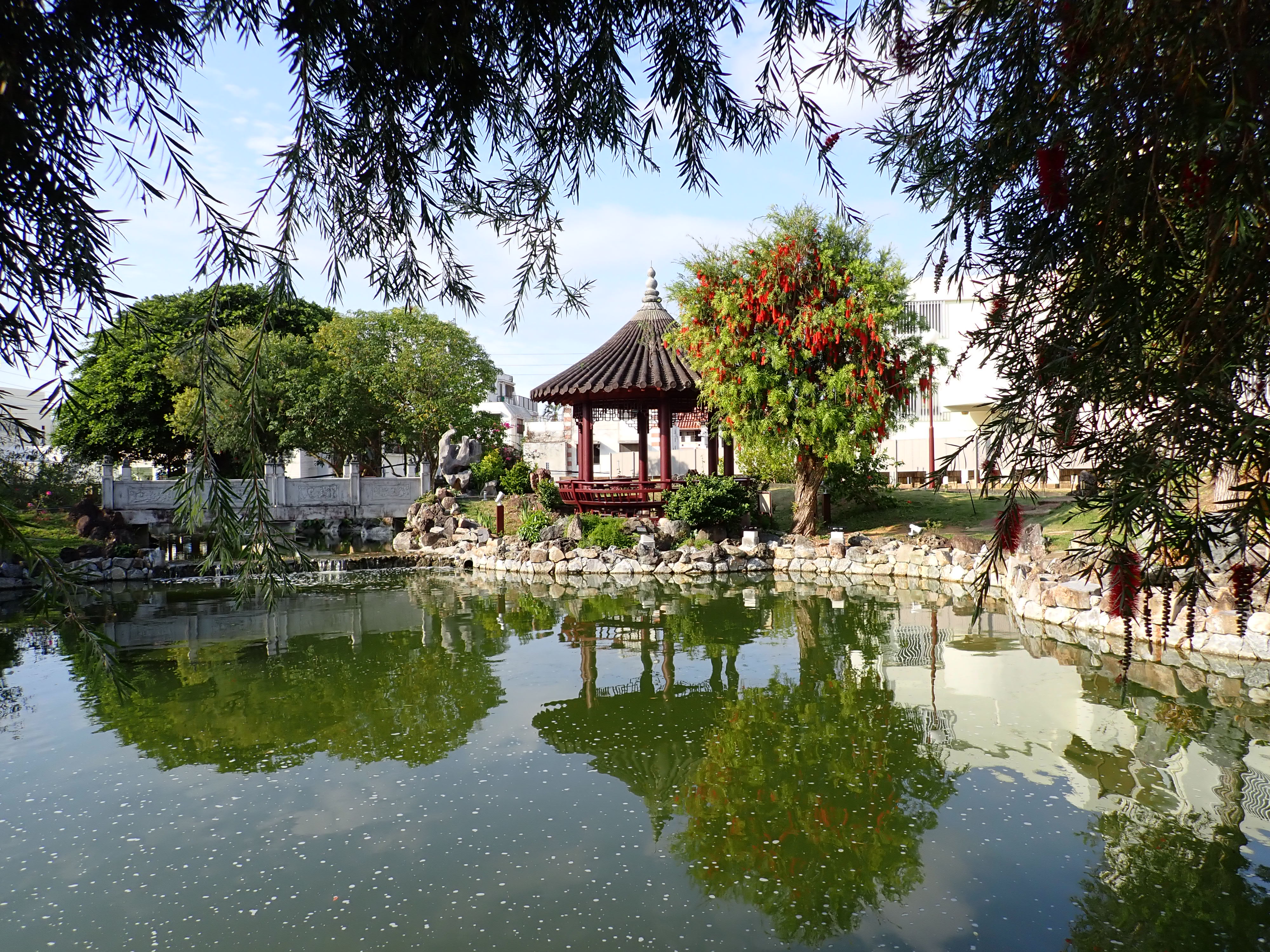
Kokusai-dori Street or “International Street” is the main destination for shops, food, nightlife, and street musicians. It even becomes strictly a pedestrian street on Sundays. Hidden corridors that branched from the main street held inner markets and more treasures.

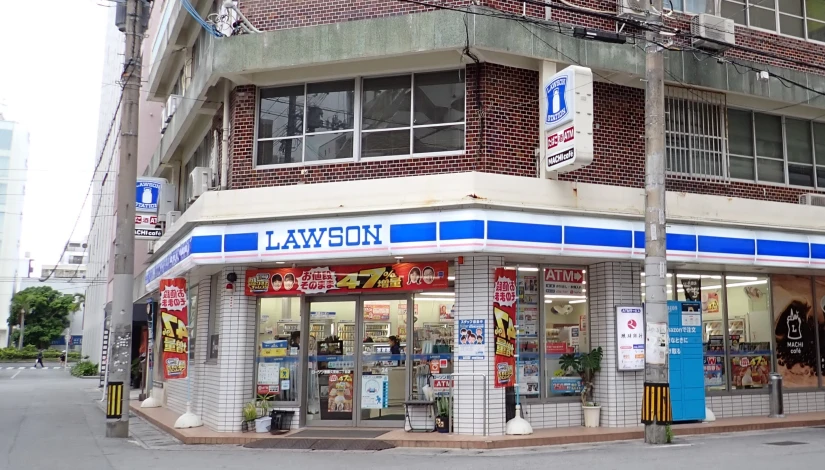
We found a small restaurant with 2 tables adjacent to the sidewalk for morning tea. A great spot to people watch! Then revisited it in the afternoon for lunch (Taco Rice, Agu Dumplings and chicken stir fry) and the local Orion Beer.
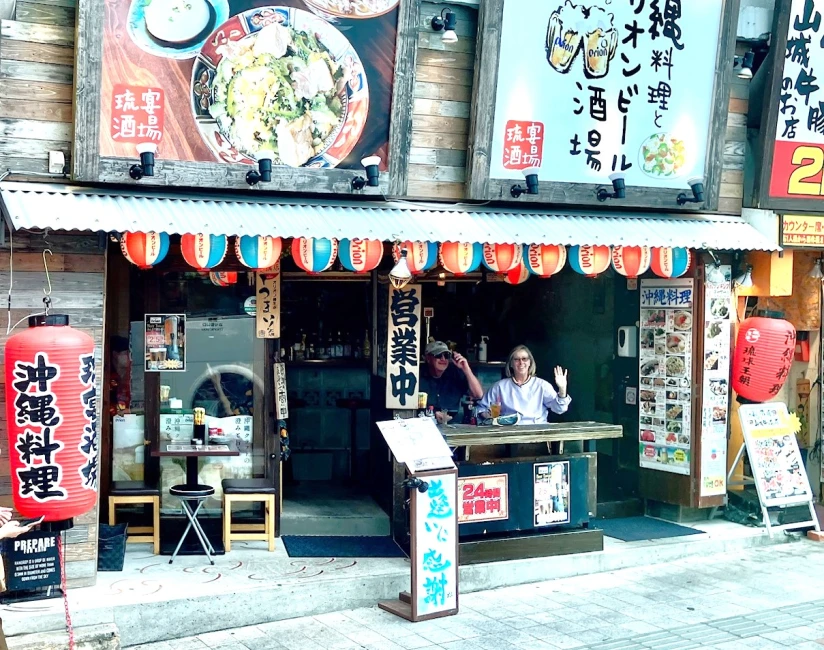
Another specialty of Okinawa is snake sake called habushu (https://en.wikipedia.org/wiki/Habushu). And yes, those are real snakes soaking in this liquor!
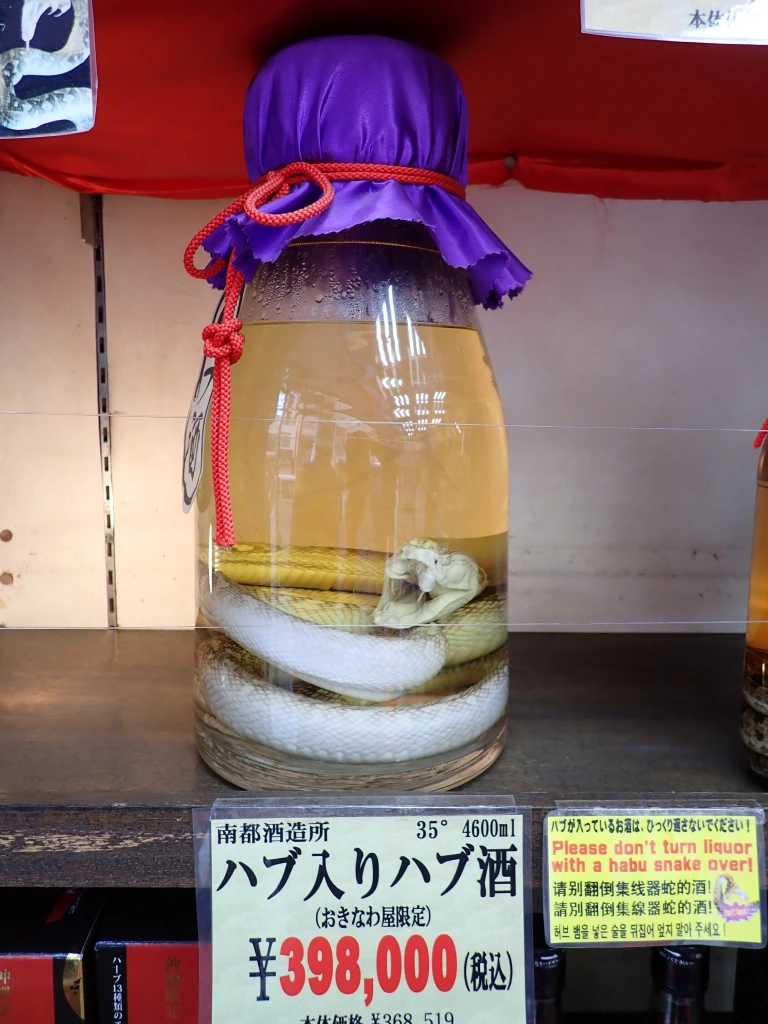
Zuiderdam remains overnight in Naha. Nine of us, including the ship’s Captain and his wife, went to a traditional Okinawan restaurant ashore for dinner.

Upon arrival, we removed our shoes and entered the dining area of rice-mat flooring where we were led to Japanese-style, low-rise table and sat on floor cushions.
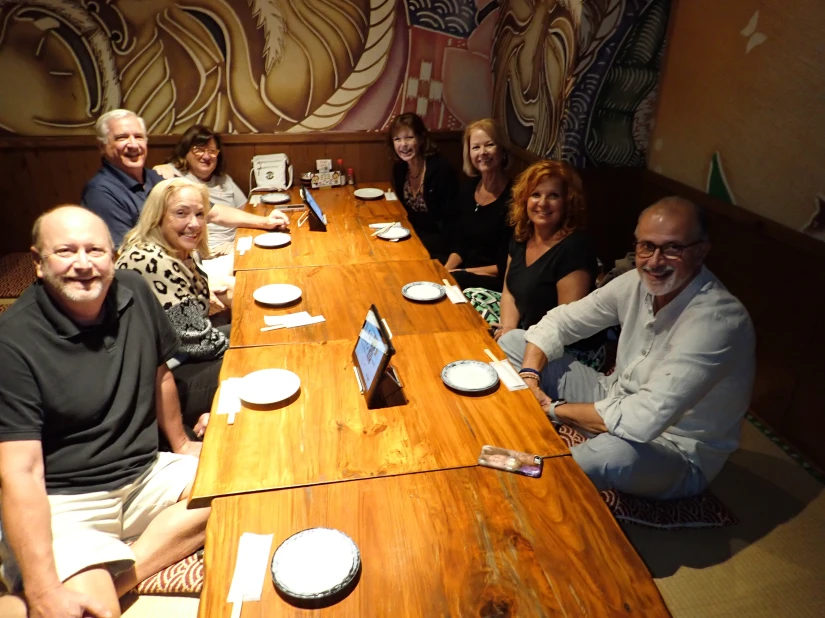
We ordered food while listening to two kimono’d musicians who performed on traditional instruments. A shamisen, is a 3-stringed instrument and the Taiko, a Japanese drum.
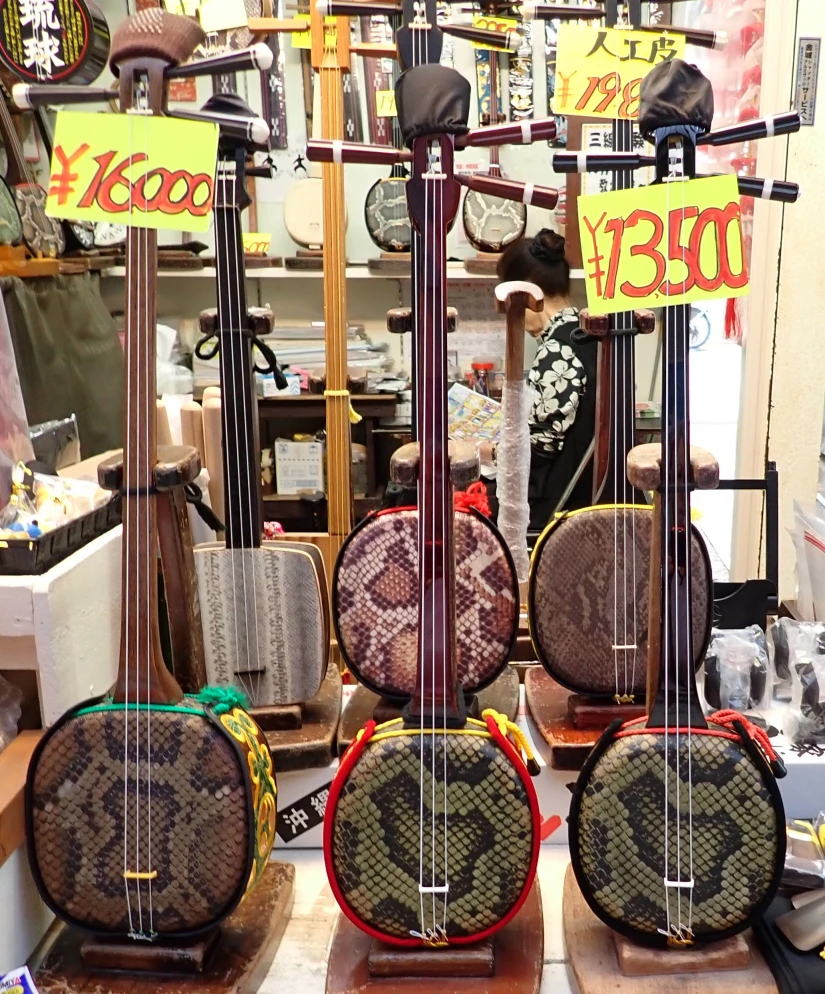
They sang Japanese folk songs, as all the patrons participated by signing and clapping to the music. Our group were the only Westerners and we fumbled along as best we could, gaining favorable looks and smiles from the locals.
Interesting and sometimes unrecognizable food was delivered to our table, which we also fumbled with! It was all great fun and quite an educational experience. Afterwards, we walked a block to an Irish Pub for Guiness, stories and left a US dollar signed by all of us to add to their dollar-plastered interior walls.
Okinawa (Naha) Day 2 – Or second day in Naha, we awoke to a colder and windier day with drizzle. Yesterday, we had noticed a bunch of massage spas along the main street and decided today’s cooler and rainy day would be best spent on some pampering. We taxi back into town, enjoyed a Starbucks coffee, then walked to our massage for our appointments. It was a fantastic 60-minute massage for only $27!

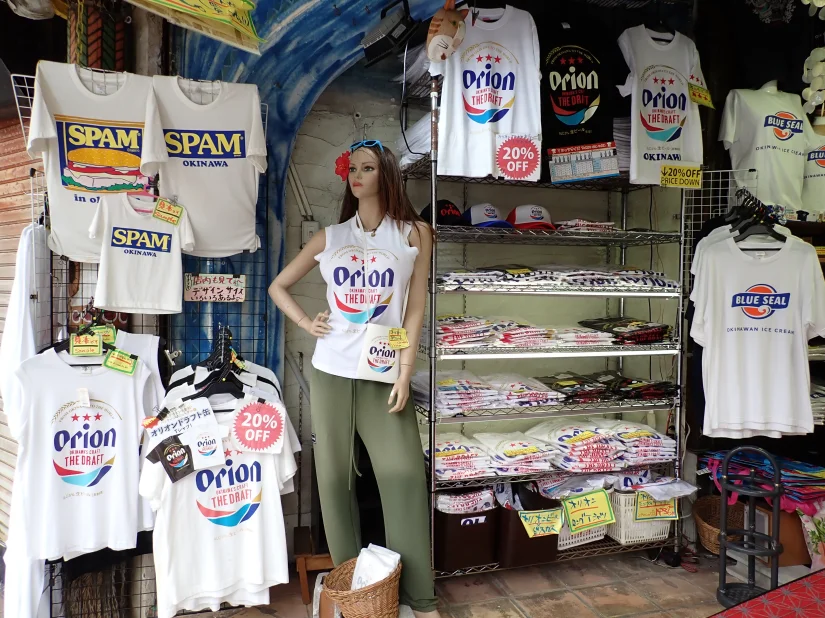
For a ‘working souvenir’, we returned to knife store to purchase a Tokuzo chef’s knife with Tosa blade for our kitchen. We love to cook and look forward to using this superior knife for years to come. Our ship will store it until we disembark.
Departing Okinawa, Zuiderdam sets a northeasterly course for Tokyo, 871 nautical miles away. Two days at sea to rest up!
As the moon was setting, the early morning sun shone on Mt Fuji as we slowly cruised into the Port of Tokyo. We have journeyed far enough north now, that the mornings are brisk in the 40’s; afternoons in the 50’s.
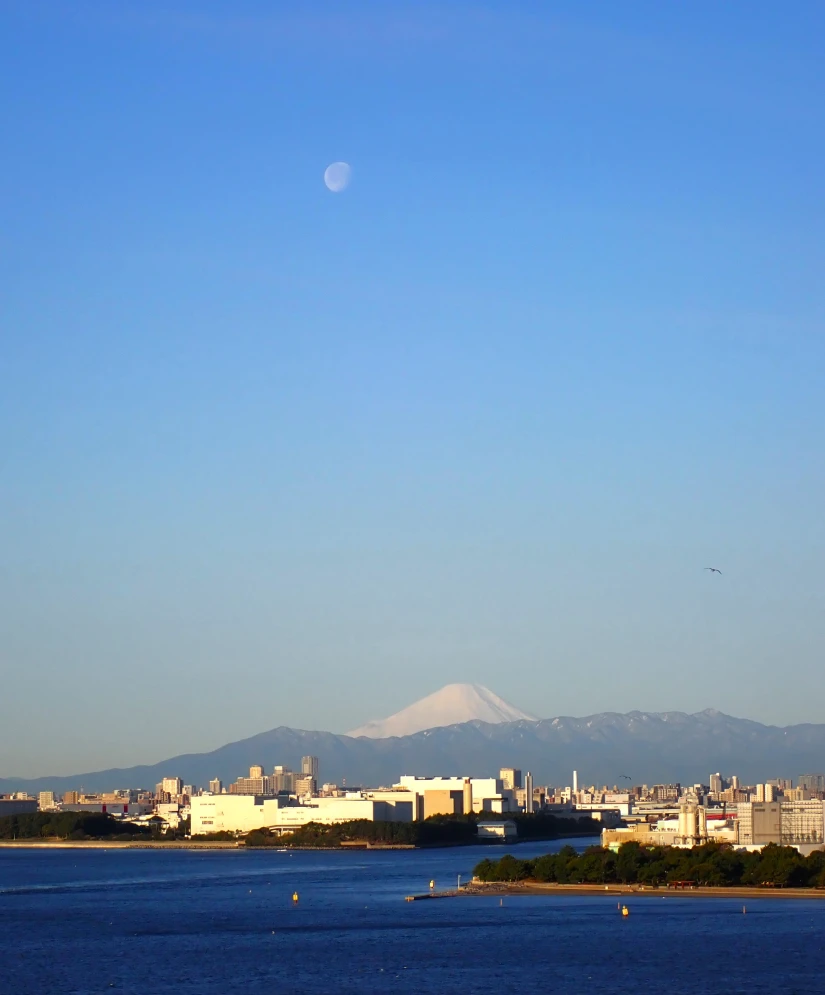
Downtown is a sprawling forest of skyscrapers, brick, glass, concrete and steel, yet each vertical rectangle boasts its own design characteristic. Very orderly and spotless. We are fortunate to have two days here to explore.
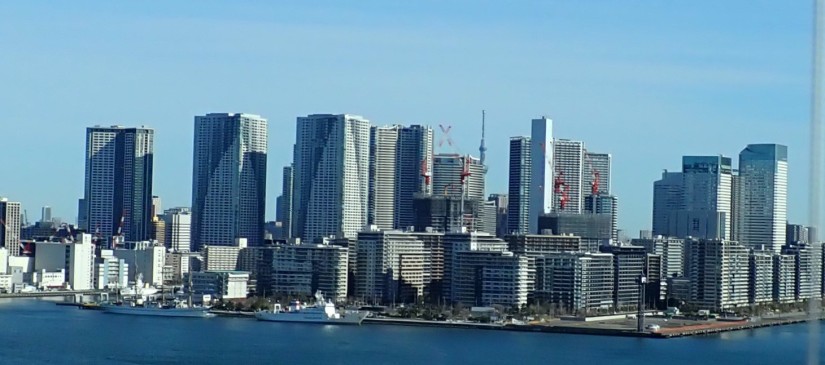
Given the vastness of Tokyo, we thought taking a “Best of Tokyo” excursion would provide a good first-day overview of this metropolis of 37 million. Consider not only the necessity of infrastructure needed to support this dense population, but also the unique need of the melting pot of ethnic groups. Incredible engineering is everywhere you look. And moving armies of people each day, is a brilliant mass transit system. Intuitive signage guides you through everything from vending machines to bathrooms.
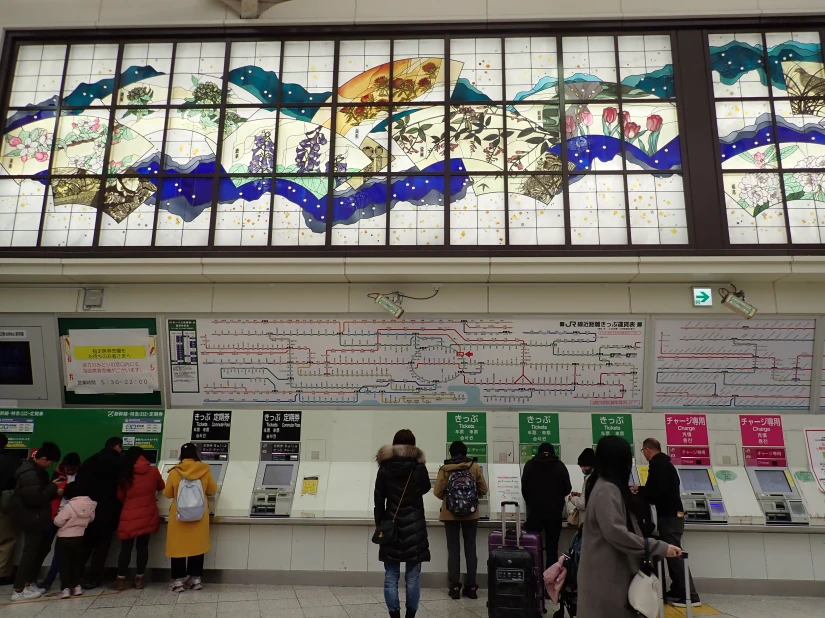
Speaking of which, the Japanese have taken bathrooms and toilets to a level of engineering that is worthy of sharing. Here is a typical control panel of your options.
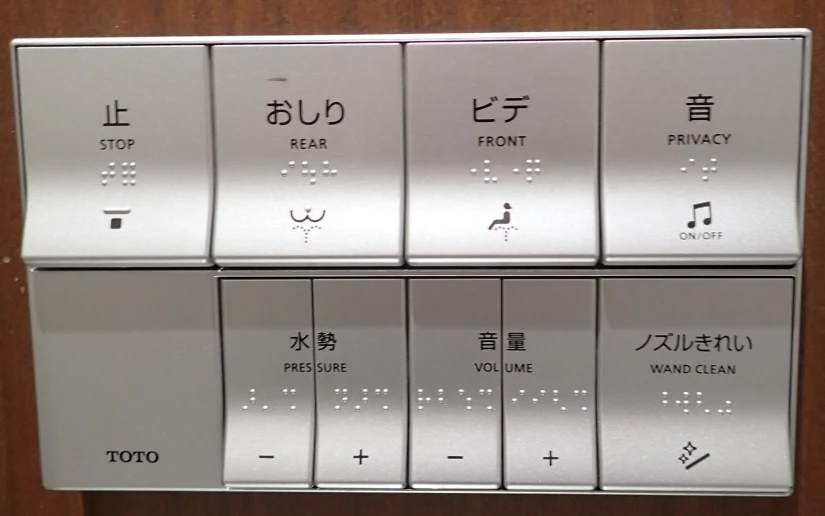
Seats automatically raise and lower, are heated and self-cleaning. Several options are available for the bidet feature. And maybe the most important to the Japanese is the “privacy” feature that provides the background sounds of either soft running water or birds chirping. Aroma therapy may also be available in your choice of scents.
As today’s tour would take us to a shrine and a temple, our guide provided some basic education of the differences, as well as Shinto and Buddhism, the two of the most popular religions in Japan. Buddhism originated in India and was introduced to Japan in the 6th century, while Shinto is a religion that is indigenous to Japan. They are both unique and have their own distinctive features and belief system. In very simple terms, Shinto is an animistic religion that believes that every living and non-living thing possesses a spirit. Whereas Buddhism is a religion that focuses on the teachings of Buddha and the path to enlightenment.

Our first stop is the Meiji Jingu Shrine (Shinto).
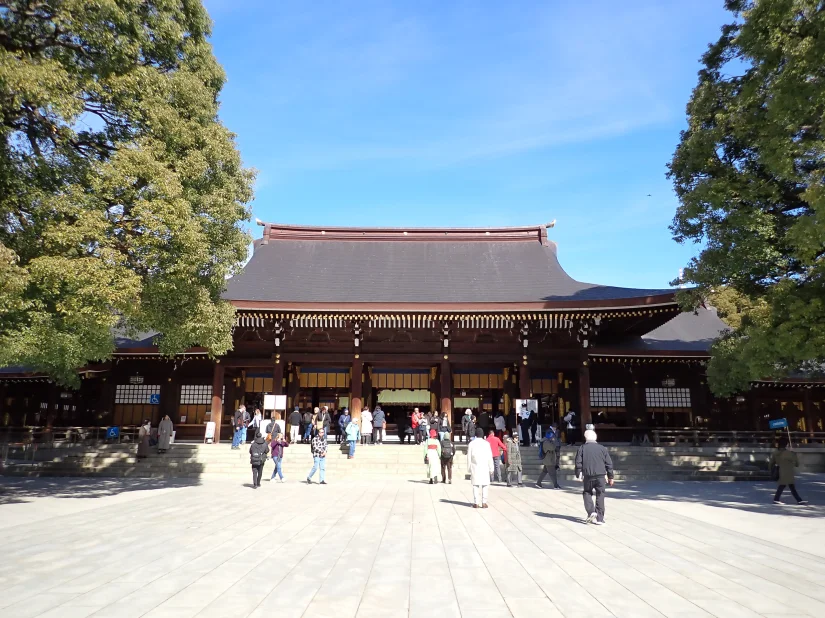
We are welcomed by its twin 40-foot-tall Torii gates that are the tallest in Japan and made of cypress.
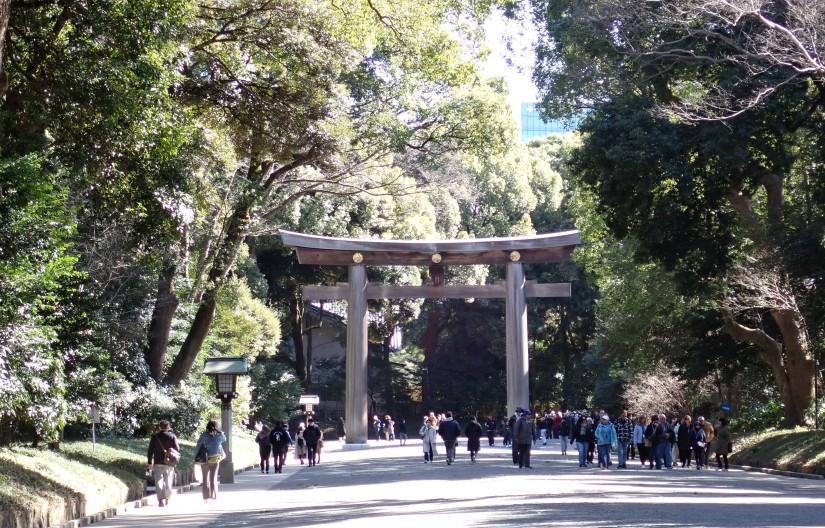
The densely wooded grounds resulted from the 100 trees planted in 1920, such as cypress, oak, orange. Including two “Marriage Trees” of camphor. Votive tablets are available for those who wish to write prayers and gratitude toward the deities enshrined in Meiji Jingu.
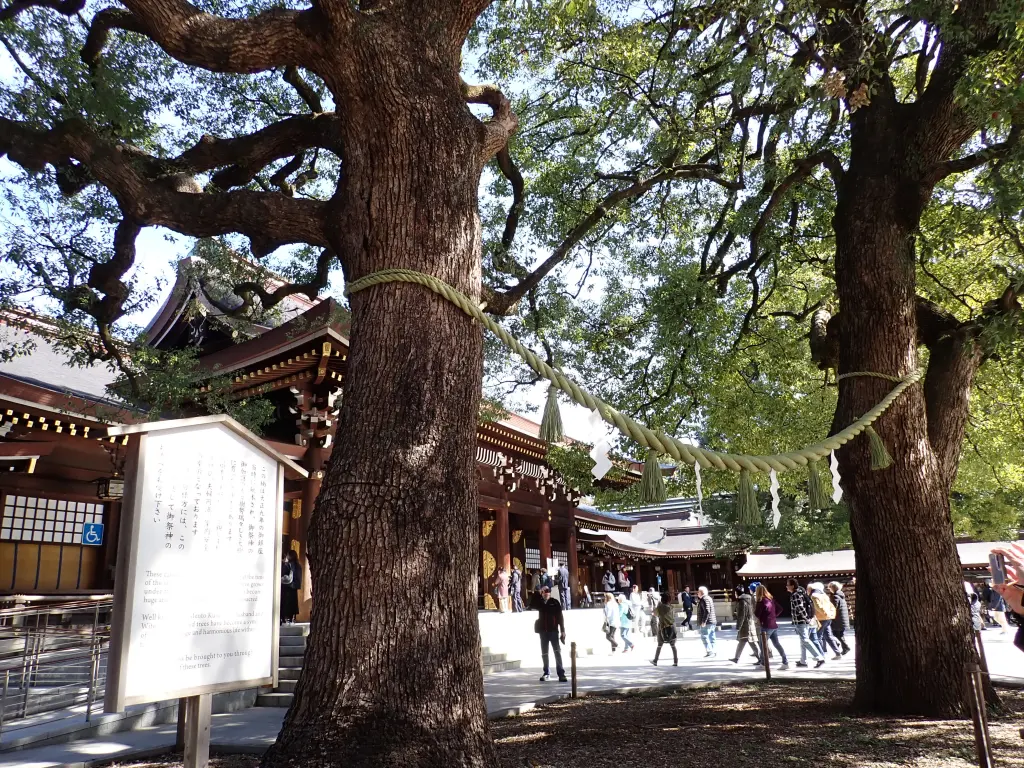
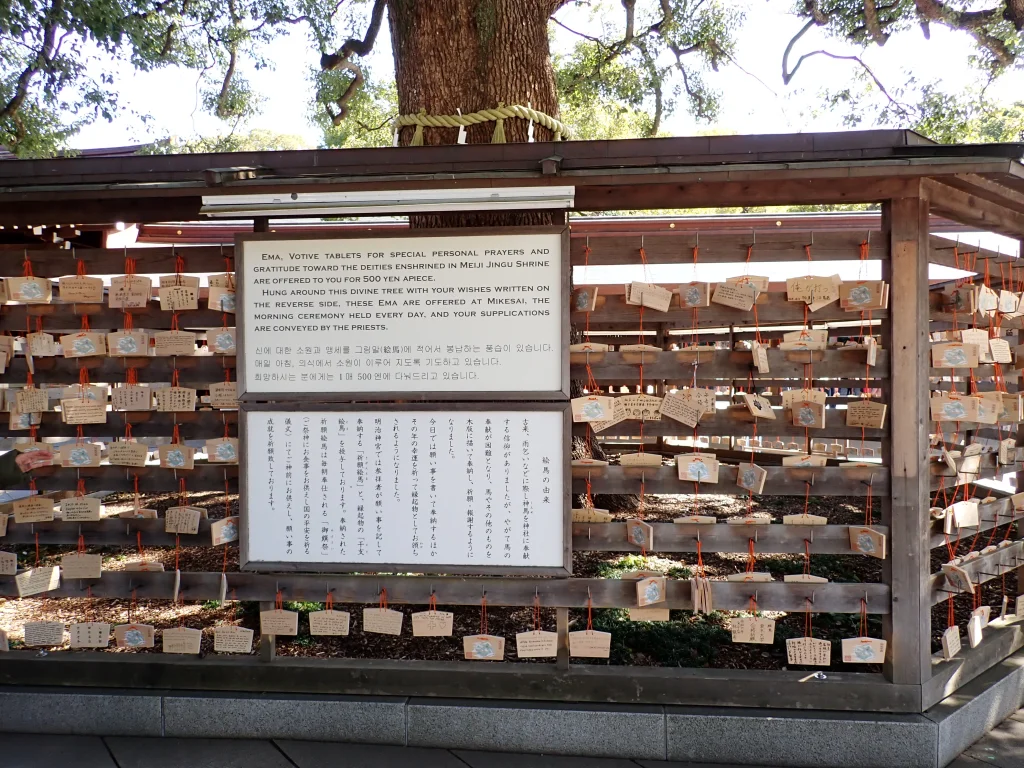
We traveled through the Asakusa entertainment and shopping district where Kimonos were everywhere. Including places where you could rent them.
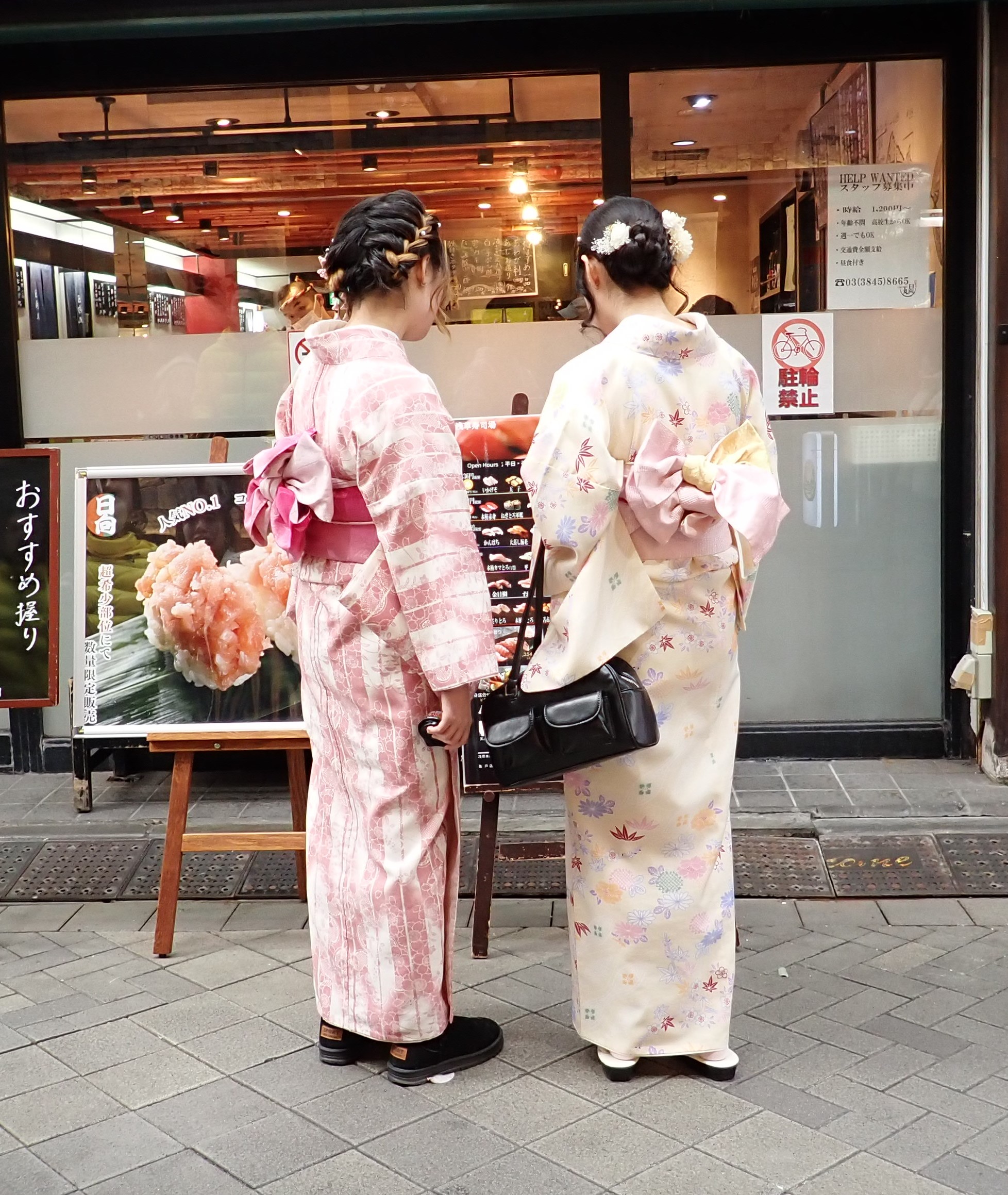

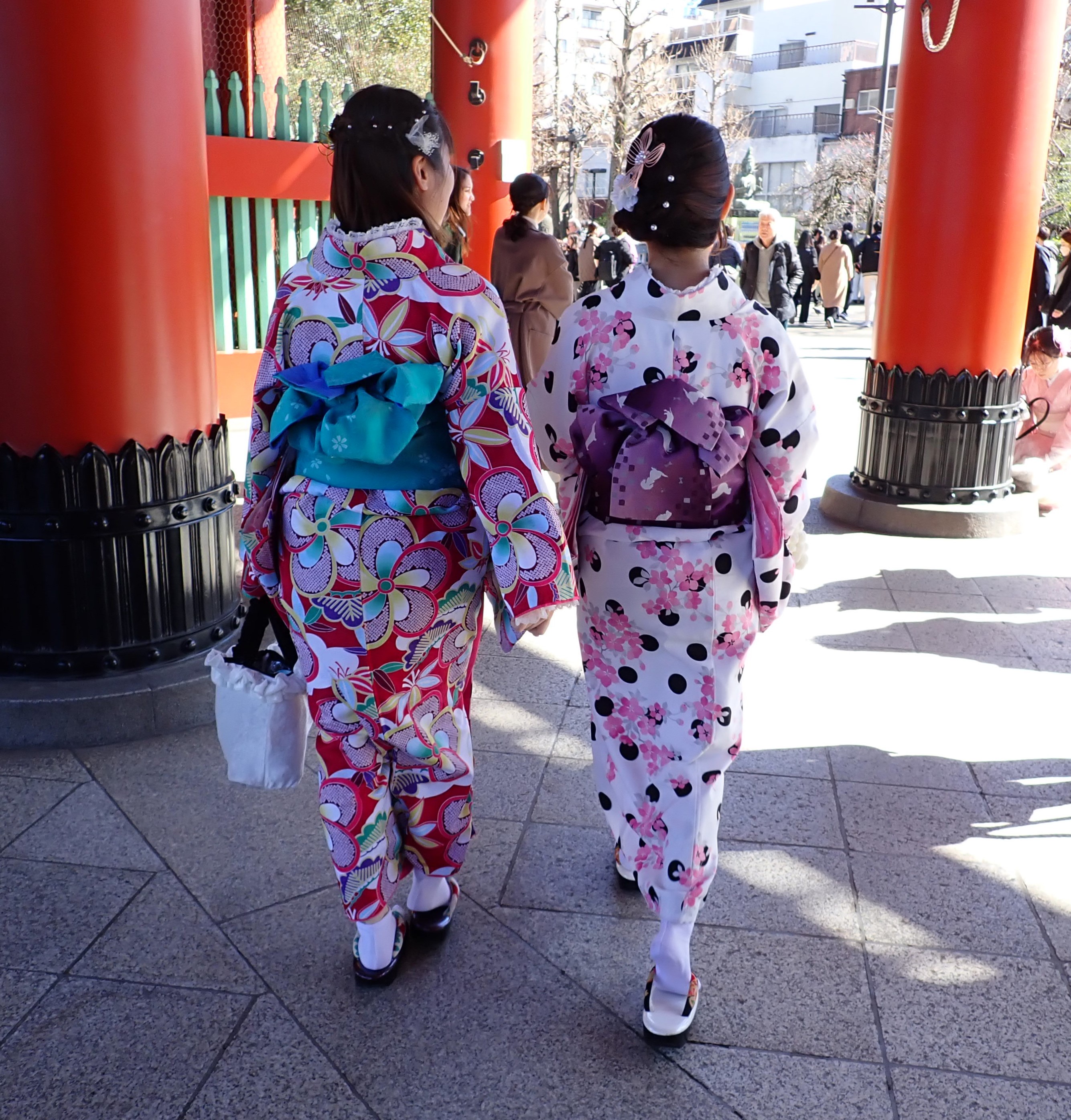
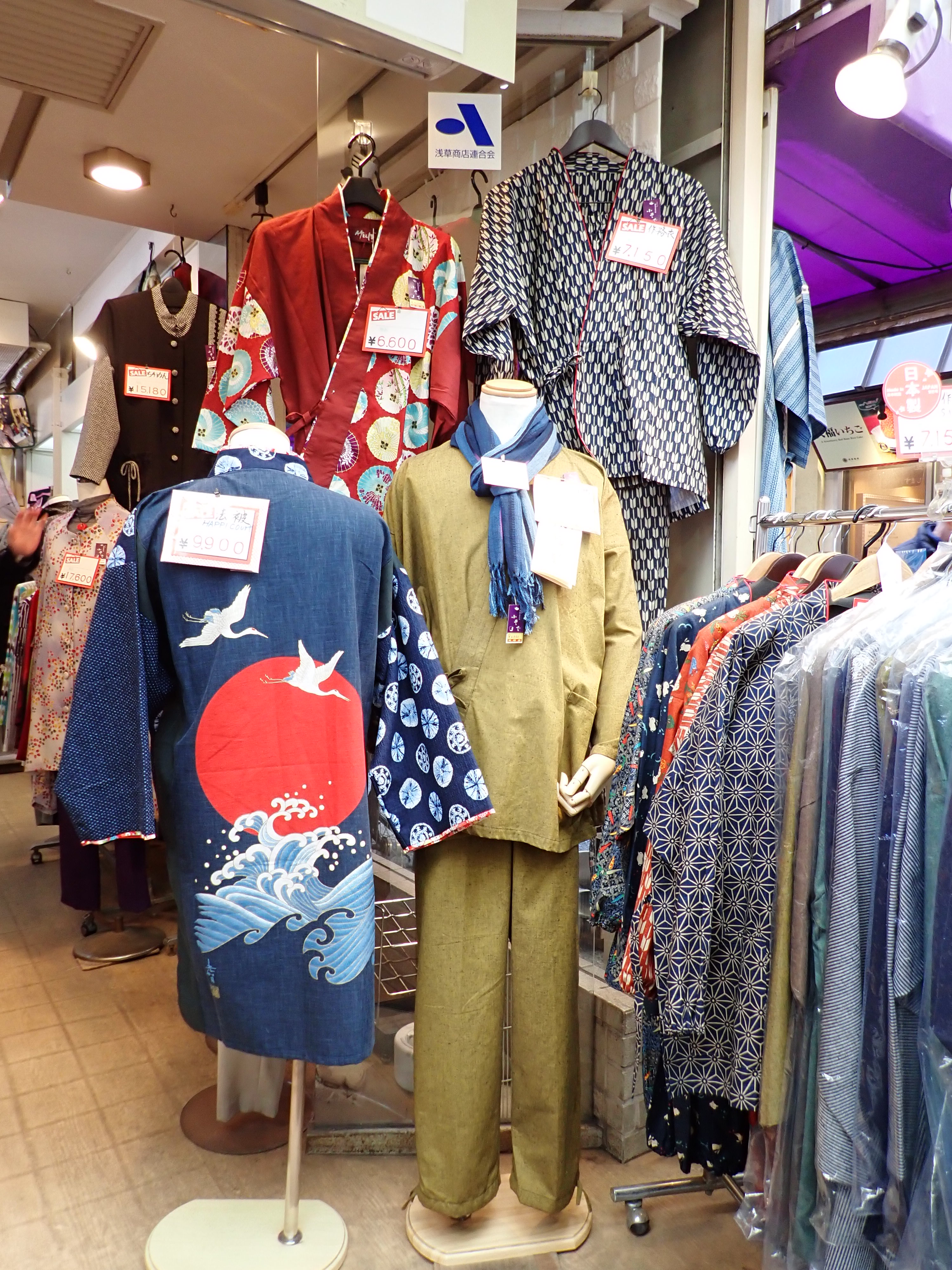
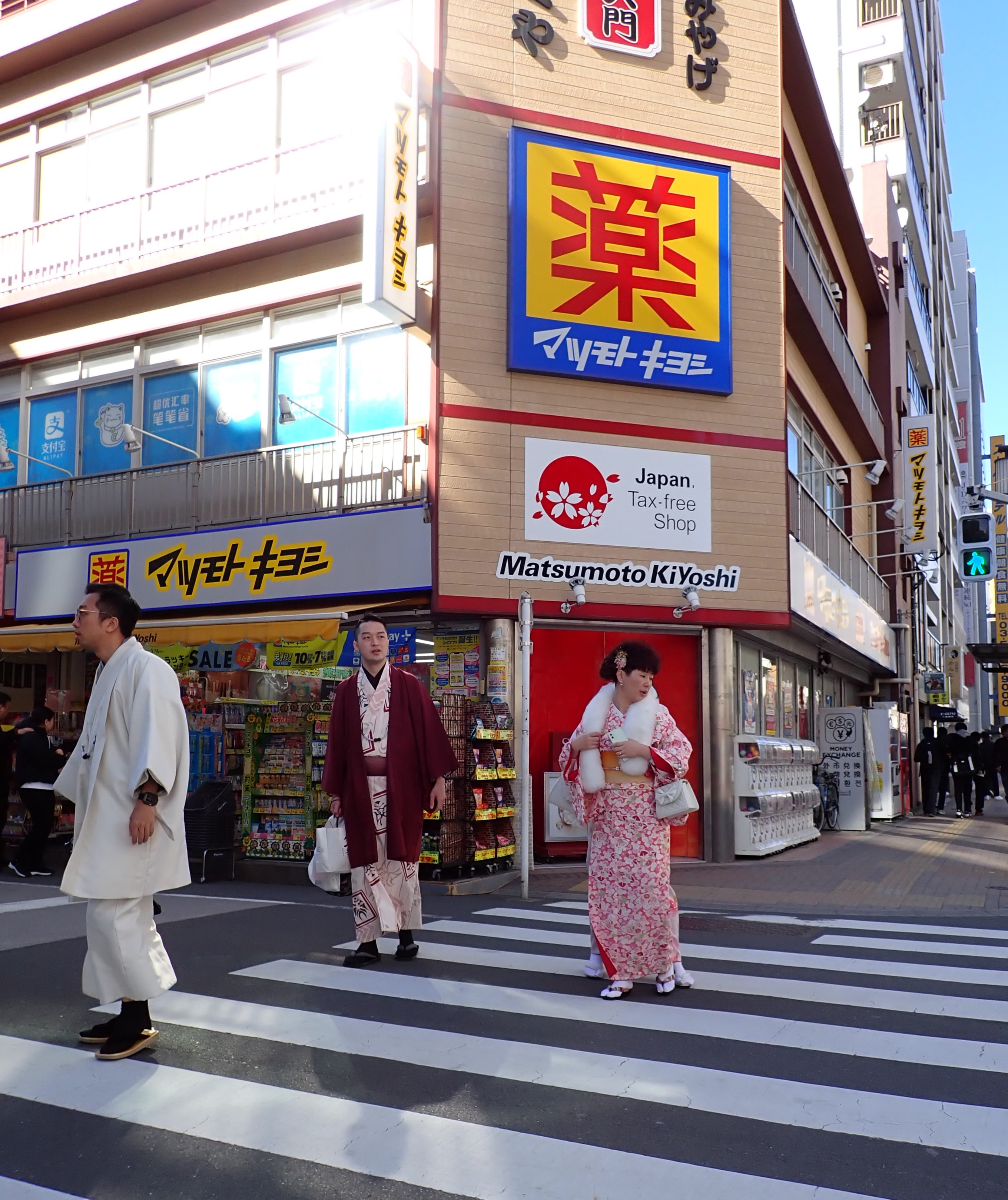
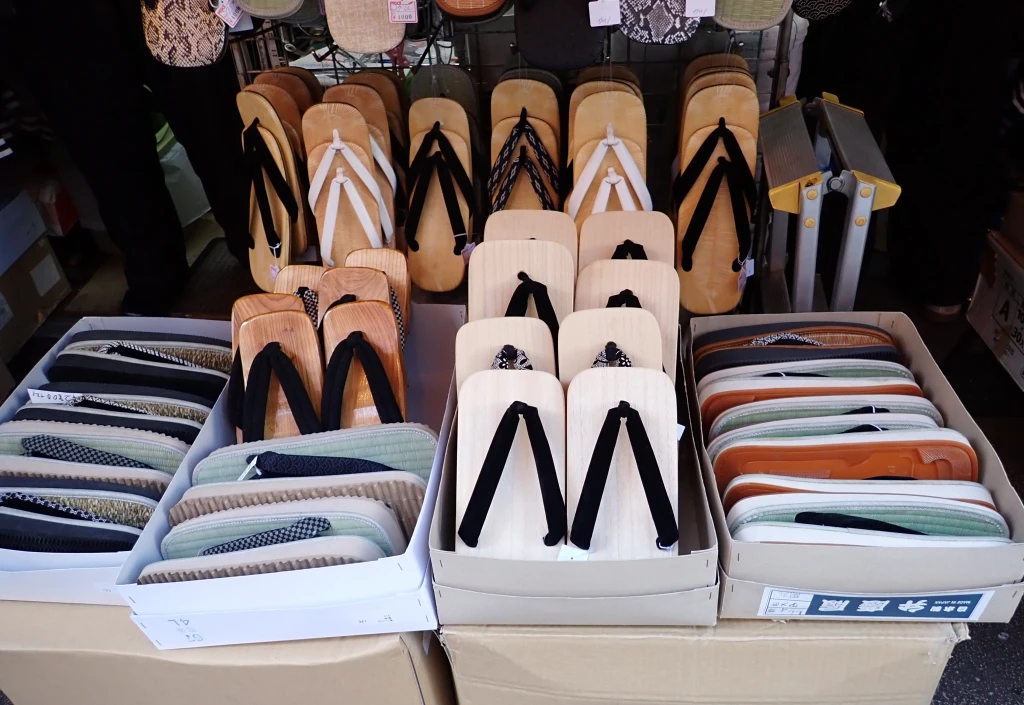
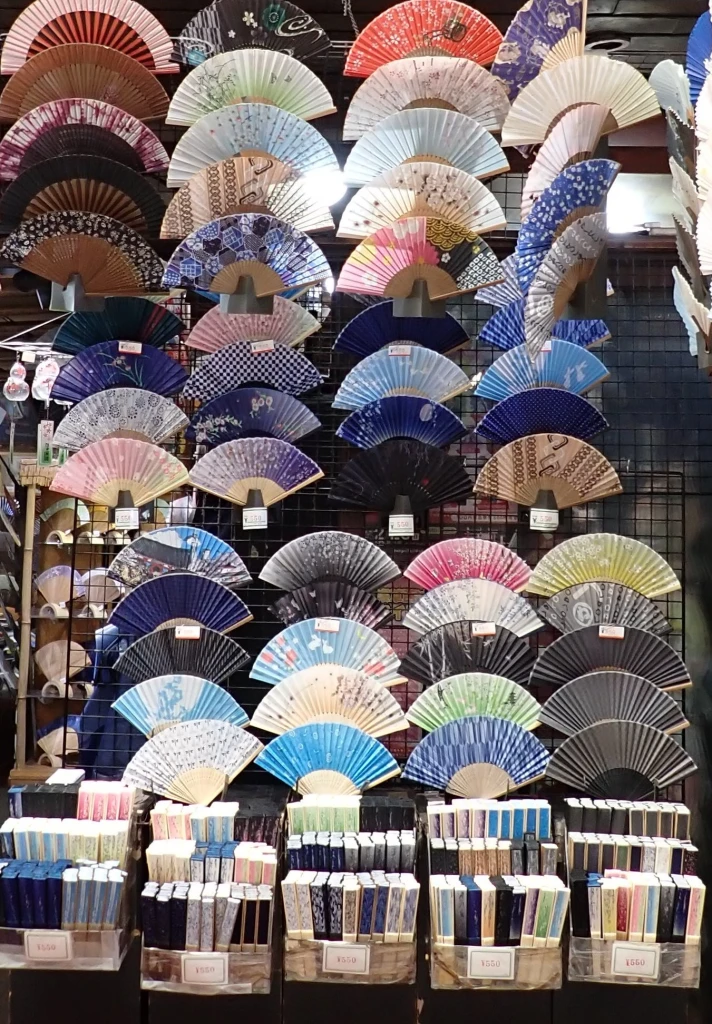
The beautiful Senso-ji Temple (Buddhist) was a colorful and busy place on this sunny day. This is Tokyo’s oldest temple.
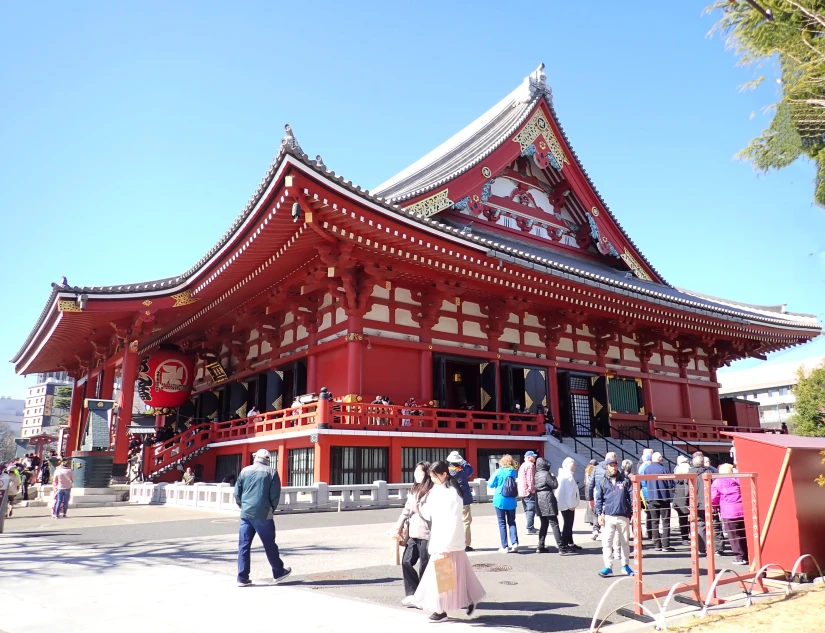
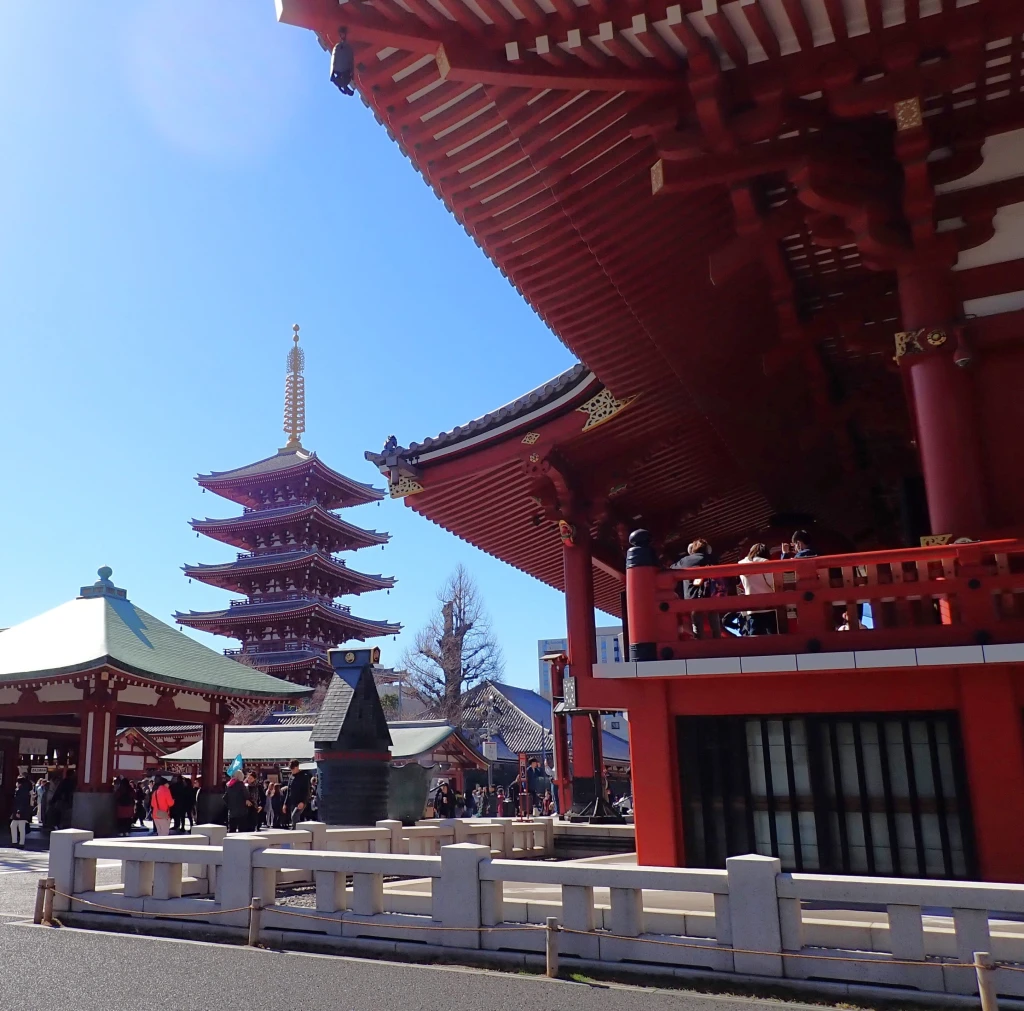
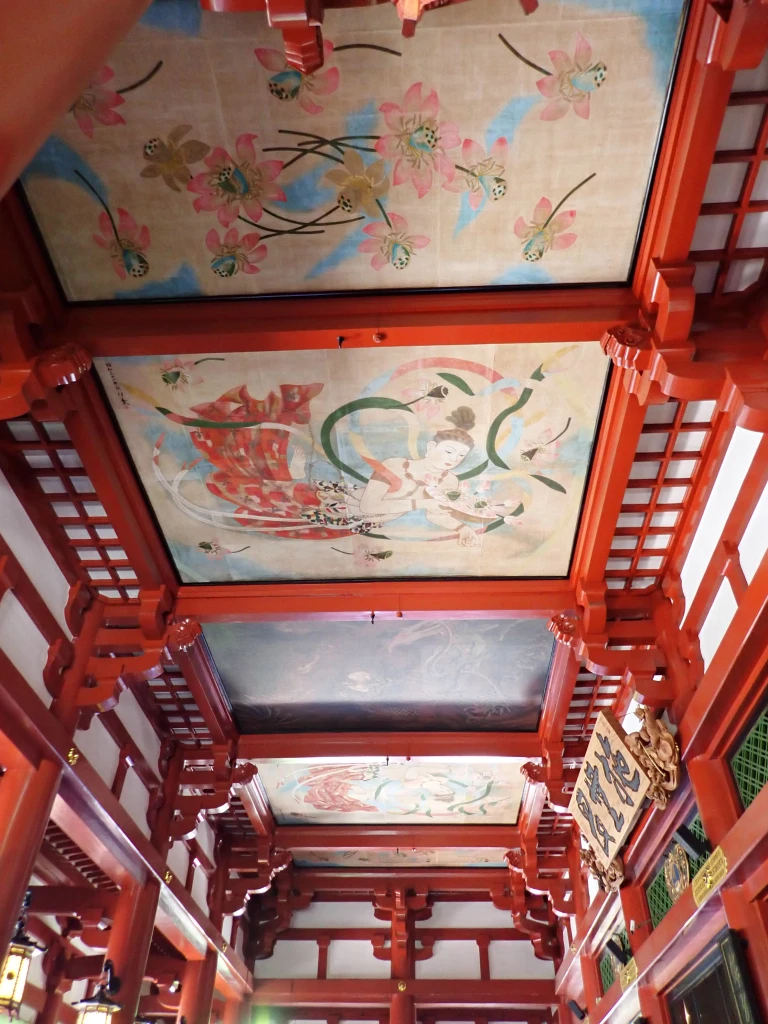
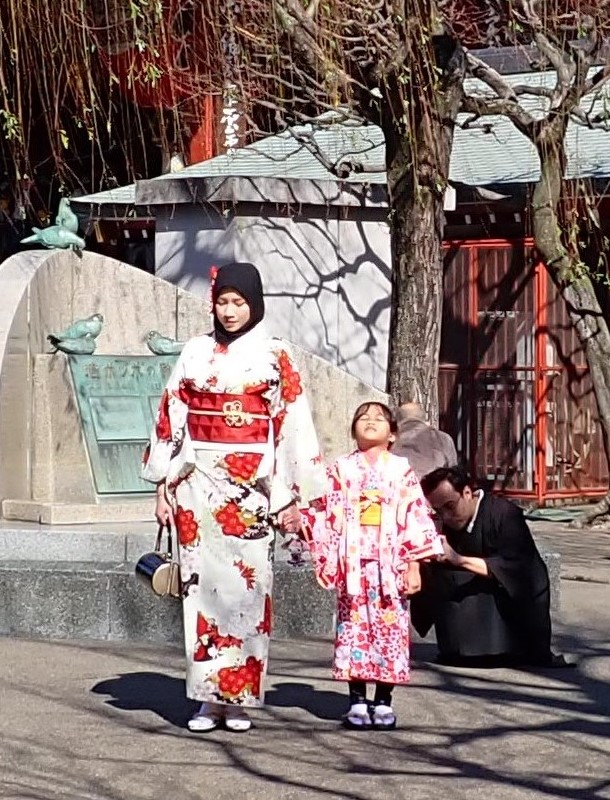
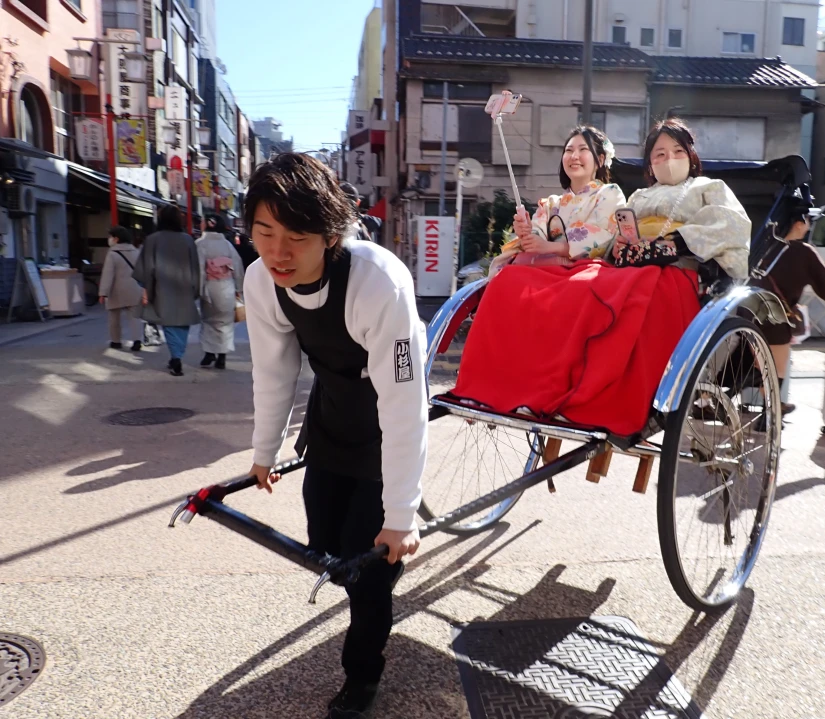
In central Tokyo, we viewed the home of Japan’s Emperor, the Imperial Palace Plaza and surrounding park filled with black pines.
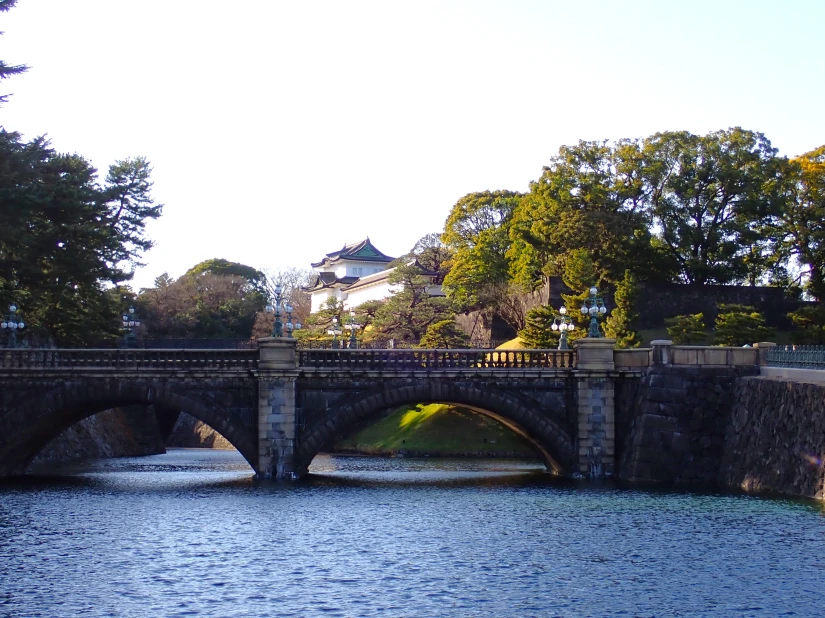
Our second day in Tokyo is cloudy with a morning temperature of 45 degrees. A group of 8 of us are venturing out today for a Secret Food tour https://www.secretfoodtours.com/tokyo/food-tours-tokyo/. We navigated the monorail system, and then transferred to a train that took us to the city district of Ueno, known for its restaurants and nightlife.
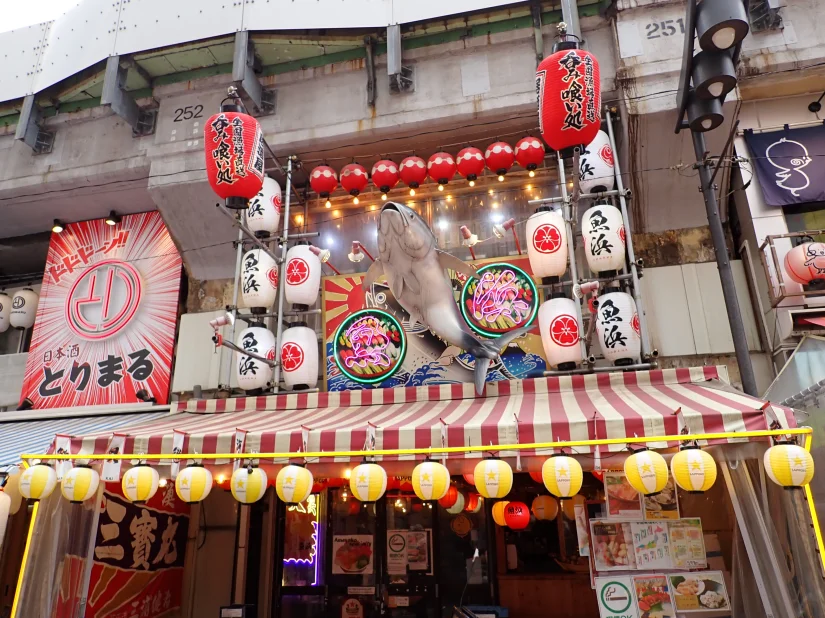
We met Karol, who guided us to seven food stops, giving us cultural and cuisine descriptions along the way. She said that most Japanese eat out most of the time, as it is cheaper and convenient with more choices given their tiny kitchens, mini stoves, and fridges.
A wide variety of local favorite foods were tasted today: Sushi, Goyza (pork dumplings), Yakitori (skewered chicken), Negima (chicken’s thigh with green onion), Torikawa (chicken skin), Tsukune (minced chicken), Edamame and tempura shrimp, scallops, pumpkin and eggplant. A local beer and a glass of cold saki. Desserts included Miyako Manju (sweet bun with white beans) and Macha (green tea) ice cream.
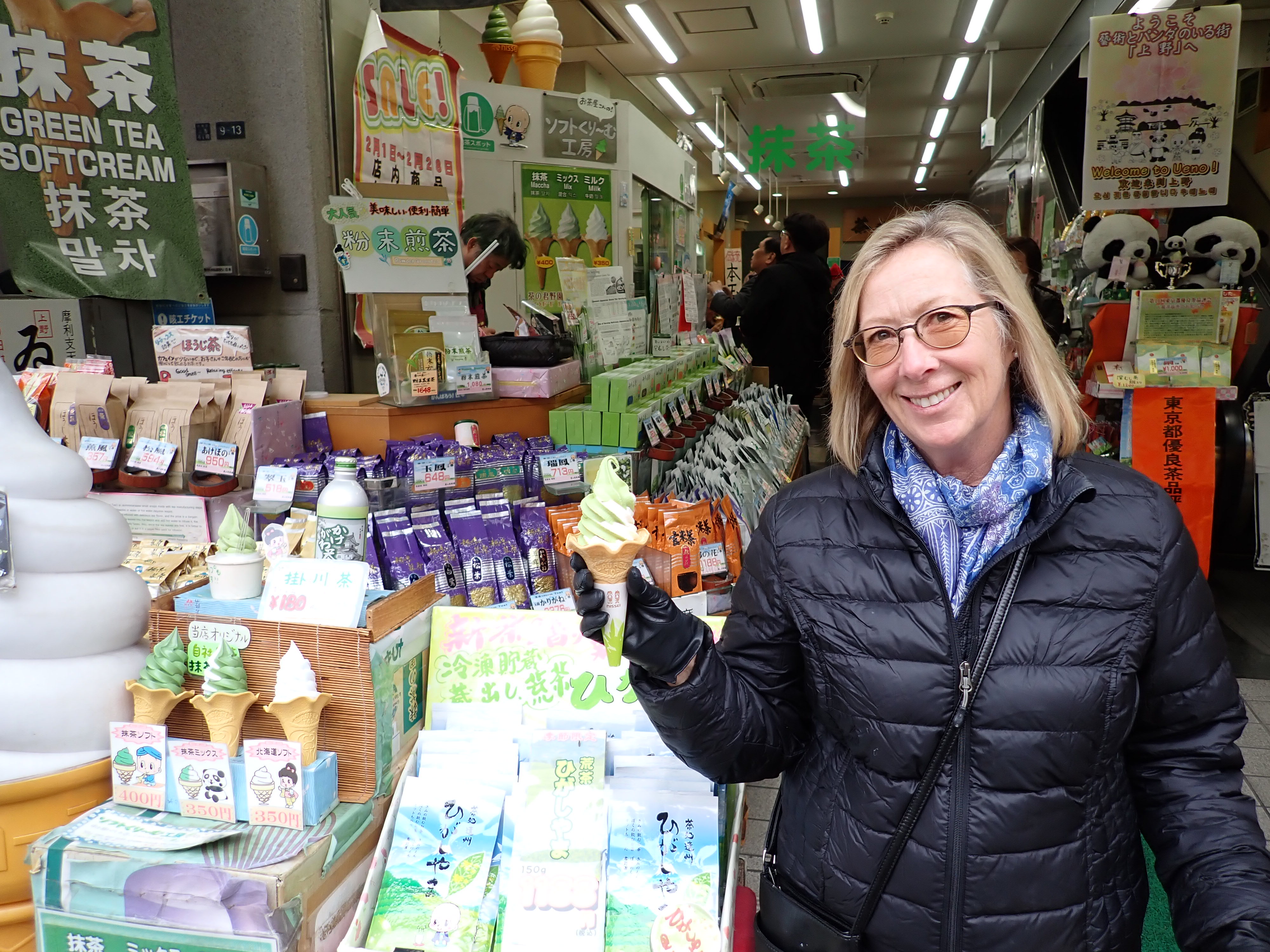
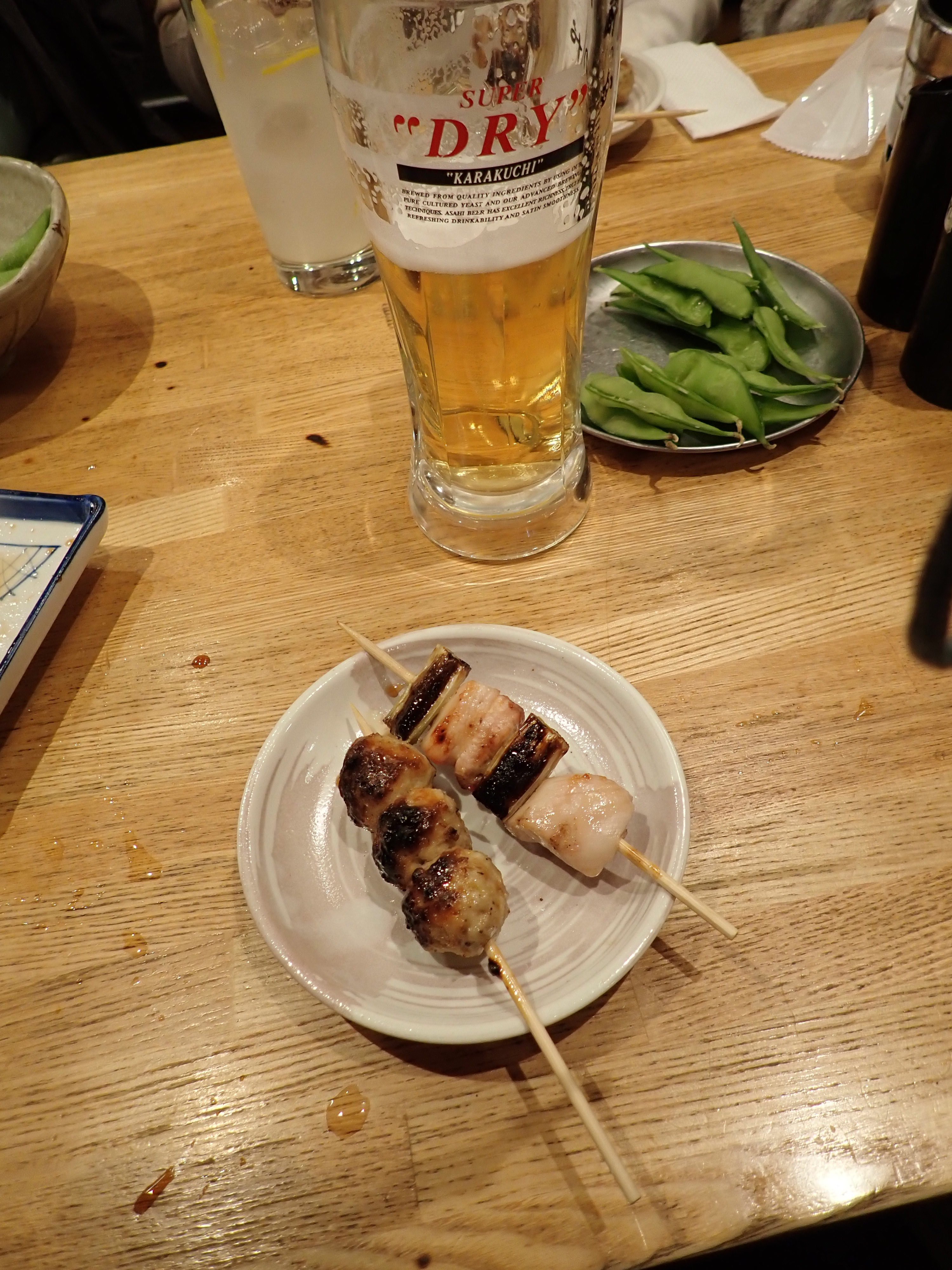
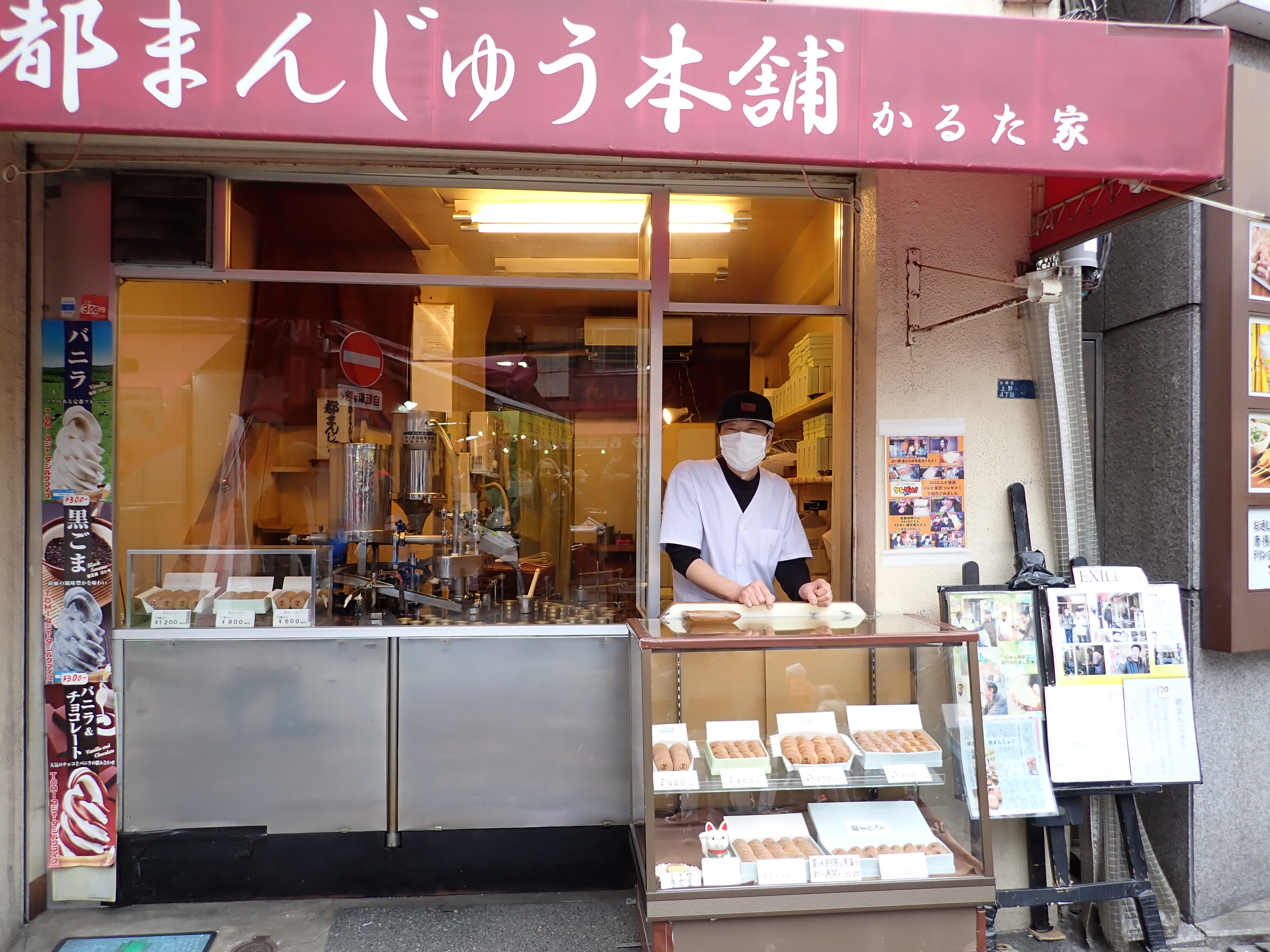
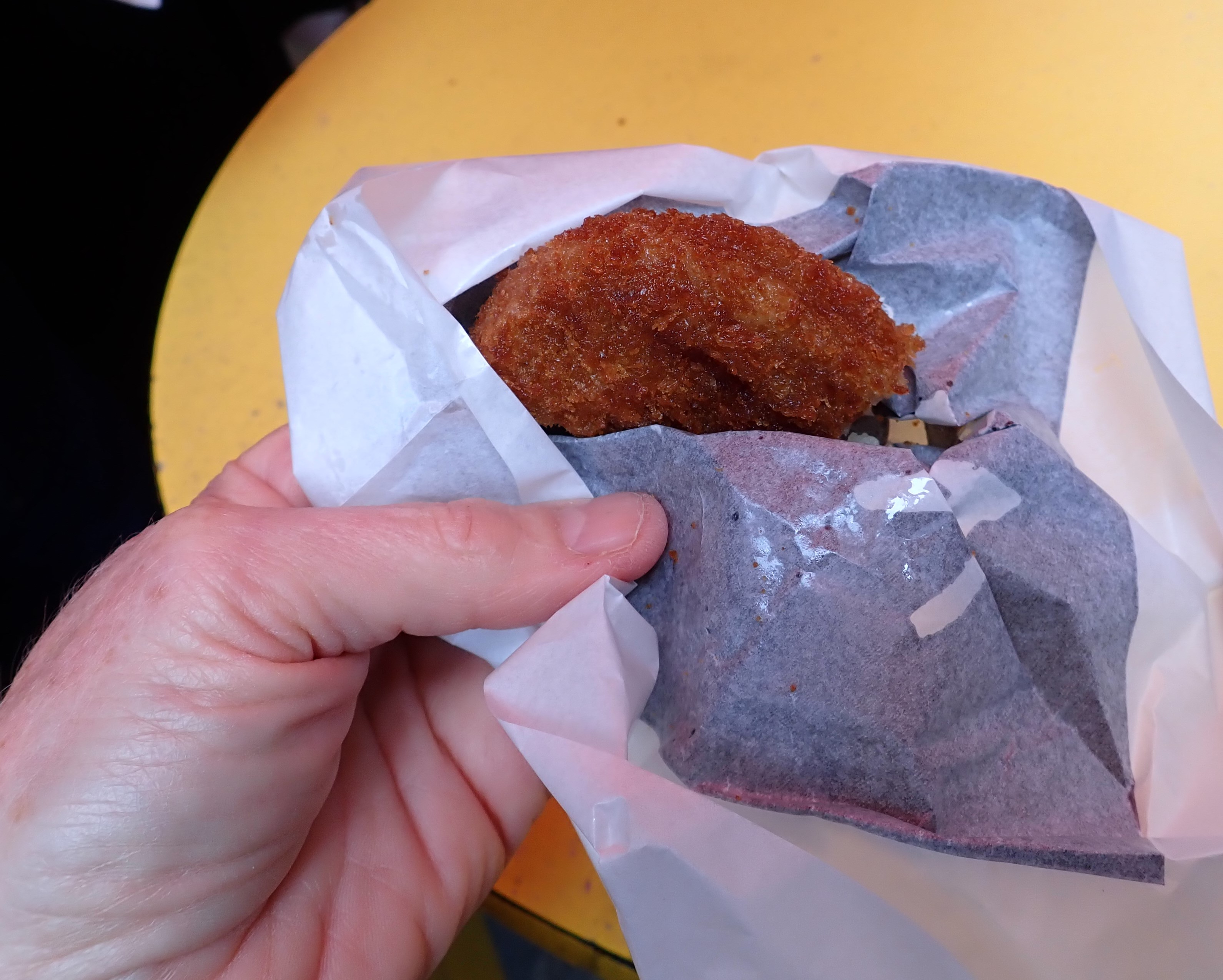
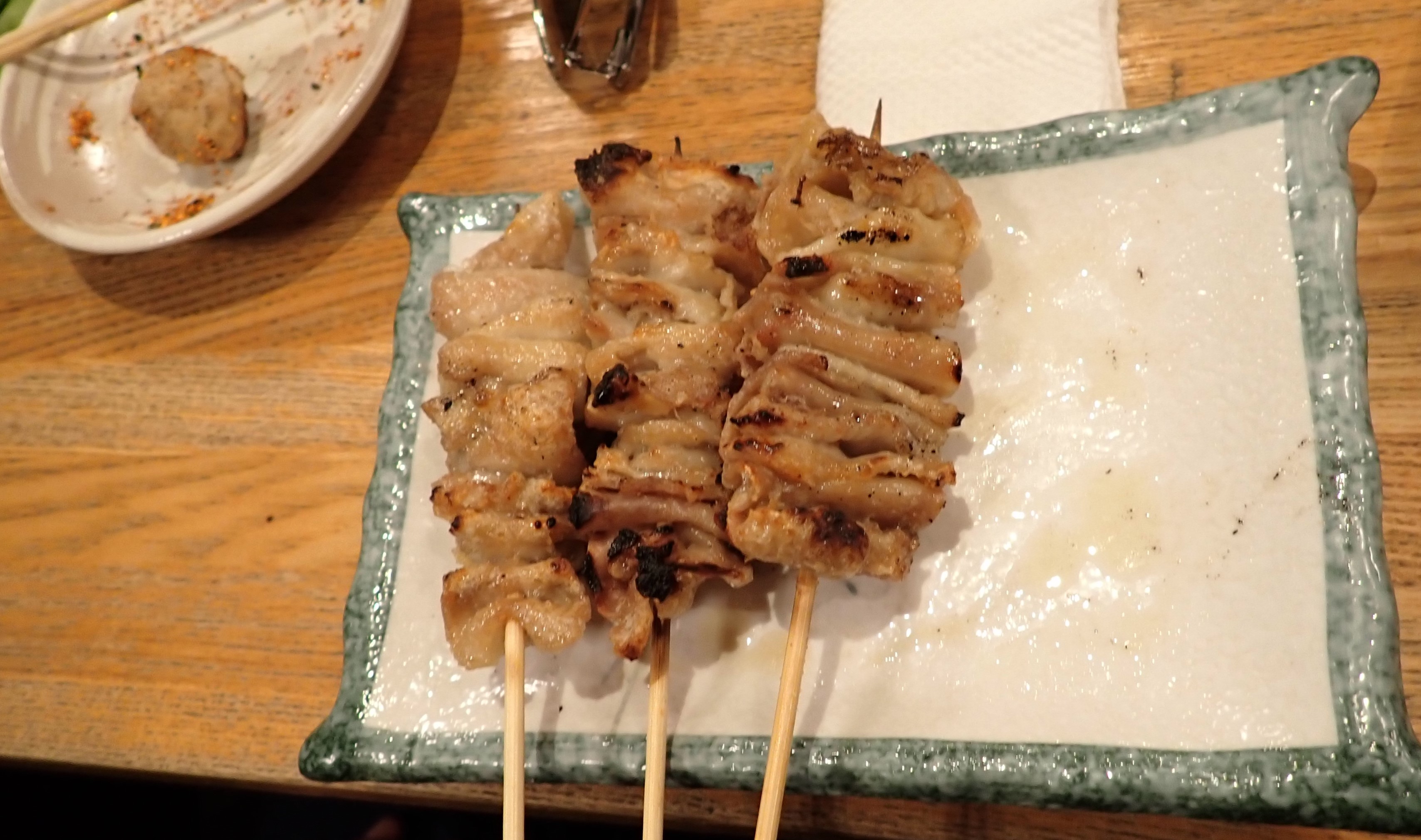
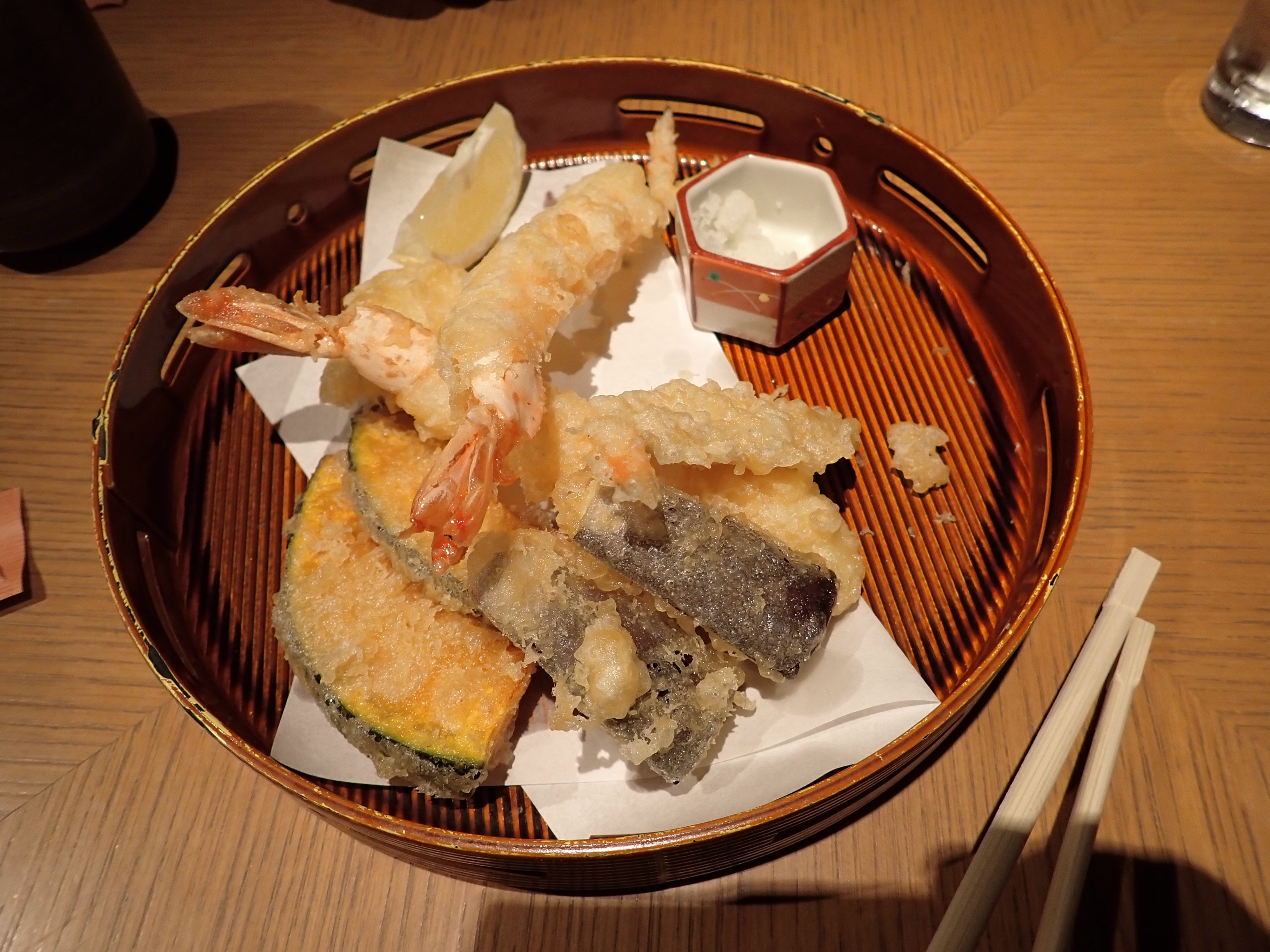
The tour exceeded our expectations. We thought the day would be spent grazing on “nibblers”. Rather, the day was rich with not only hearty portions but also a slice of what makes Japanese bellies happy.
Back aboard the ship, as she prepares for departure. The Rainbow Bridge and Tokyo skyline twinkled as we departed into the night.

We are notified that the Port of Omaezaki is closed due a low-pressure system producing gale-force winds.
As a consolation prize, Captain Frank guides Zuiderdam around the point into a choppy bay, to at least try to give us another angle and photo opportunities of Mt Fuji before heading south.
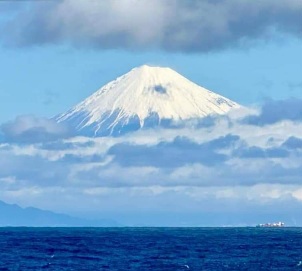
From there, we slowly proceed to our next scheduled port of Kobe which offers much more protection from the weather. Underway, we experienced 53 knot winds with higher gusts.
Zuiderdam cuts through dark, lumpy seas overnight and after 435 miles from leaving Tokyo, we arrive at the Port of Kobe. And what a welcome we receive! Their coast guard cutter provides us a noble escort, while a fire boat parades in front of us, jetting water skyward in colors of yellow, green, pink and purple.
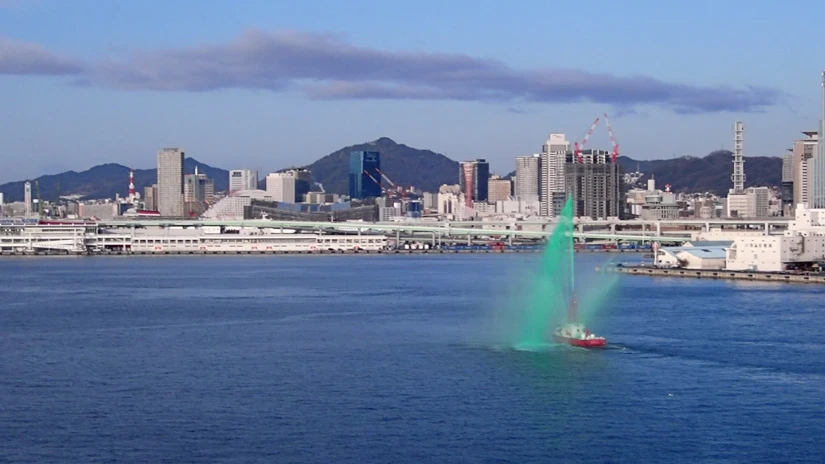
Once at the pier, a crowd greets us waving flags. Officials and locals alike are very excited to see us. And we learn why: we are the first cruise ship to visit here in four years!
Kobe is the 3rd largest seaport in Japan and a city of 1.5 million people. It’s known as the birthplace of Karaoke, and home to sake breweries with locally grown rice. But of course, Kobe is probably best known for their beef; small herds, heavily marbled and very expensive. It can range anywhere from $70-250 per person in a restaurant.
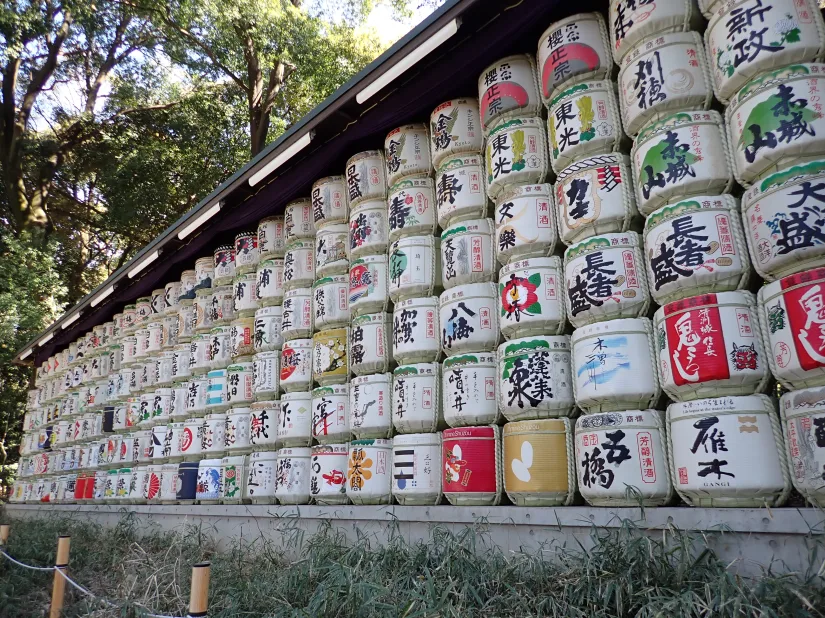
As we have 2 days here, we will use our first day to explore the neighboring “Ancient City” of Kyoto. Only 43 miles away Kyoto is Japan’s cultural center, rich in history, tradition, and architecture, including some of the best known temples, shrines and gardens.
Bright sunshine but brisk temps, we first visit the Kinkaku-ji Temple, a UNESCO World Heritage Site originally built in 1397 for Shogun Yoshimitsu and then rebuilt in 1955, using gold leaf giving its nickname of “The Golden Pavilion”.
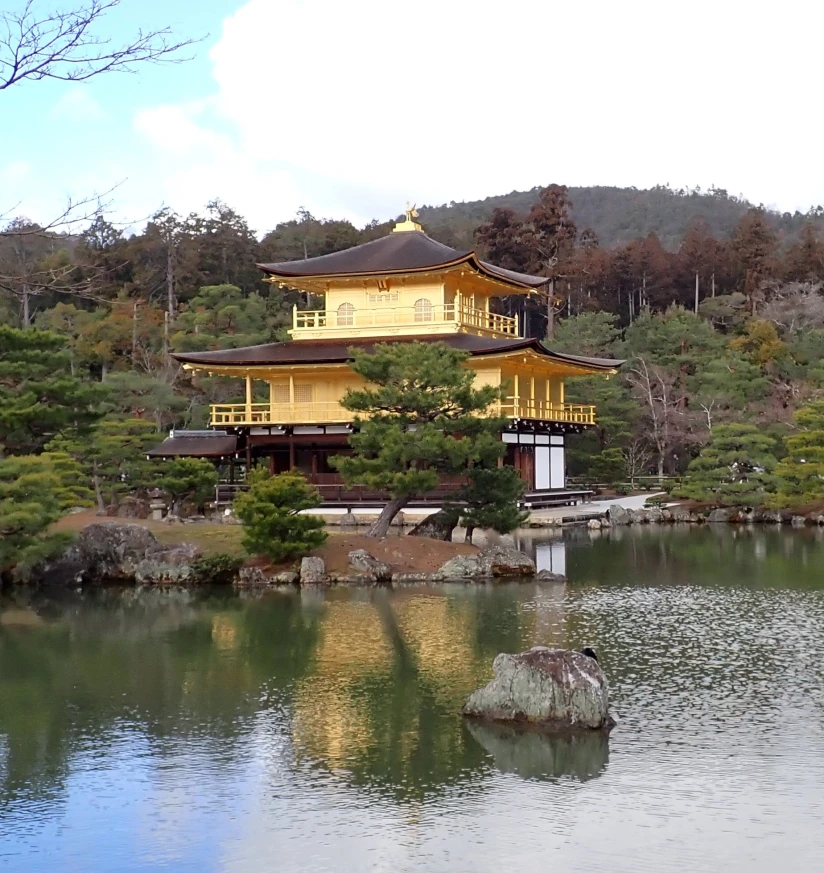
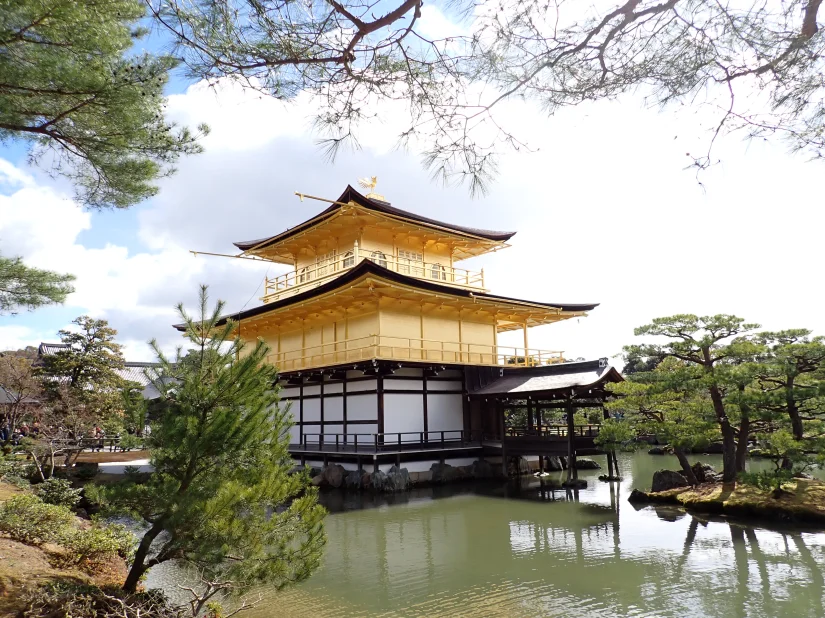
Next was the Nijo-jo Castle and its surrounding gardens, another UNESCO site, built in 1603. Complete with “nightingale floors” designed to squeak to warn inhabitants of intruders. Unfortunately, photography was not permitted in its spacious yet spartan interior of painted panels.
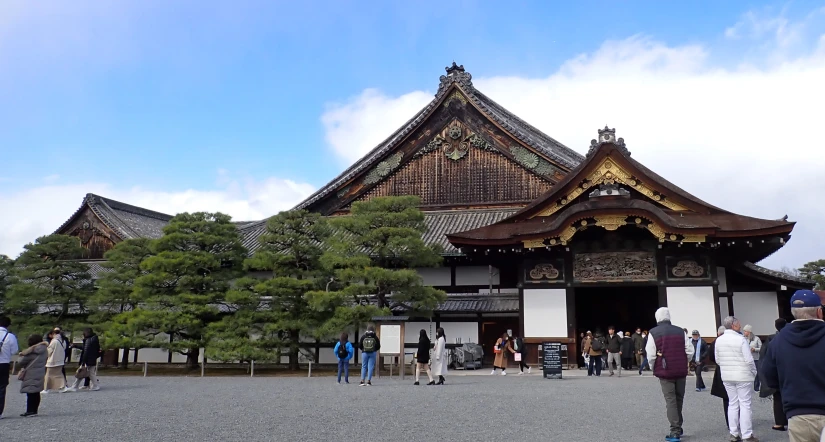
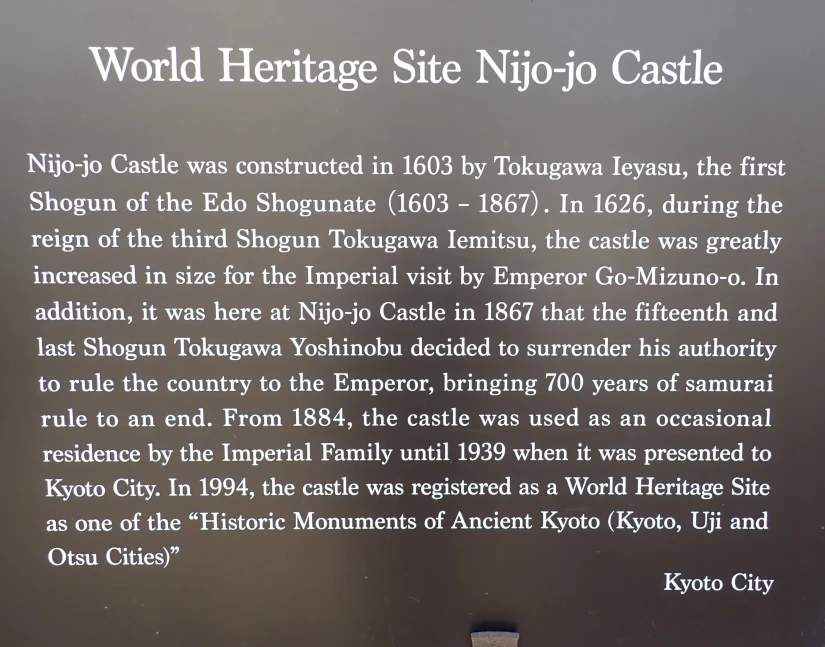
And lastly, Kyoto celebrated its 1,100 birthday with the construction of the Heian Shrine.
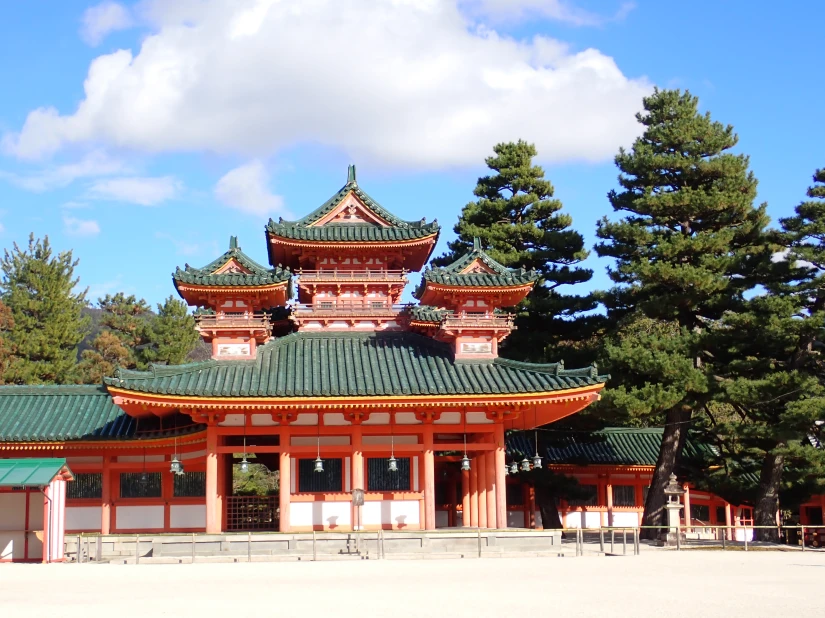
Surrounded by gardens, this a 2/3 scale model of the Heian Imperial Palace features a Chinese-style covered bridge. Once the afternoon clouds rolled in, we even saw a few small snowflakes!
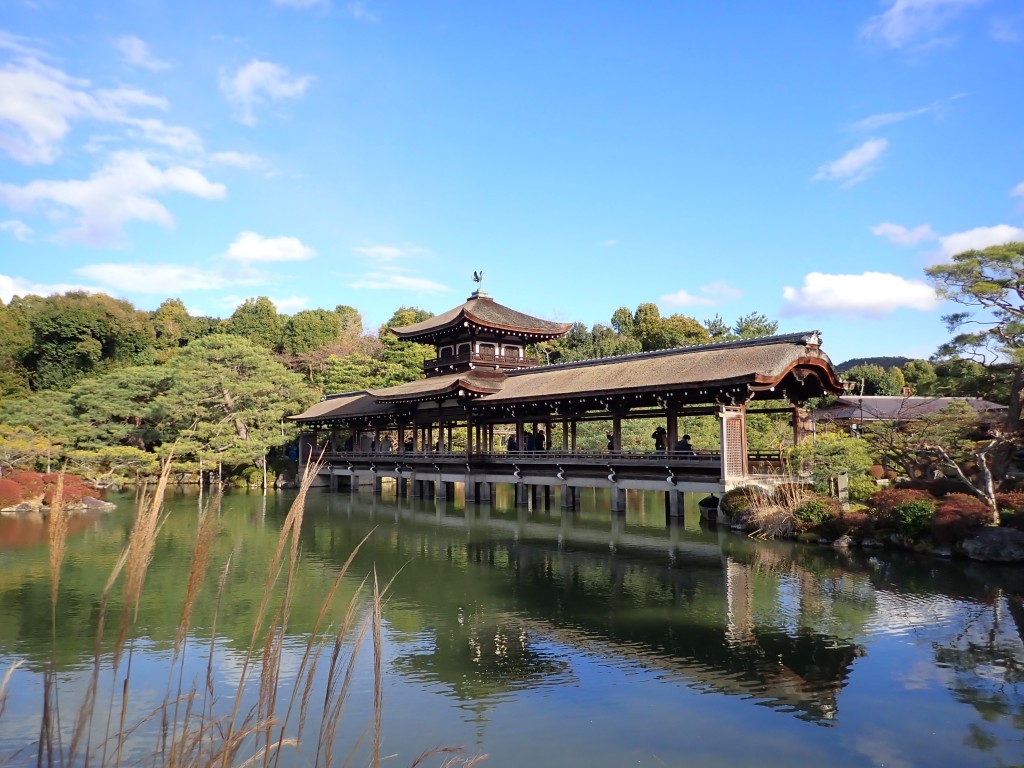

Our fantastic tour guide Sumiko educated us on kimonos, origami, the art of bowing and other interesting Japanese customs. At a local hotel, a traditional lunch was served bento-box style, with sashimi, miso soup, rice and veggies.
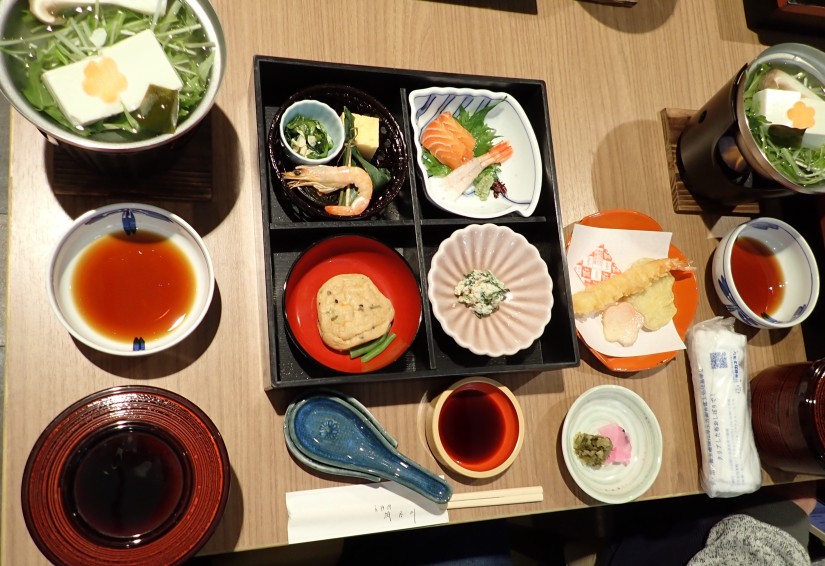
Back to the port and aboard the ship for dinner, as well as fireworks provided by the City of Kobe.
Kobe Day 2: We quickly figured out the port tram, bought tickets and rode it into town. As the downtown was still very deserted on a Sunday morning, we ambled down a few streets that brought us to the base of the cable car that would bring us up to the Kobe Herb Gardens.
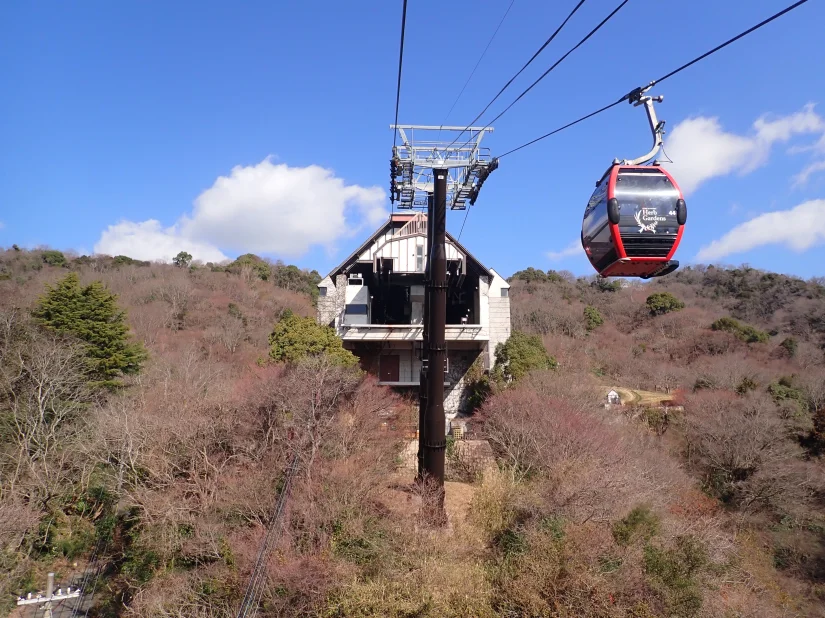
Its understated name does not convey the scope of this 40-acre botanical garden. Even though we were weeks too early for the cherry blossoms, there were a surprising amount of early blooming perennials.
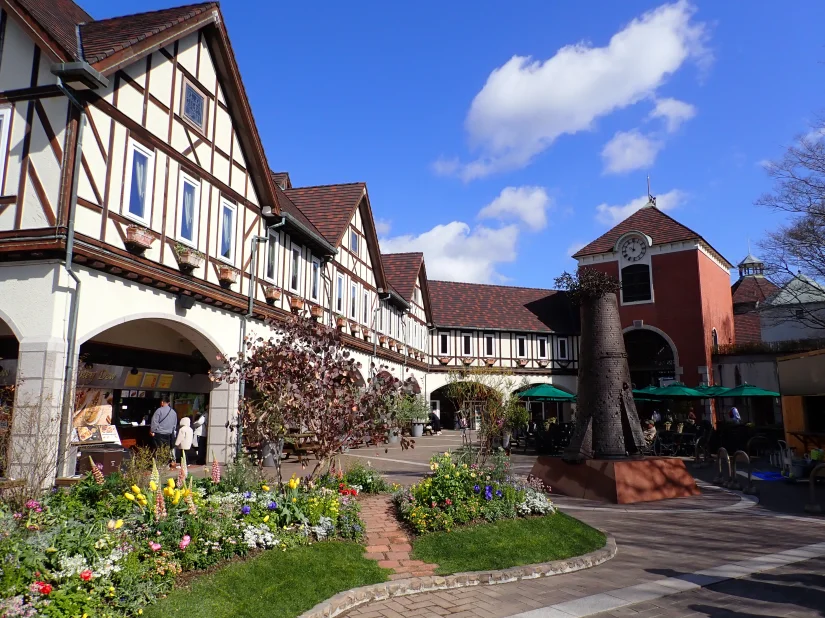
We enjoyed a hot coffee in the upper courtyard on this chilly morning, watching local families gather for photos. Then following the well-manicured paver paths downward, we found waterfalls, hammocks and fabulous views of the harbor, Kobe and adjacent Osaka in the distance.
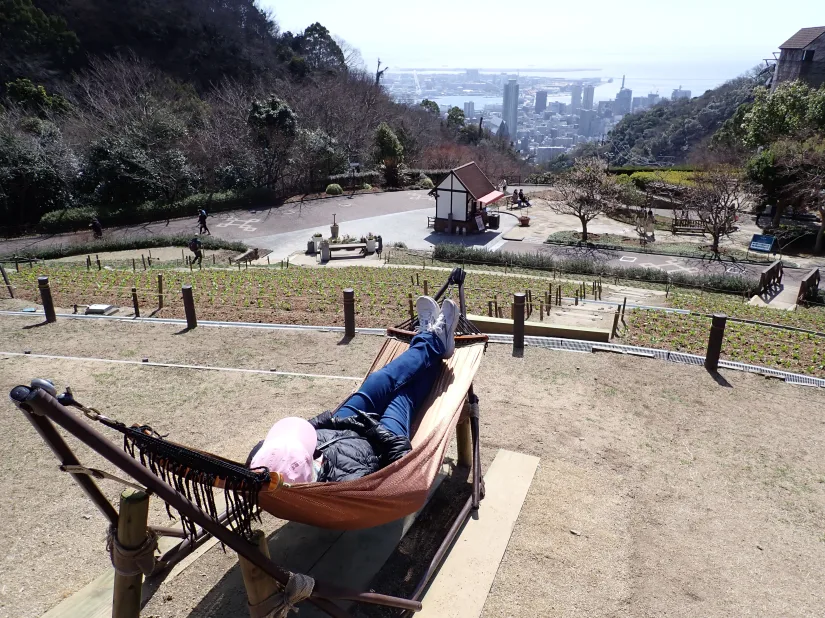
Our goal today was to find some Kobe beef for lunch somewhere along our walkabout.
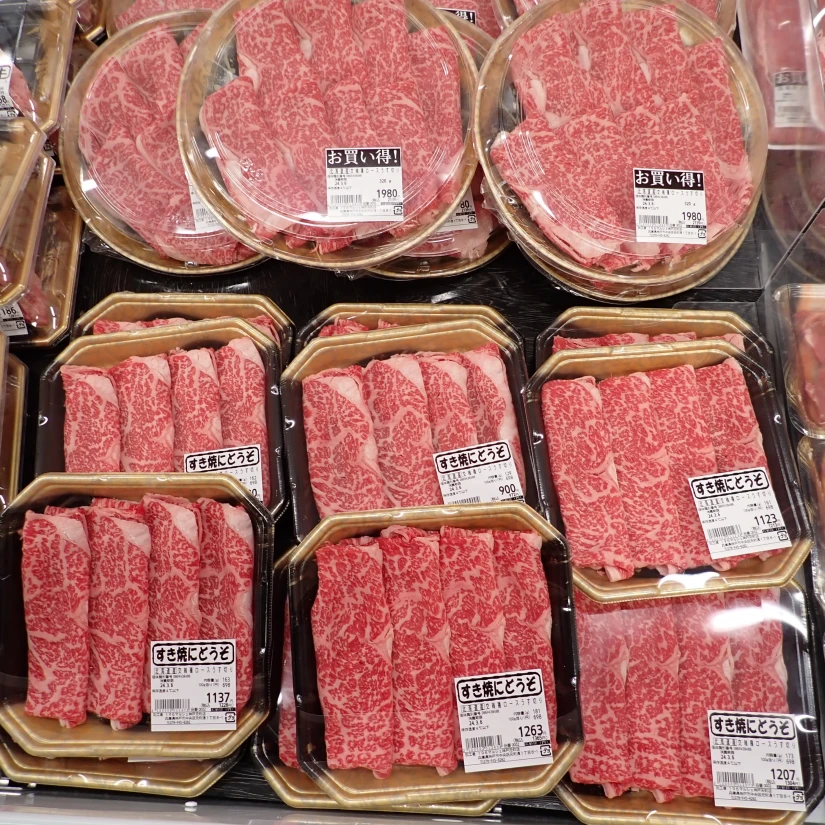
After poking our heads into many places that either required reservations or wanted a fortune for a 3-course dinner, we finally found a place that fit our budget and our hope to have just a snack instead of a gorging meal. It was a bento box style lunch with Kobe beef, some rice and vegetables…perfect and delicious.
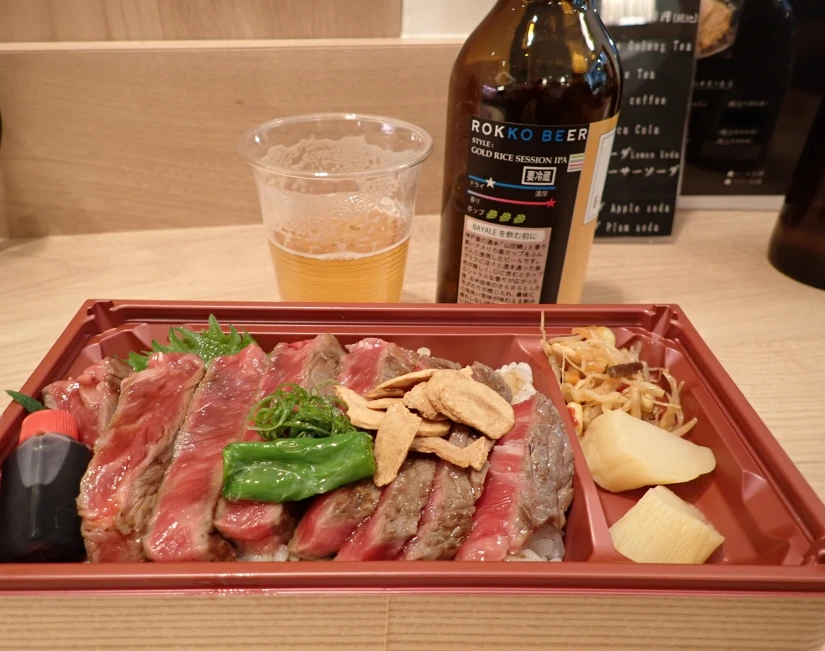
Several blocks from there, we found Chinatown…yes, Chinatown in Japan. And what a happening place! Masses of locals EATING. Long lines for steamed buns (manju) and lots of dumplings; dimsum and goyza. There must have been thousands of people packed into this six-block area.
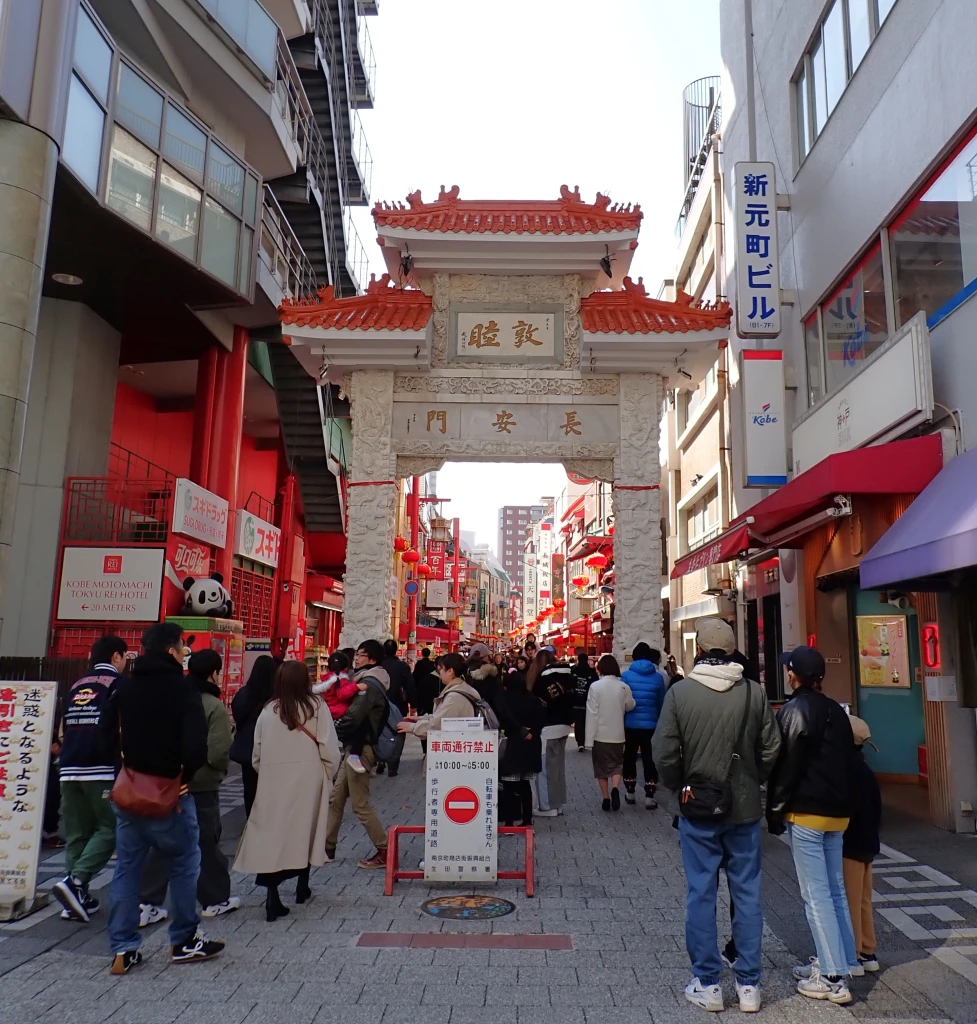
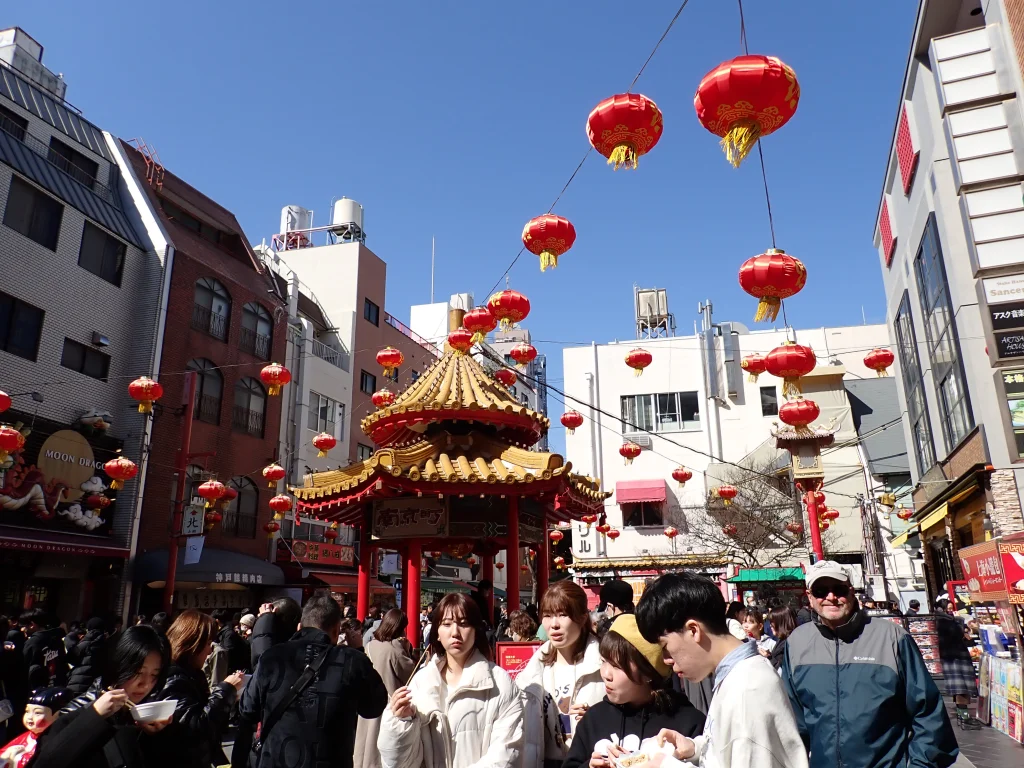
We fell victim to FOMO (fear of missing out) and had to try a popular sesame coated ball on a stick, called Jian dui. It was rather dough-y with a slightly sweet bean paste filling.
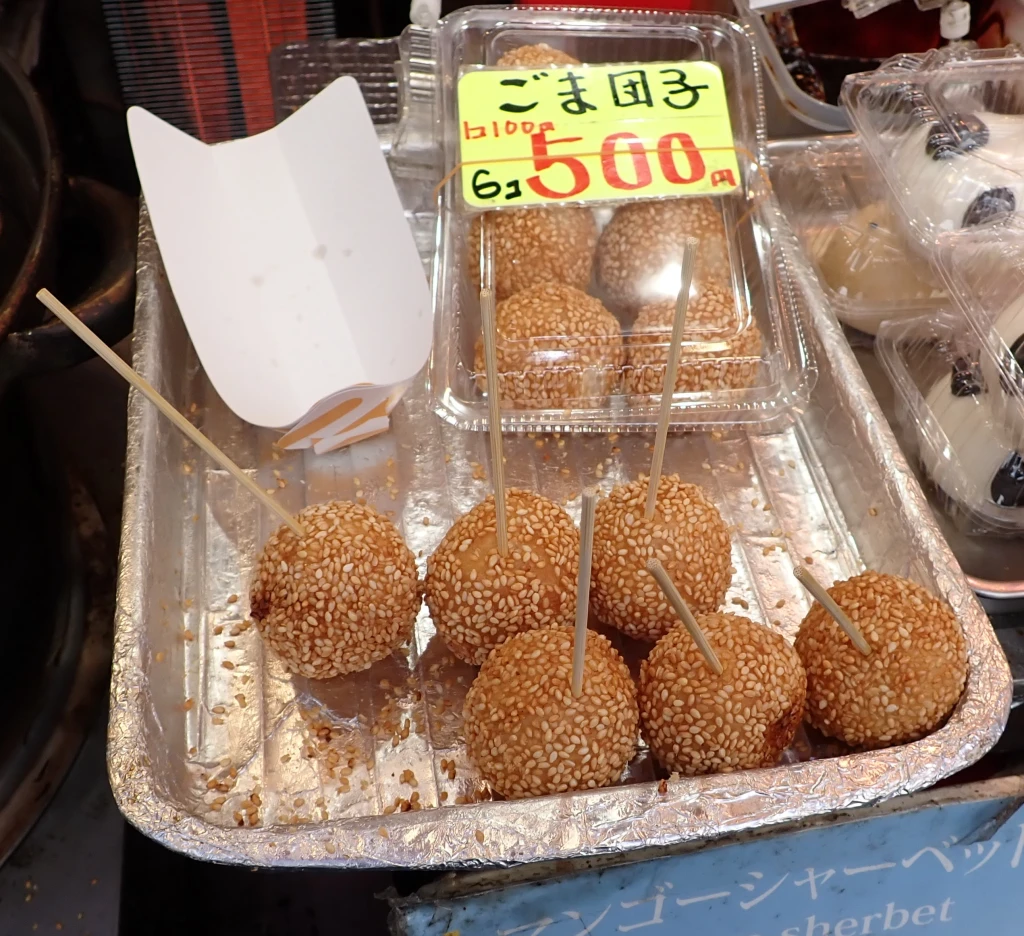
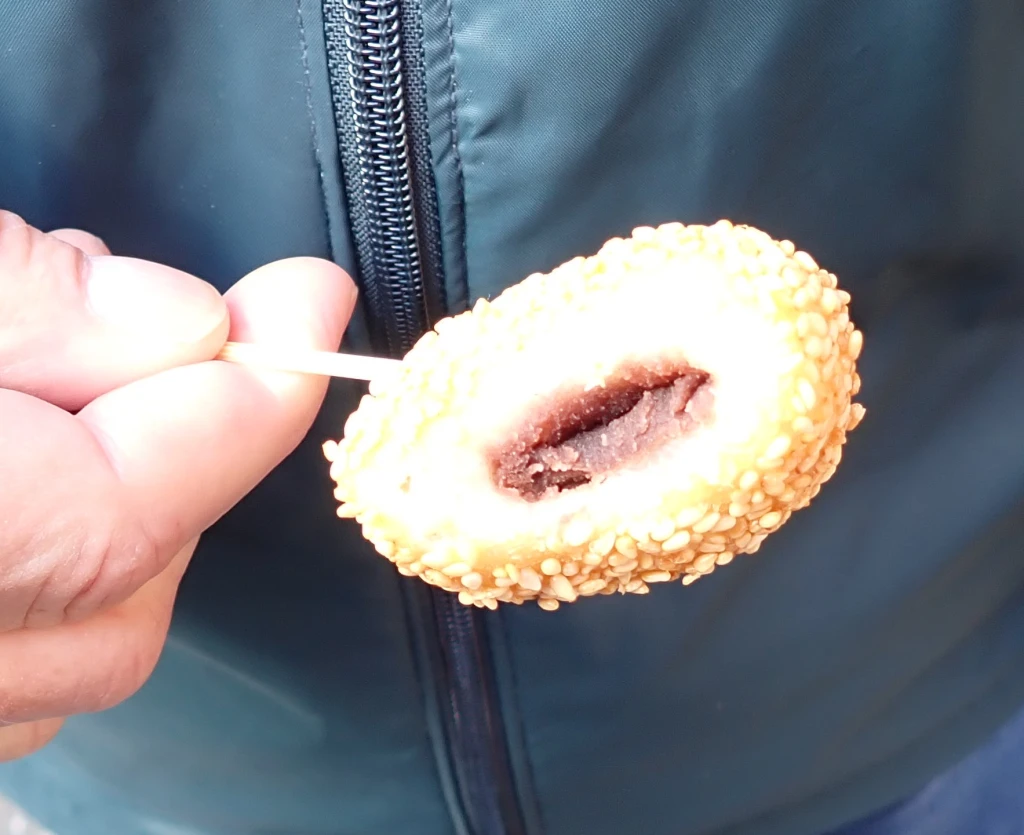
Satisfied stomachs and tired feet, we boarded the shuttle bus back to ship in time for the 4:30pm Sail-Away celebration. Just as the locals had welcomed our arrival yesterday, they also planned some big fanfare for our departure: hundreds of balloons launched, while a concert band played enthusiastically, and the locals and officials waved a vigorous goodbye.
Zuiderdam threads her way through the narrow Kanmon Strait that separates Honshu and Kyushu, two of Japan’s four main islands. 700 ships a day pass through this narrow passage.

Hardly ever visited by cruise ships is the port of Fukuoka and Hakata.

It’s a 50-degree, overcast day with forecasted afternoon rain. We are almost completely alone to walk through our first of several Zen temples today.
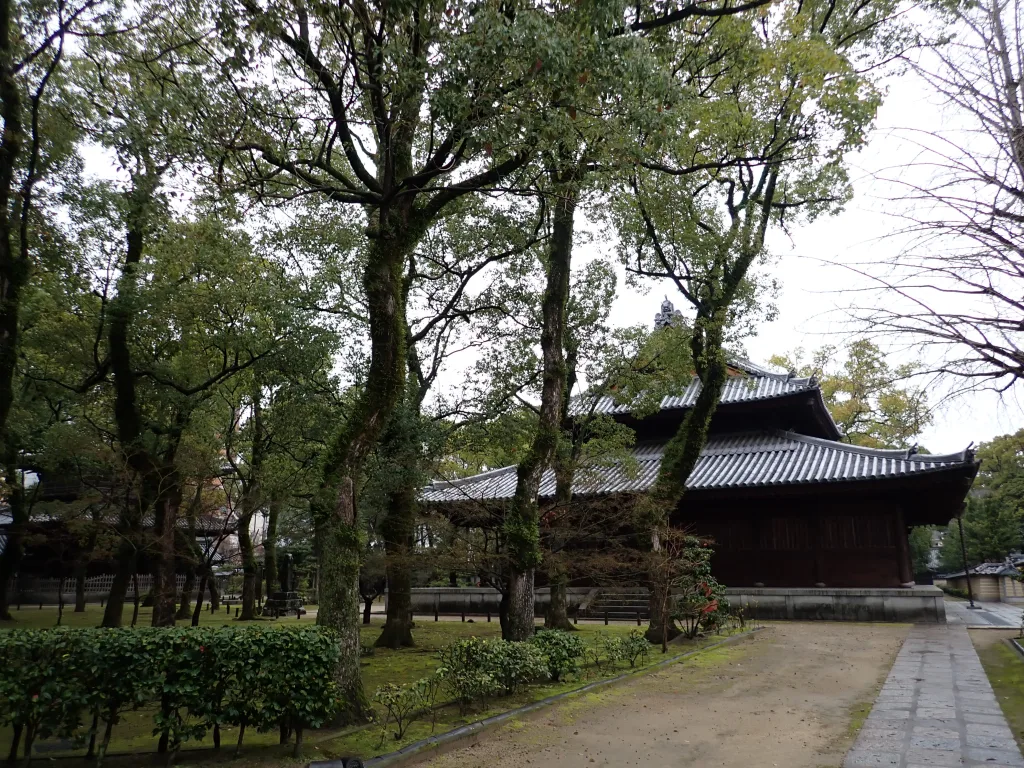
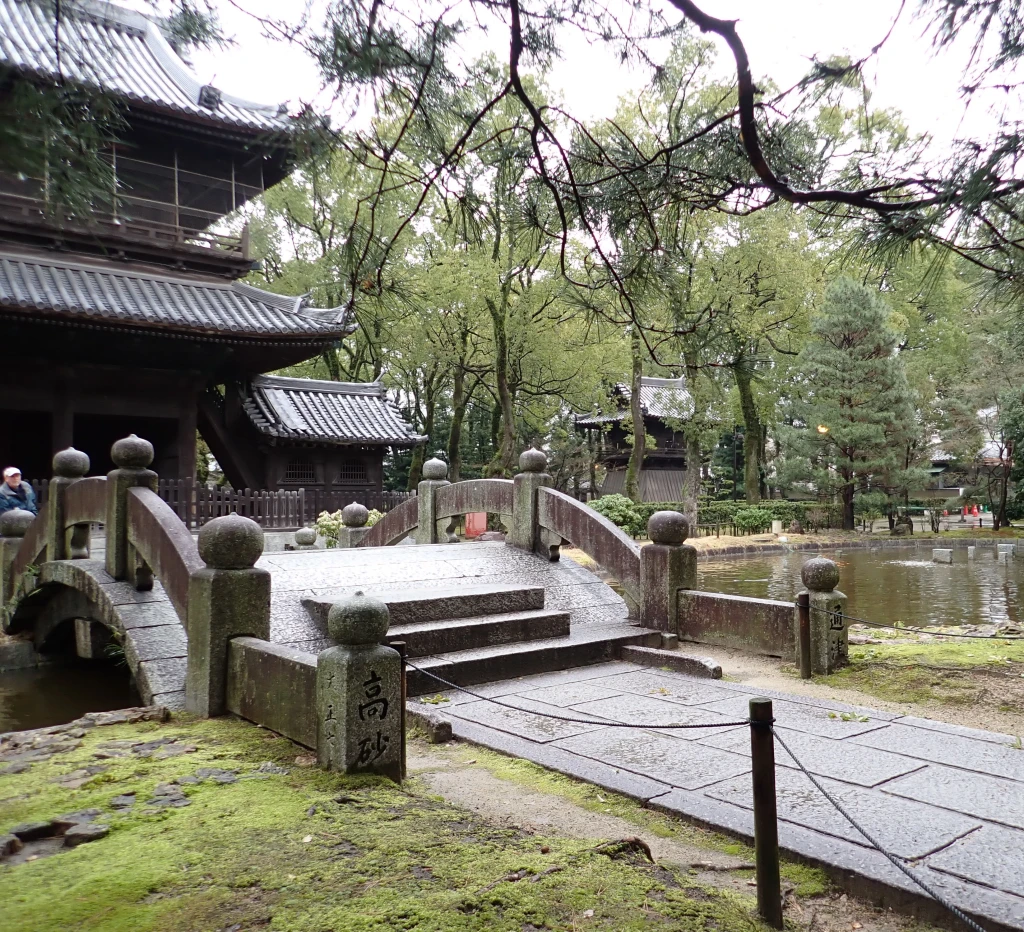
The dew hung like pearls on the delicate, bare stems of young trees. It was peaceful walking along the moss carpeted paths that led us through the gardens.
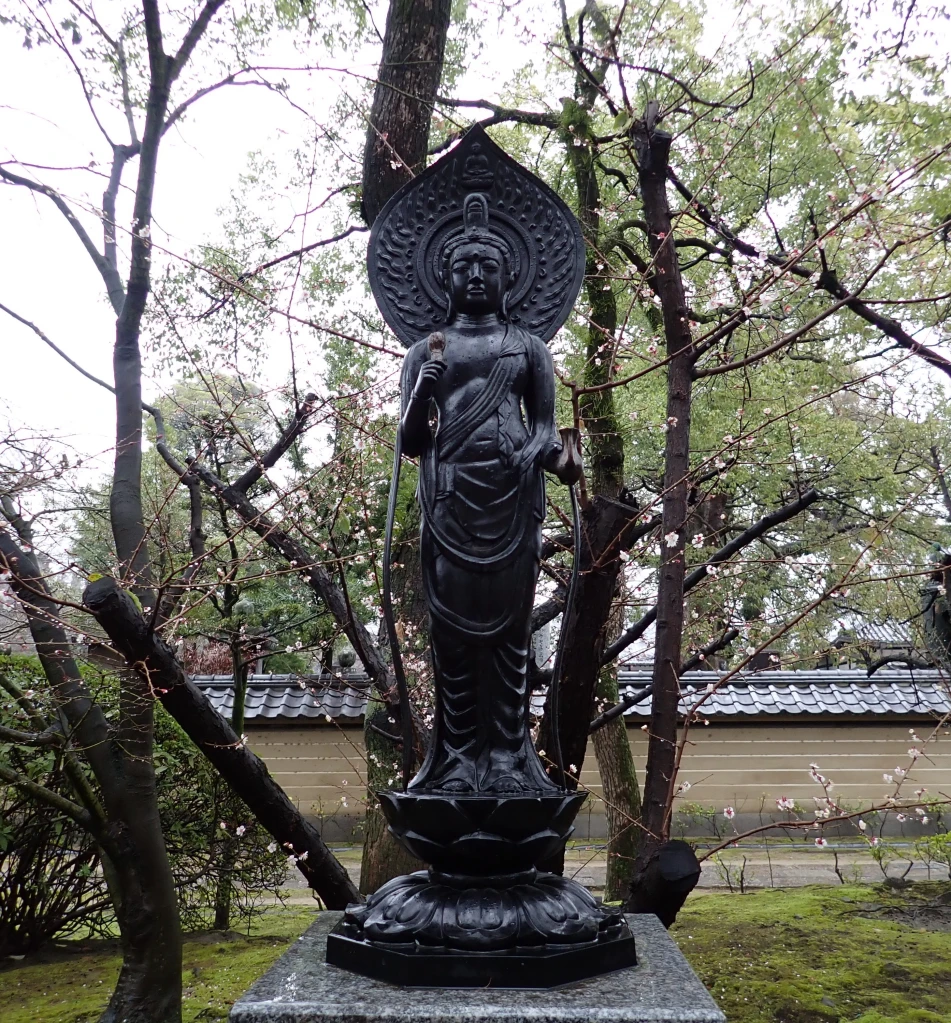
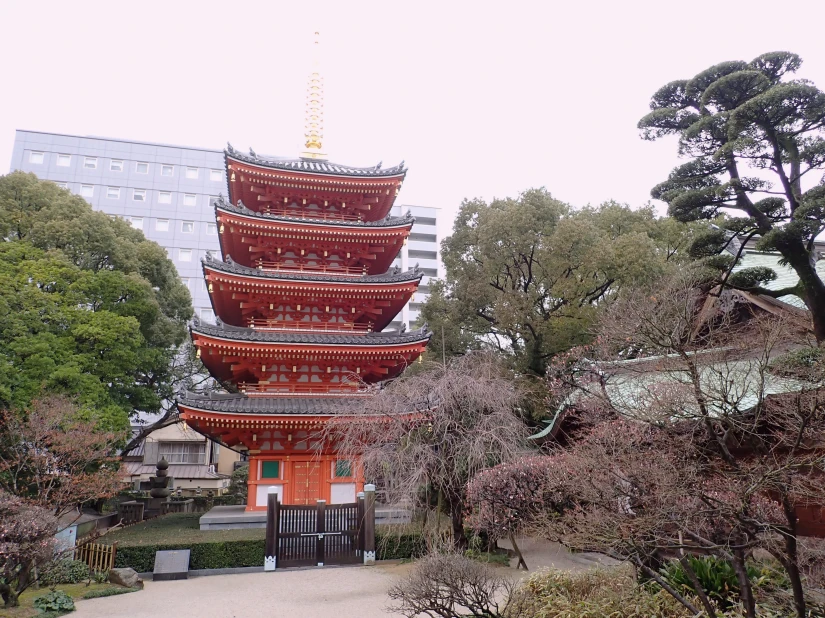
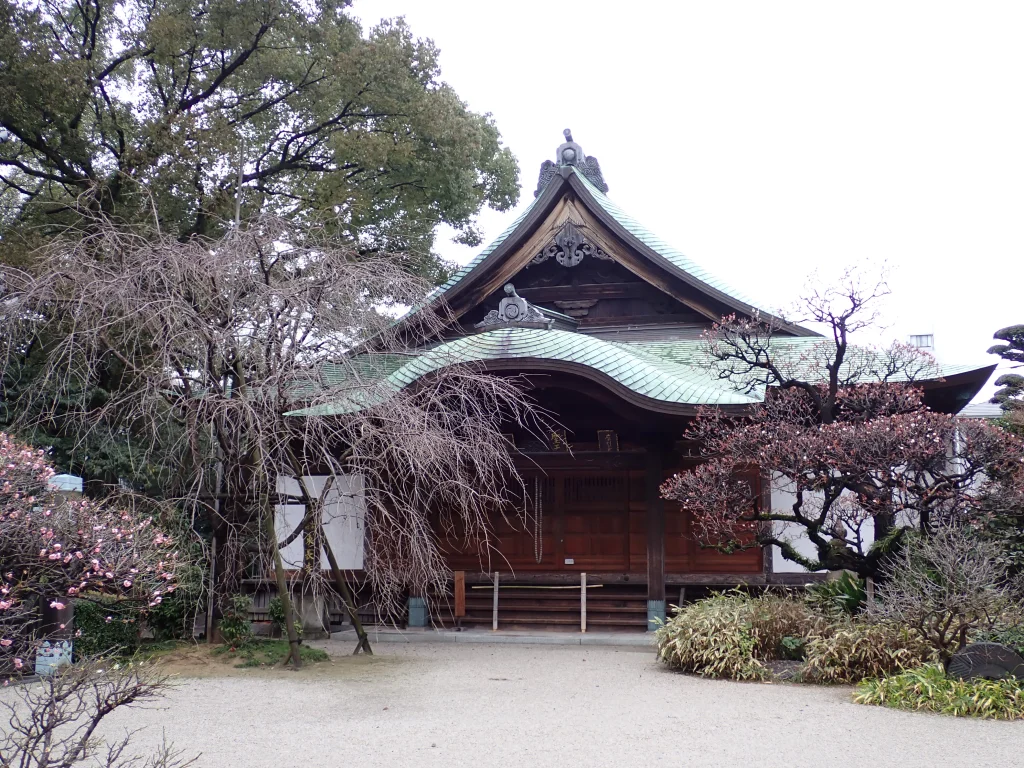
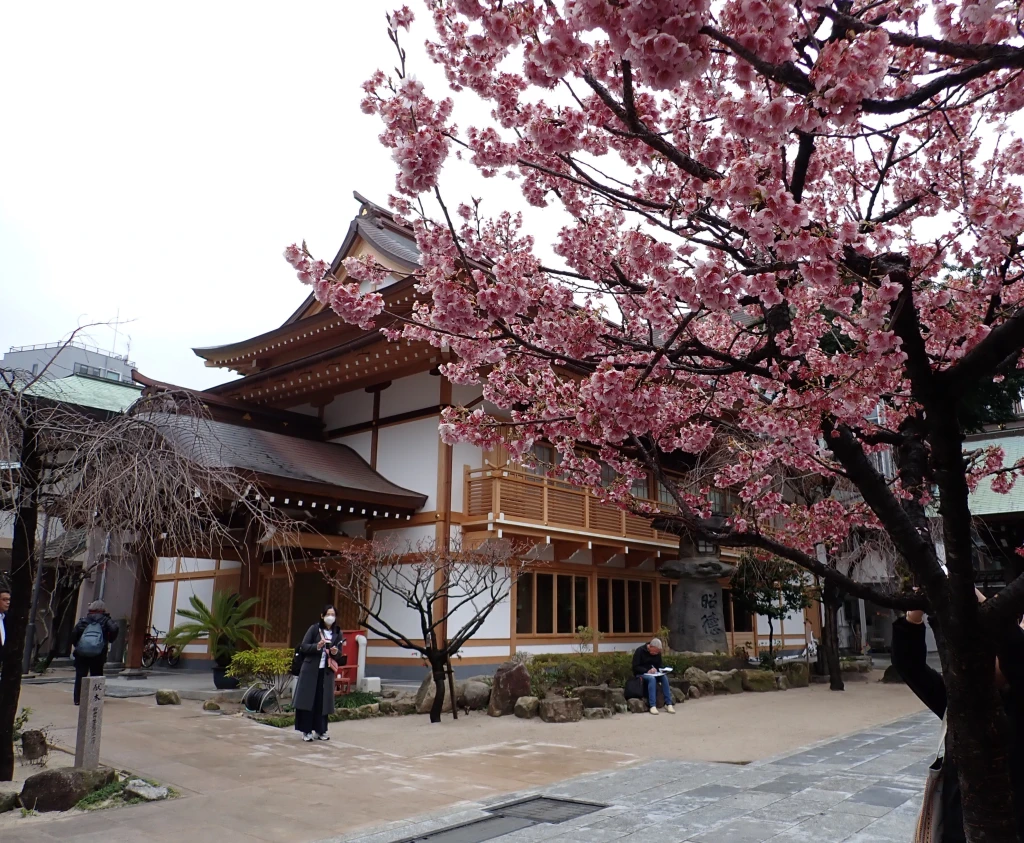
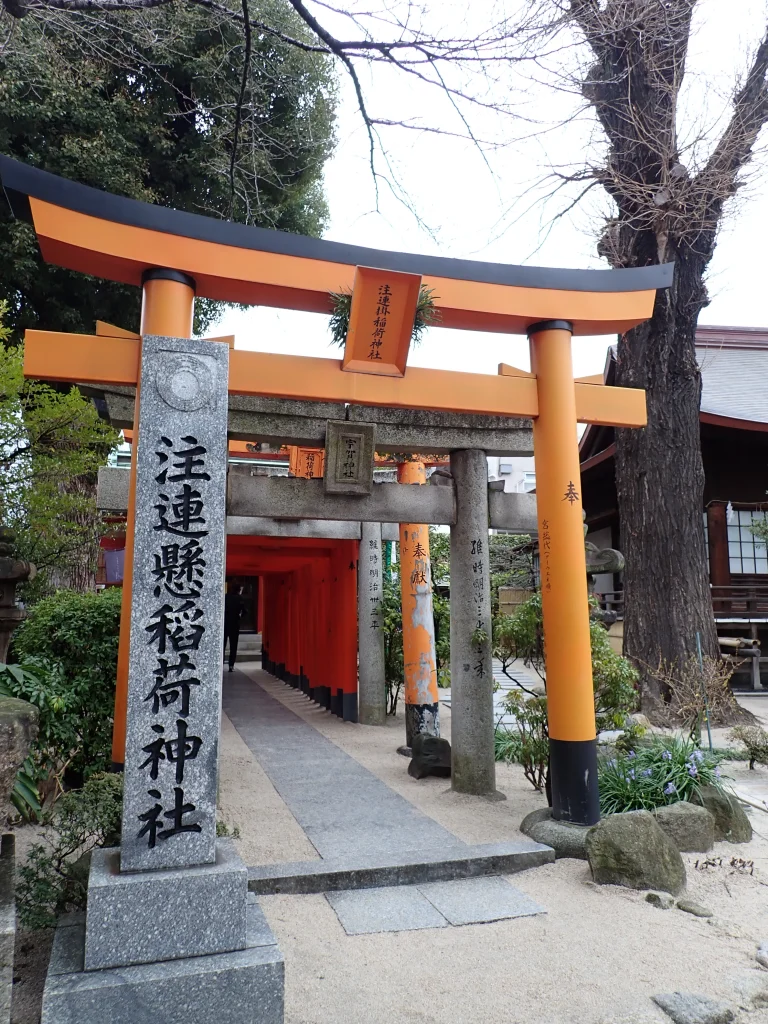
Midday found us in the Canal City vicinity, and we had been told about the renowned, local favorite: Ramen Stadium…perfect for lunch.
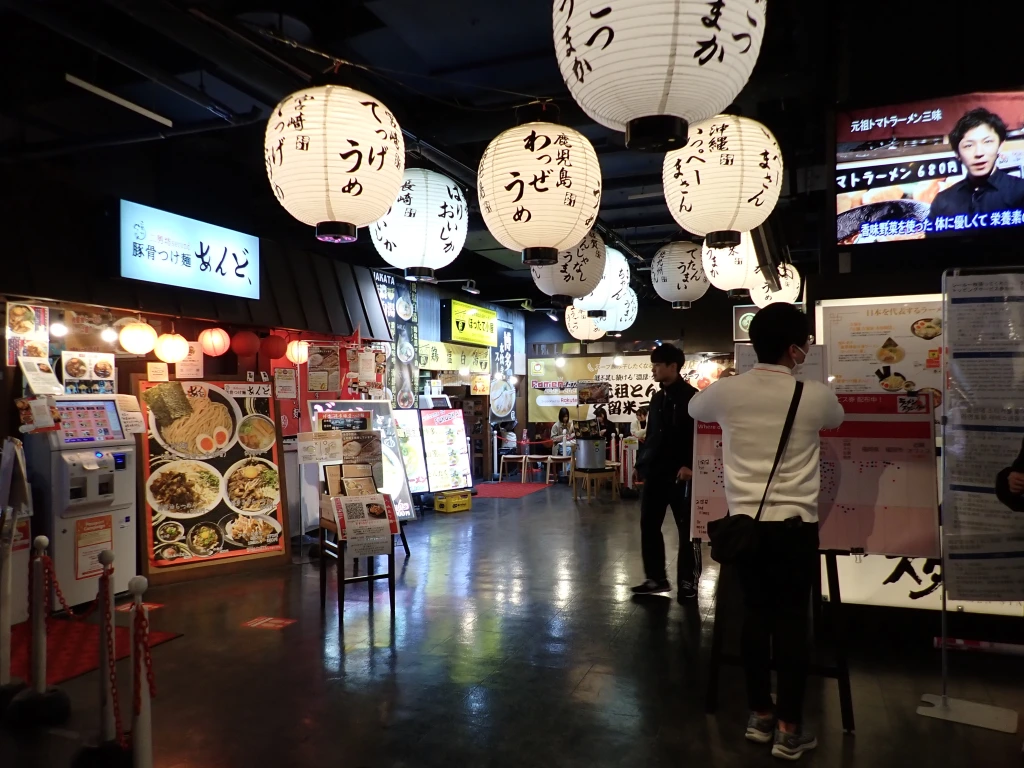
We shopped several ramen restaurant kiosks where (thankfully) each entrée was fully pictured. We confidently ordered a soup dish with pork, seasoned egg, mushrooms and ramen. It was delicious and filling. And as the afternoon rain began to fall, we made our way back to the ship. Fukuoka was a beautiful town to discover!
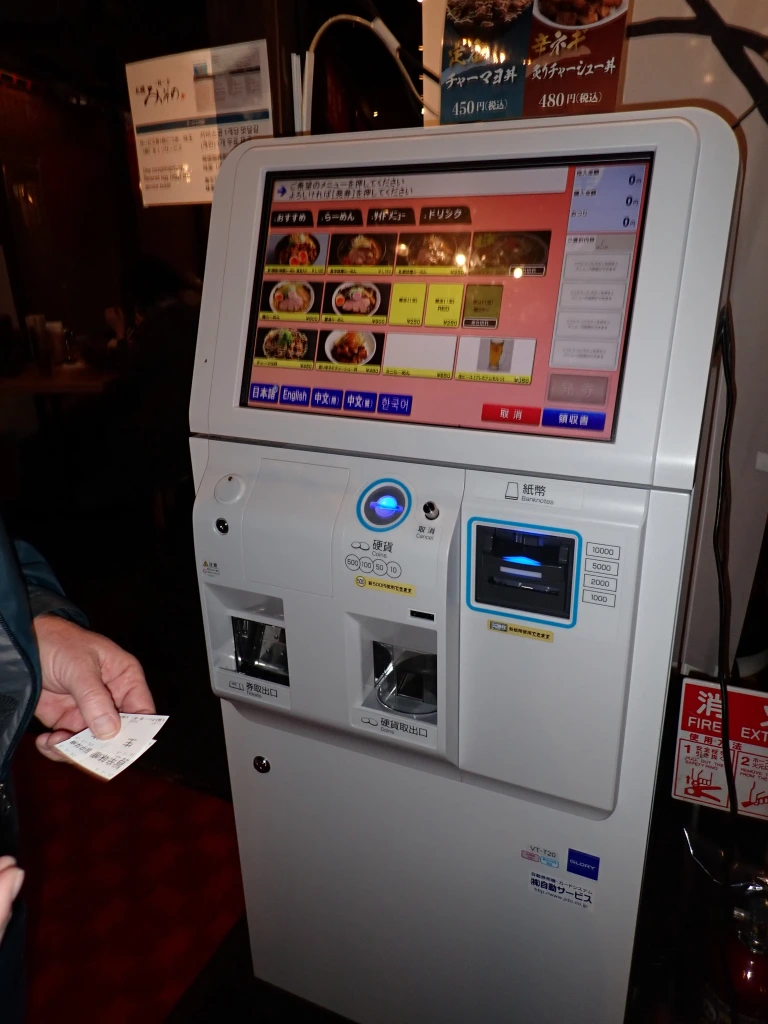
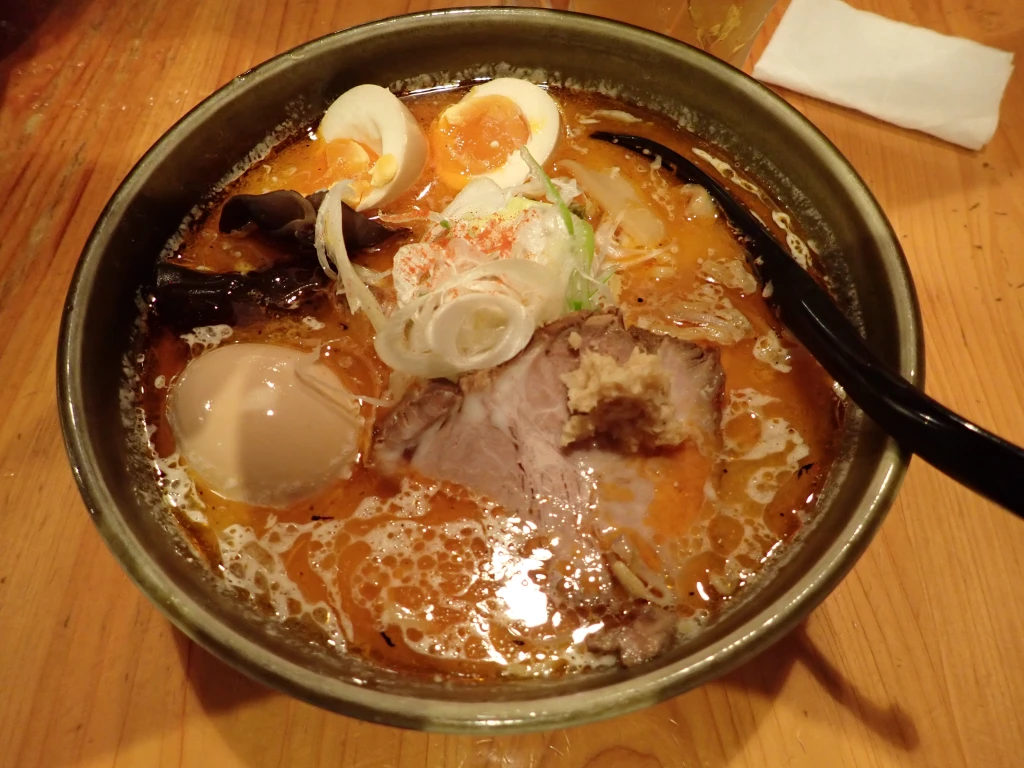
We absolutely LOVED Japan!! Its gracious people, stunning scenery and their lifestyle. We must return someday.
Departing Japan, we steam about 500 miles across the East China Sea for Shanghai. As we near the Chinese coastline, the government has blocked us from Google, WhatsApp, Facebook and other communication accesses of the free world. We’ve elected to turn off Wi-Fi on all our devices while in Chinese ports. A week without internet is good for the soul! Stay tuned…..

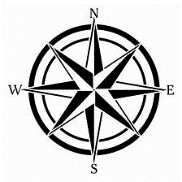
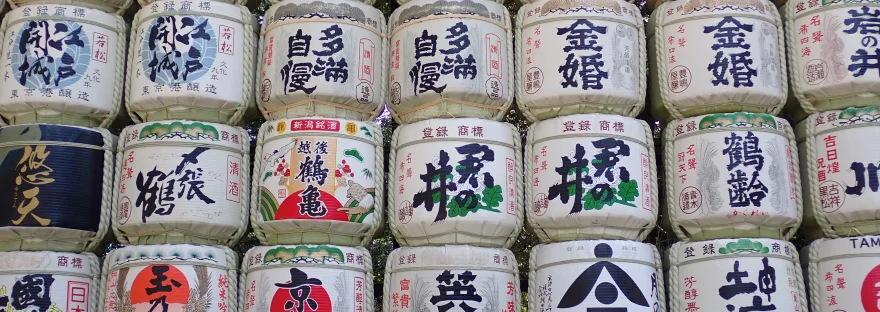
What an adventure!
LikeLike
Thanks Susie! Hope all is well in WI, and Spring has sprung!
LikeLike
Interesting. Looks like you’re having a good time!
>
LikeLike
Thanks Randy & Sandy! Hope the weather is improving in WI and the golf course opens soon-
LikeLike
What a wonderful commentary about Japan! Makes me want to visit, especially Kyoto (although I don’t know if I could survive the sea).
BTW- Did you get a kimono?
LikeLike
The kimonos were all so beautiful! I was tempted to get one, but couldn’t find one suitable for playing golf this summer…LOL!
LikeLike
Enjoyed reminiscing with your visit to Kyoto. Spent many weekends there 1972-1973. Found something new and interesting each time. And, the public toilet system. Who can forget that? Even more advanced today. Did you ever have an opportunity to use one of the original benjo’s. Quite an experience for us westerners. Carry on with your thrilling adventures. Andre
LikeLike
Thanks Andre and Nancy! Hope things are all good in STX and that soon you might be heading back north. Happy Easter!
LikeLike